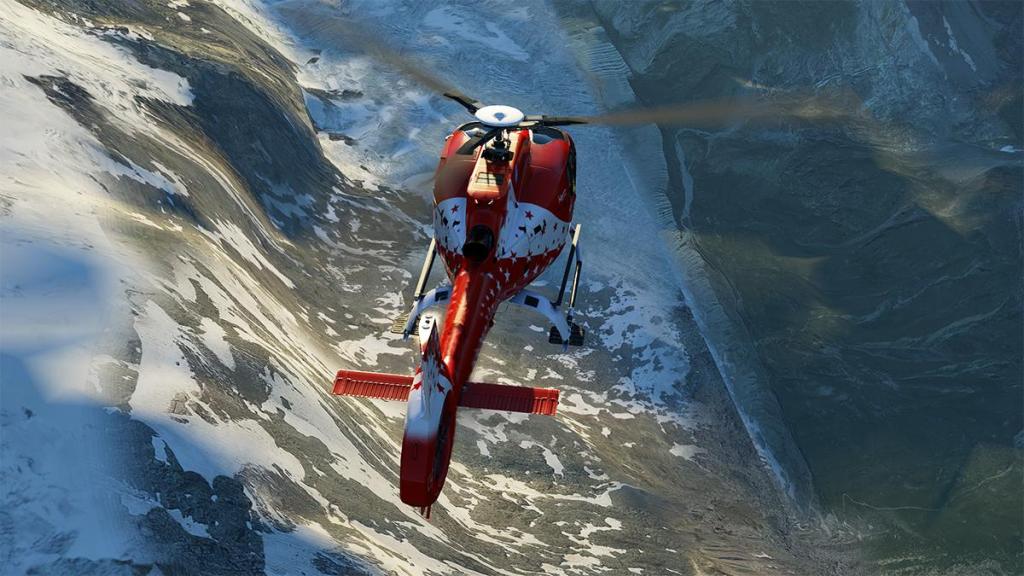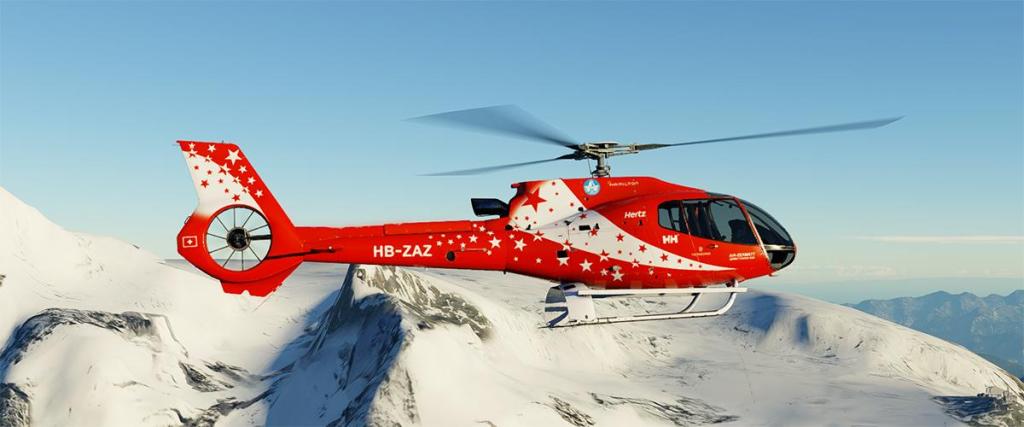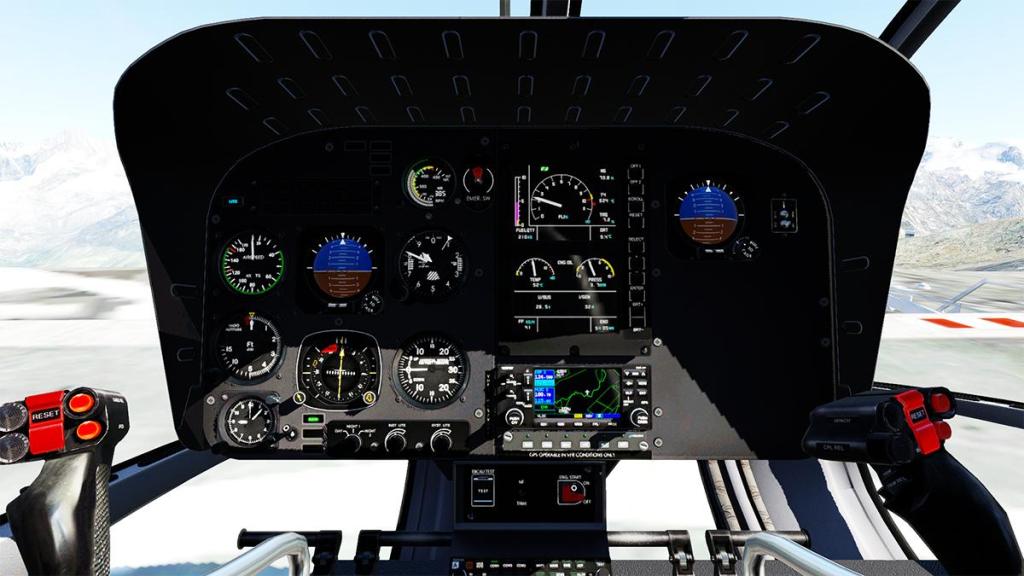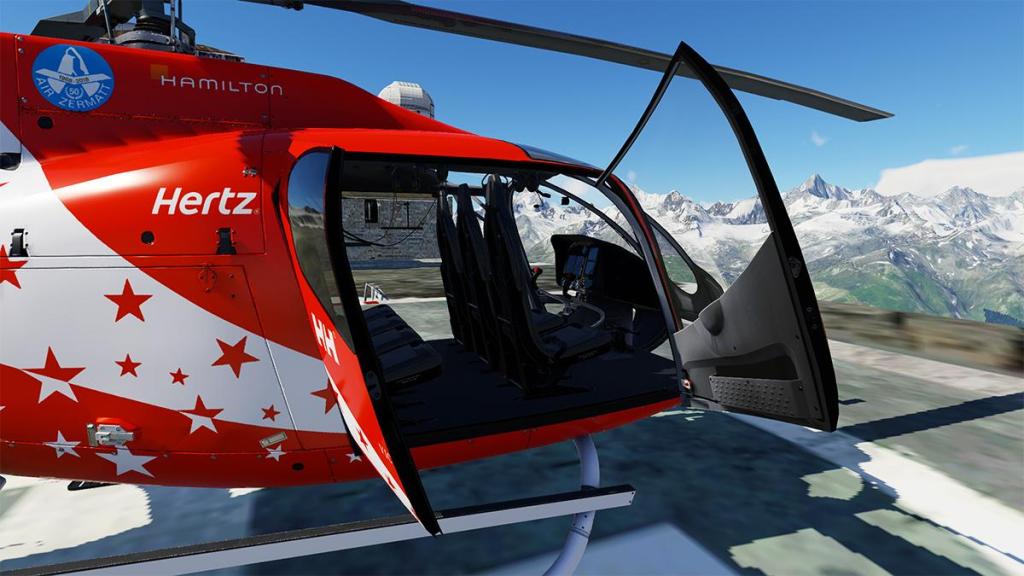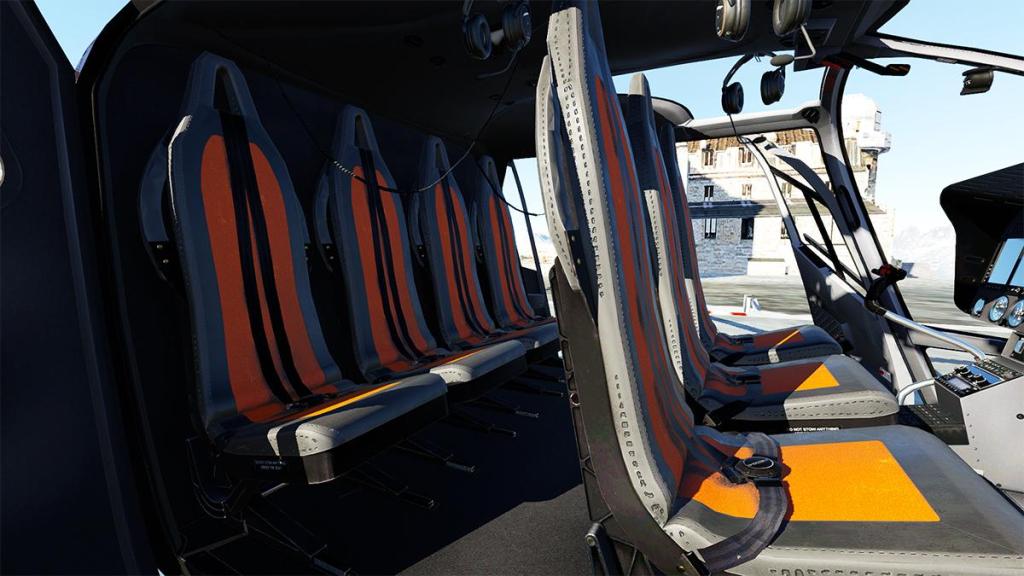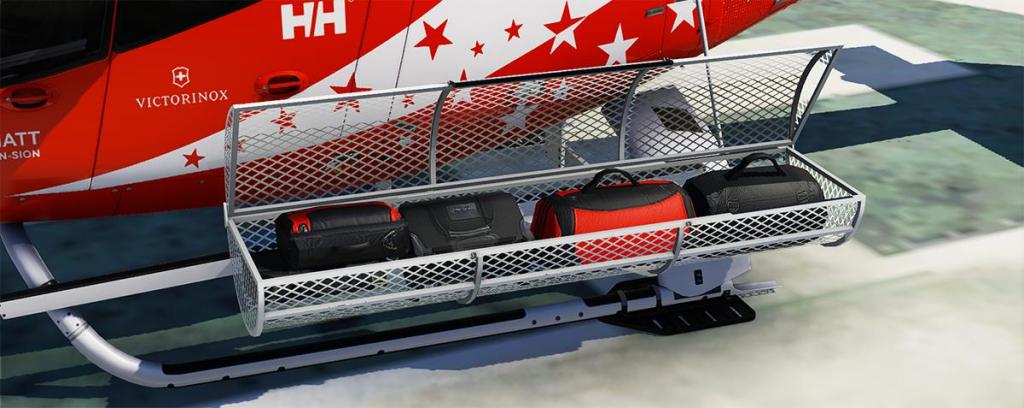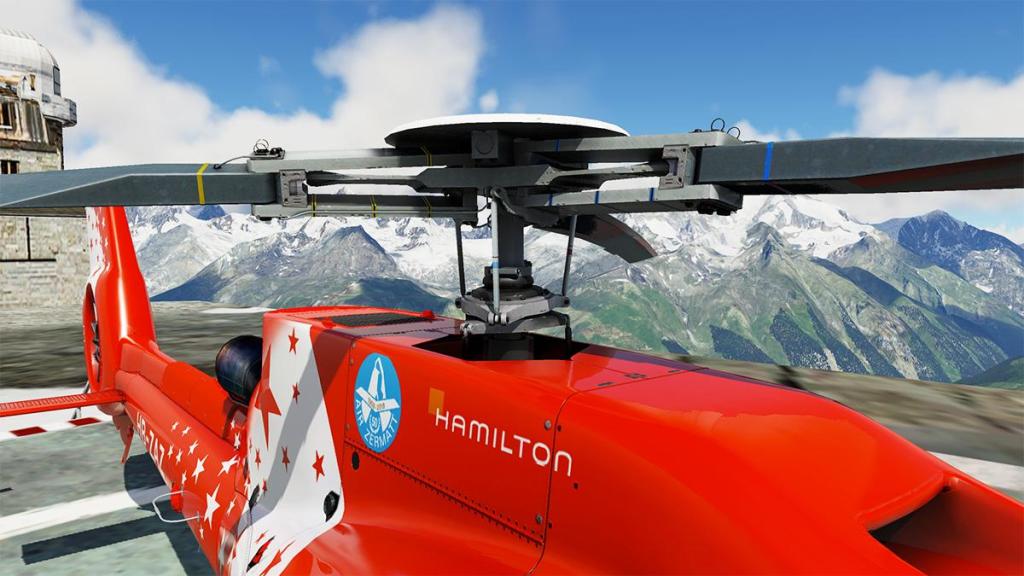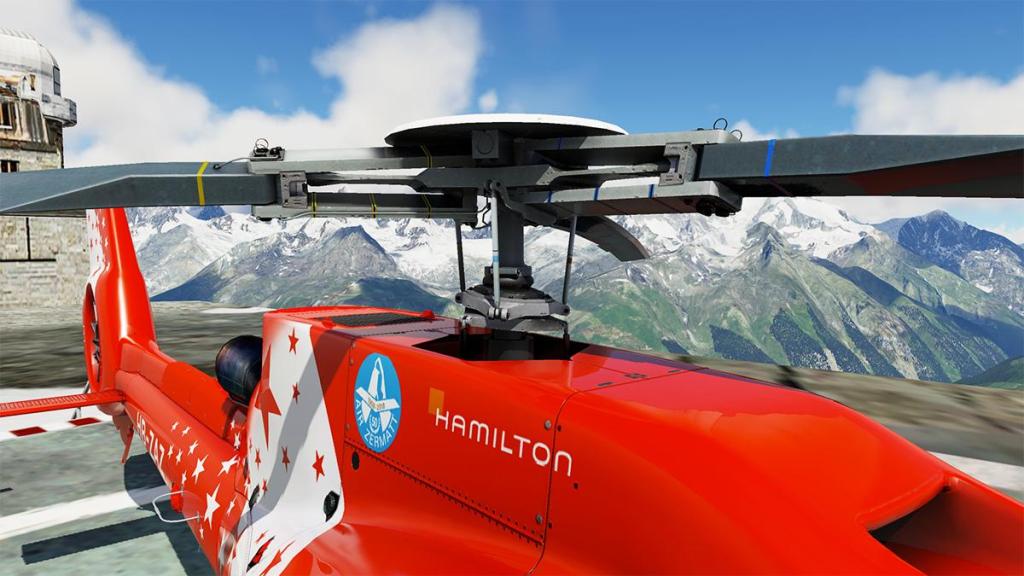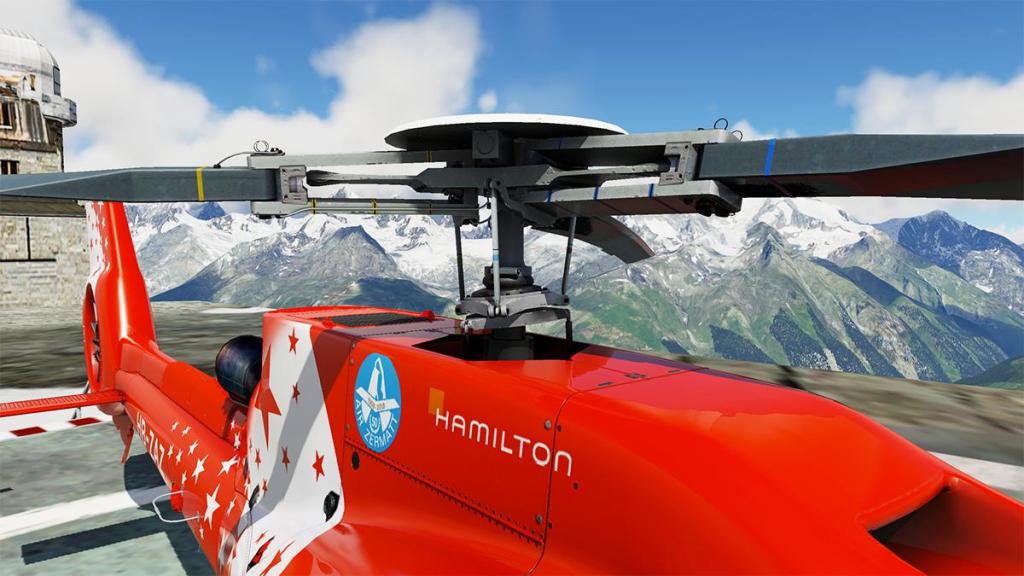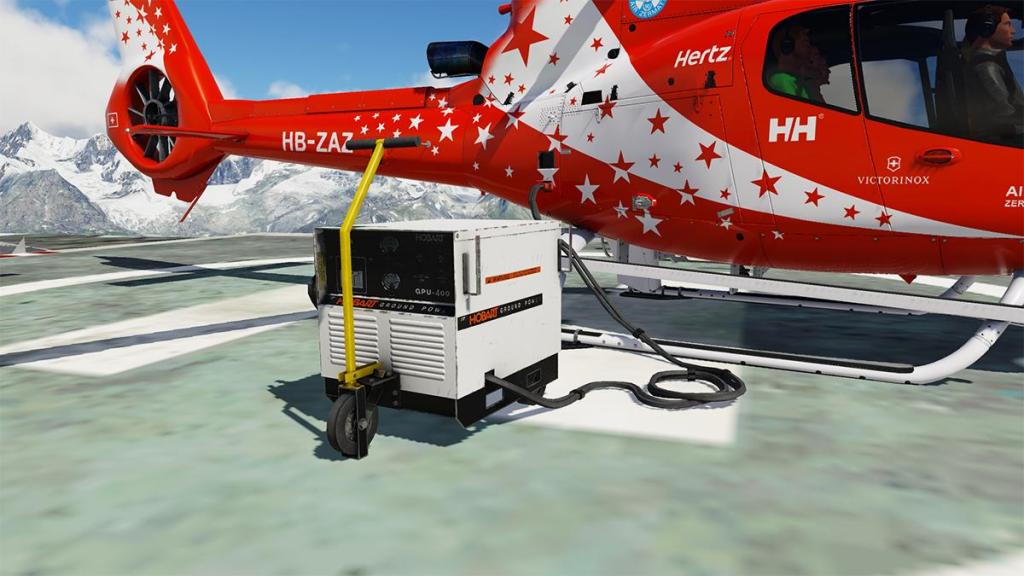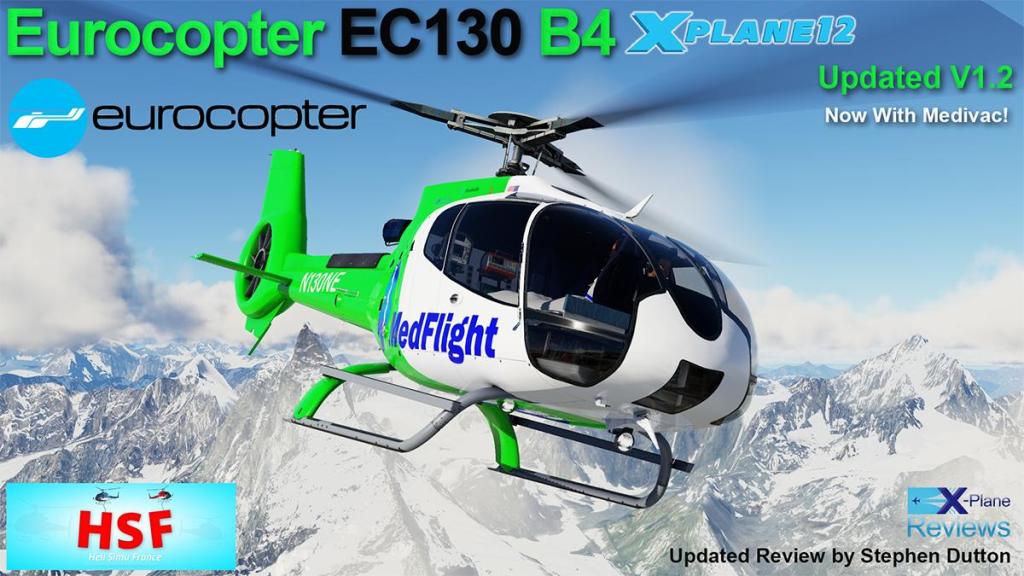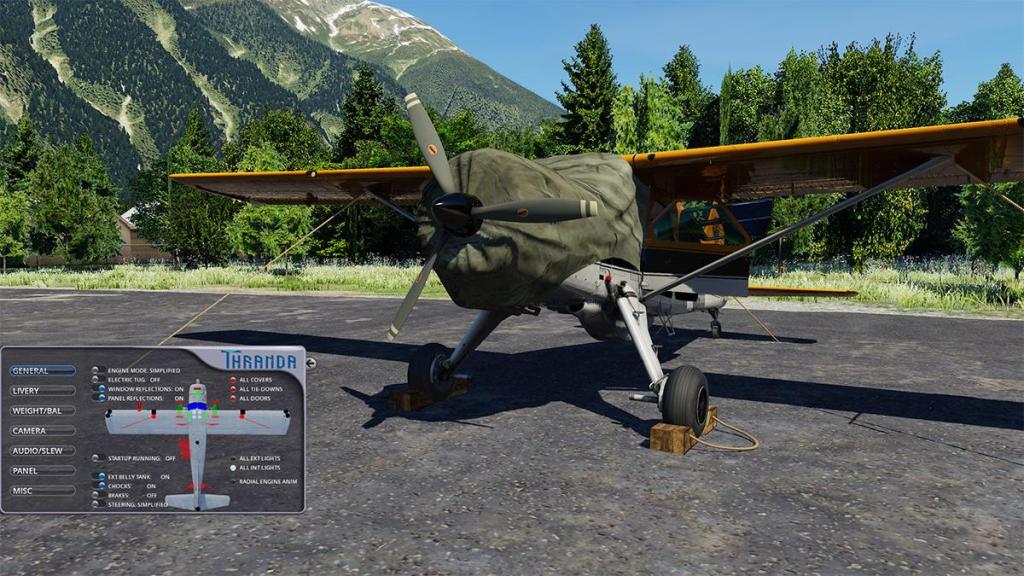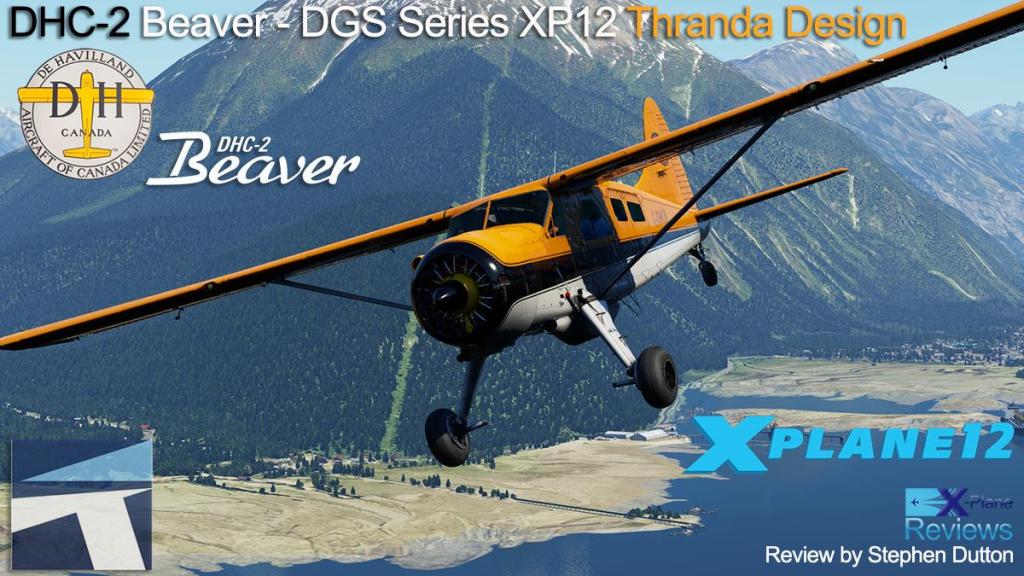-
Posts
2725 -
Joined
-
Last visited
-
Days Won
351
Content Type
Profiles
Forums
Articles
Everything posted by Stephen
-
Scenery Review - YBCS Cairns International Airport Australia by Taimodels Australia is strange place to visit, by sea or air, as you can travel thousands of kilometers past the northern coastline until you reach any major population centre. More oddly is the continent's relationship with Asia, again to the north. In some ways Asia is on Australia's doorstep, but to the Australians they could be half the world away. It is a remote land. You have to in reality fly to Brisbane on Australia's east middle coast, or to Perth on the country's lower west coast if you want to mix with the main population centres, Sydney and Melbourne are set even far lower again, with Melbourne on the southern coast, the rest is just a wide open barren landscape. Those were your only main port choices until only less than a decade ago. Things are changing. Two northern ports however are in particular very important to this change, one is Darwin's International Airport, and it is still not what you would call a big airport as in also being part of a military base. The second is Cairns International, in Far North Queensland (FNQ), and it is strategically Australia's closest airport to Asia. Cairns Airport goes back to 1928, but it was not until the second world war the Australian Government bought the airport for use by the Royal Australian Air Force. In 1943, the main runway was hard surfaced and lengthened to handle military aircraft. It was also used by the United States Army Air Forces as a transport base, with the 33d Troop Carrier Squadron (374th Troop Carrier Group) operating from the base during 1942. During the mid-1960s, the airport was upgraded and the runway further lengthened to 2,020 m (6,630 ft) and also strengthened so jets could land. During the 1970s, Australia's two domestic airlines Trans Australia Airlines and Ansett then provided regular scheduled services out of CNS to most Australian capital cities and also Papua New Guinea, while in 1975 Air Niugini became the first international airline to commence flights out of Cairns, to Port Moresby in Papua New Guinea. In 1982, redevelopment of the airport commenced. This involved further lengthening of the runway to 2,600 m (8,500 ft) (making it the longest runway in Queensland) and construction of a new terminal building. At the end of the 70's decade the second stage of redevelopment was completed. This included a new separate International Terminal, associated aprons and taxiways, costing an estimated $80 million. The main runway was again extended, to 3,196 m (10,486 ft). In 1997, the third stage of redevelopment was completed, during which a three-storey Airport Administration Centre was also constructed providing 4,000 m2 (43,000 sq ft) of office space. In January 2010, Auckland International Airport Limited announced that it had purchased 24.6 per cent of North Queensland Airports (NQA). Then a $55 million Domestic Terminal upgrade was completed in August 2020. Check-in facilities was expanded into a common-user facility for all airlines, and the building again enlarged. Five new jet bridges replaced the existing three old bridges. In early 2023, it was announced that the International Terminal (Terminal 1) would undergo its first major upgrade in April 2023 to a value of AUD$40-50 million. The first of which would feature the installation of four new glass air-bridges and the re-cladding of the exterior of the building. Everything in passenger numbers were building nicely over the last decade, mostly Asian tourists, coming in to view the famous Great Barrier Reef which is situated very close to Cairns, then the pandemic rolled in and the numbers flat-lined, and yet have to recover. But operations are already starting to open up with international Jetstar services to Osaka–Kansai, Tokyo–Narita in Japan. But if one airport in Australia is primed for huge expansion it is CNS Cairns, as noted it is the most northern of Australian Airports, but it's neighbour Papua New Guinea is a big market, not to mention surrounding regional services, FI-FO (Flyin - Flyout) services to the mining industry is also a huge traffic bonanza, and the famous Australian Flying Doctor also has a facility here... Its a busy place, for somewhere so remote. For X-Plane users Australia has not been at the front of quality scenery, in fact for a simple demographic population, the releases have been dismal, there is even a poor representation in freeware, never mind quality payware, but the last few years it has got marginally better. Orbx delivered an excellent Brisbane BNE and even a city package that is well worth the investment, Perth is served by Axonos as is the Gold Coast YBCG. But there is currently no MEL - Melbourne, the biggest port in Australia, and that aspect that shows how lacking we are over here, Canberra, Hobart, Adelaide are also non-existent, the last Alice Springs YBAS actually made me cry it was so badly made. So thank god for Taimodels. First they delivered an excellent YSSY - Sydney International last year, and now here we have again another Australian scenery from Taimodels, this one is YBCS - Cairns International. Obviously I wanted to do the usual BNE-CNS route (QF 5908). Departure from Brisbane was under a heavy low cloud, its been like this for a week now, with the odd patches of rain. The service today is by the Zibo Boeing 737-800, and it is a 2h 5m + flight. You always know when you are approaching Cairns, it is brighter up here, hotter too. Most approaches into Cairns will mean an easy parallel track, mostly you arrive via RWY 15, as RWY 33 is a more tighter approach and departure, actually through the Goldsborough Valley, or a left tight 015º turn after departure. Cairns Airport IATA: CNS - ICAO: YBCS - WMO: 94287 15/33 3,156m (10,354ft) Asphalt Elevation AMSL 10 ft/3 m Your approach is usually via SUNNY, to D16.0 and then track 150º until you collect the ILS (109.9 ICS) I always loved a Cairns Approach, as you have be really on your alerts and as to get the landing sequence right, for there is a wall of high terrain to your west, so you can't afford to mess up the approach. Now you will get your first clear view of YBCS, most of the airport (terminals) are to the eastern side. As you pass over the Barron River, there is some very well designed and placed Approach Lighting, this why you buy Payware, because you get detail. Finals! Both ends of 15/33 have turnarounds... ground linage is very impressive, if a little confusing from the cockpit. No guidance boards, but a marshaller... and there is a little, but still ample clutter, but no animated ramp traffic? so it all feels slightly empty. Looks like Cairns, certainly feels like Cairns... so it must be the Cairns I know so well. _________________ The single long 15/33 magnetic runway 3,156m (10,354ft) now dominates, as the shorter sealed light aircraft runway 12/30 has been decommissioned. The Terminal layout is a square L shape with the earlier Domestic Terminal sited North/South, and the newer International Terminal sited East/West. The airport has two passenger terminals on the eastern side of the airport on reclaimed mangrove swamp. They are approximately 6 km (3.7 mi) north of the Cairns Central Shopping Centre and situated on Airport Avenue off Sheridan Street (Captain Cook Highway). The terminals are in two separate buildings 200 m (660 ft) from one another. The Domestic terminal is number 2 and it has five jet bridges and 17 gates, while the International Terminal is number 1 and it currently has six jet bridges and ten gates in total. Domestic In all my time in X-Plane, the CNS Domestic terminal has been a long rectangle box, with five stick airbridges sticking out, that is freeware for you. But here we get the fully replicated domestic terminal from Taimodels... yes its very good, as Taimodels are very, very good at modeling terminals. Impressive are the five scissor walkways to each airbridge, they are a very nice detail of the terminal's hodge-podge design. Landside is extremely well done, with great glass and signage. But the area is devoid of any life, no passengers or vehicles to make it look like a busy airport, so what is wrong with a bit of life clutter? All of YBCS uses the SAM3 animated airbridges for aircraft connection, plugin is needed of course, but it's a nice interactivity. Arrivals, Departure and the main Terminal internal lounge are all internally present, nicely done, but again devoid of any life, a shame as it's well done. International Terminal I'm not sure of the presented International Terminal is the older, or newer? but will say it is the current facility in being very colourful. The design is very basic, really a big shed style terminal, but again Taimodels have done a perfect job in recreating the look and feel of the facility. The building detail is first rate, there is also the added bonus of animated traffic through the international arrivals area, and even a bus. Internally the International Terminal is well done, bright and very FNQ in style and feel, but again not much activity or passengers. Notable is the glass, as it is nicely transparent, the trees outside will move if the wind is strong enough, and cars passing by helps as well. On the Airside, the departure lounges are done, but its all a bit sparse, so in areas here it feels not completed either with empty shops. So you wish for more as more intimate detail here, as it would lift the scenery to the higher grade it deserves. Cargo The freight zone south of the Domestic Terminal is small, in fact it only has one parking bay (23). But it is a generously sized one and could easily cater for a large B748 or B744 freighter. There is a little bit of cargo clutter that is nice, but again it is sparse around the buildings. Central Control Tower and Airport Administration Centre stand out, both are very nicely done. Important as they are so very visible in the scenery. The Australian design and feel of the buildings is very evident in the scenery, so Taimodels have done a great job in this aspect. There is a basic layout set out in the tower control room, but the heavy blue glass tint makes it (very) hard to see the two approaches. Landside is really good. There is a photo underlay, but it's not at all intrusive. Carparks are well laid out with loads of 3d vehicles, and auxiliary buildings are also numerous and photo correct. More signage would have been nice, but again that Aussie feel comes across well. In clutter, some service vehicles are Qantas branded, but again everything in services is not overwhelming. Southwest is the General Aviation and Services area. This area includes the famous Australian Royal Flying Doctor Service (RFDS), and they have a significant base here covering the Cape York Peninsula, which stretches north to the Torres Strait, and west to the Gulf Country. Again some signage or aircraft denoting the Service would have been nice. Hinterland, GSL and JetAviation are all represented... there are a few static aircraft, but these ramps are usually very crowded and busy, were as here the opposite. Nautilus Aviation and GBR Helicopters are also represented, in fact there is a wide choice of landing pads over most of the scenery. Northwest is the (photographic) Northern Waste Treatment plant, but there are some 3d buildings surround it, making the area realistic. Several points are the missing vehicle Captain Cook Hwy bridges over the Barron River, visible from any northern arrival or departure, it's an ugly join as well. Another missing piece is the retired Bush Pilots Airways DC-3 memorial that is now gone, it was originally a visible statement on the entrance to the domestic airport... it was moved to the western side, then later broken up, the significant white Hercules is however still present but not shown here. Secondly there is only a small section of parameter fencing on the west side, and all the airports boundaries are very well defined, so it is noticeable sadly. Ground textures As this scenery is X-Plane 12 certified, you do get an odd situation considering the foliage. X-Plane 12 has seasons, that turns the foliage into colours or trees with no leaves in the winter... here in FNQ the system works badly against you. First of all in Northern Australia there are no typical four block seasons, just a Dry or Wet season, and it's a tropical clime up here as well, so the trees don't really change that much thoughout the year. But X-Plane does what X-Plane does, and it swaps the seasons around as well, actually the wrong way, as this is the Southern Hemisphere. So what you get are brown autumn trees in the Spring/Summer? here Taimodels have used the XP12 3d foliage trees... .... and it simply doesn't work, as the colours don't match in with the surrounding textures or the area There is a trick to get it right. Turn off the "Time of Day" and set (Customize) your month to June or July, and the colours will come green and right again, odd as those months are set deep into the Australia's winter? Another small nark is the grass. Here you get 3d grass, but the VOD is very small, and so the big bushes here tend to appear and disappear in a heavy line as you move, or when you takeoff/land. Basically you are better off by removing the 3d foliage as the ground is lighter below as well... overall the grass it just doesn't work and it looks artificially horrible. The main textures are okay, certainly not totally realistic, but still in the "not bad" category as well, grain is good, as are the marks, and there is depth to the textures...oil/fuel spills and grunge on the ground are realistic, with a good sense of weathering and usage at the airport. PBR reflective (wet) active textures and burnt-in ambient occlusion is also available here, and are excellent for those sudden explosive summer rainstorms, but there are no winter textures this close to the equator. Only bloat on the copybook are the iron rod straight lines set on the edge of the runways and taxiways. Lighting Overall the lighting is pretty dire.... not a strong area with Taimodels, but Cairns is their worst lighting to date. Approach lighting adheres to the X-Plane 12 standards, but everything else goes downhill from there. Ramps are shown in a soft yellow glow, but most of the working areas and gates are in darkness. Only bright spots (pun intended) are the Domestic and International arrival areas, the rest depends on the odd spot lighting and road lighting, signage lighting is also non-existent. Internal Domestic and International terminals relies on intermittent spot lighting? again it all looks very average. On the GA services side it is lit up like a Christmas Tree with tons of of harsh spot lighting... .... but the real concern here is all the missing taxiway side and centreline lighting, as there isn't any at all, not impressed! Summary Considering the long distances to get to Australia, there is not a lot of quality X-Plane scenery available when you do finally get here. Only Sydney (Taimodels) and Brisbane (Orbx) have extensive payware scenery, Melbourne is sadly lacking even a decent freeware, so don't mention a quality payware. That is the very sad state of affairs down under. But here is their second Australian scenery from Taimodels, and it's set in the Far North Of Queensland, Cairns International. A welcome choice from the earlier cheap YBCS rectangle boxes and five stick airbridges. The CNS scenery shows the absolute strength and weaknesses of Taimodels as a developer, gladly the strong is way better than the few weak here. Starting with the excellent terminal modeling, both externally and internally, it is all very well done and has that Cairns FNQ feel and look. Airbridges are all SAM3 powered and animated, but with marshallers and not guidance boards. Good photo underlays give a solid base that covers all the areas of the airport, including an excellent landside, and the west side General Aviation and Services areas, including the Royal Flying Doctor Service building. Control tower, airport administration building and auxiliary buildings are all very well done. The average is not a lot that could not be fixed up in an update. Far more detail and signage with clutter and landside detail, including passengers and their baggage, both inside and external Terminals would be very nice, some airside animation in service vehicles would also add in some activity... this is all fine tuning stuff, but the real detail required here is the lighting. It needs to be far better than this, but no taxiway lighting is not just a oversight, but is even detrimental to the developers reputation at this level. First thoughts are that any payware scenery, rather than no quality scenery is what is probably delivered here by Taimodels. But that is not the case, as overall this Cairns International scenery for X-Plane 12 is excellent, and far, far better than just filling in a location to fly to. It delivers an excellent representation of Cairns International, in look and feel, and the cost at around US$20 it is value packed as well. Taimodels as scenery developers are extremely good now, but need to do or finish the finer, finer detail to reach that coveted 5 star status, its close here, so very close. But overall Taimodels YBCS is quality scenery for the X-Plane 12 Simulator. __________________________ The YBCS - Cairns International Airport Australia by Taimodels is NOW available! from the X-Plane.Org Store YBCS - Cairns International Airport Australia Priced at US$20.00 Requirements X-Plane 12 or X-Plane 11 (both versions included) Windows, Mac or Linux 8 GB+ VRAM Recommended Download Size: 810 GB Released Nov 3rd 2023 Installation Installation of YBCS - Cairns International Airport Australia is done via download of 775 Mb... There two files TMS_Cairns_International_YBCS (1.42Gb) TMS_YBCS_Mesh (3.05Mb) With a total installation size of 1.48Gb. The "YBCS_Mesh" must be in the lower order in the SCENERY_PACK_INI, and set below the main "TMS_Cairns_International_YBCS" scenery file. SAM Plugin - Scenery Animation Manager - Suite 3.0 or higher is required for this scenery There is one basic installation pdf (3 pages) Review System Specifications Windows - 12th Gen IS1700 Core i7 12700K 12 Core 3.60 GHz CPU - 64bit -32 Gb single 1067 Mhz DDR4 2133 - PNY GeForce RTX 3080 10GB XLR8 - Samsung 970 EVO+ 2TB SSD Software: - Windows 11 Pro - X-Plane 12.07r1 (This is a Release Candidate review). Plugins: Traffic Global - JustFlight-Traffic (X-Plane.OrgStore) US$52.99 : Global SFD plugin US$30.00 Scenery or Aircraft -Zibo Boeing 737X - ____________________________ Scenery Review by Stephen Dutton 14th November 2023 Copyright©2023: X-Plane Reviews (Disclaimer. All images and text in this review are the work and property of X-PlaneReviews, no sharing or copy of the content is allowed without consent from the author as per copyright conditions) All Rights Reserved
-
NEWS! - Scenery Update : LPPT - Lisbon Airport v1.4 by MK Studios Humberto Delgado Airport is quite a mouthful to say to a taxi driver. Known locally as Portela Airport, it is actually an international airport that is located seven kilometres (four nautical miles) northeast of the city centre of Lisbon, the capital of Portugal. LPPT is the 14th-largest airport in Europe in terms of passenger volume, and carries 190,700 tonnes of cargo. Lisbon Airport is also the main European hub to Brazil (they speak the same language), so it is also the largest European Star Alliance hub to South America, and LPPT is an important European hub to Africa. The airport is also the main hub of Portugal's flag carrier TAP Air Portugal, including its subsidiary TAP Express, as well as being a hub for low-cost airlines Ryanair and easyJet. It is a focus city for Azores Airlines, euroAtlantic Airways, Hi Fly and White Airways. The airport is run by ANA Aeroportos de Portugal, which was concessioned to the French group Vinci SA in February 2013. This custom scenery of Lisbon Airport was released by MK Studios in March 2019, it has had a few updates, but this one is the X-Plane 12 transition in v1.4, and the airport now has X-Plane 12 effects and details. Included are nice additions besides the airport is the amount of local Lisbon infrastructure, including the Castelo de S. Jorge, Ponte 25 de Abril Bridge and the massive Vasco da Gama bridge. Features Bother X-Plane 12 and X-Plane 11 versions included Highly detailed buildings, Terminal interior modelled in 3D with correct gate numbers, 3D people inside the terminal, SAM jetways, functional VDGS, New ground technics based on real photographs,, Fully up to date ground layout, Highly optimized lightning with different effect types adjusted for exact type of light and direction needed, 50cm/pixel satellite coverage of the city with autogen, important custom city objects and bridges, Optimized to take advantages of X-Plane features. Note the SAM3 Plugin is required for the scenery. ________________ The LPPT - Lisbon Airport v1.4 by MK Studios is now available from the X-Plane.OrgStore!... Here: LPPT - Lisbon Airport Price is US$24.99 Requirements X-Plane 12 or X-Plane 11 Windows, Mac or Linux 8 GB+ VRAM Recommended Download Size: 2.5 GB Current version : 1.4 (November 9th 2023) ________________ News by Stephen Dutton 🎂 14th November 2023 Copyright©2023: X-Plane Reviews Disclaimer. All images and text in this review are the work and property of X-PlaneReviews, no sharing or copy of the content is allowed without consent from the author as per copyright conditions) All Right Reserved.
-
NEWS! - Aircraft Updated : F-16C Block 52+ Interceptor v1.5.3 by Deltawing Simulations The F16C Fighting Falcon by Deltawing Simulations has been one of X-Plane's quiet achievers. Released exactly 3 years ago, it has had numerous (in additions) updates and refining. Thirteen in fact over those 3 years, including the transition to X-Plane 12. Certainly a very specialised aircraft to fly and use, but the F16 has a very dedicated following and a devotion bordering on loyalty to the aircraft and the brand. The General Dynamics F-16 Fighting Falcon is an American single-engine supersonic multirole fighter aircraft originally developed by General Dynamics for the United States Air Force (USAF). Designed as an air superiority day fighter, it evolved into a successful all-weather multirole aircraft. The F-16 is a single-engine, highly maneuverable, supersonic, multirole tactical fighter aircraft. It is much smaller and lighter than its predecessors but uses advanced aerodynamics and avionics, including the first use of a relaxed static stability/fly-by-wire (RSS/FBW) flight control system, to achieve enhanced maneuver performance. Highly agile, the F-16 was the first fighter aircraft purpose-built to pull 9-G maneuvers and can reach a maximum speed of over Mach 2. Innovations include a frameless bubble canopy for better visibility, a side-mounted control stick, and a reclined seat to reduce g-force effects on the pilot. It is armed with an internal M61 Vulcan cannon in the left wing root and has multiple locations for mounting various missiles, bombs and pods. It has a thrust-to-weight ratio greater than one, providing power to climb and vertical acceleration. V1.5.3 has three different areas that have been refined. Object Fixes, Bug Fixes and Optimisations, mostly all for better X-Plane 12 intergration... the full list is here: Version 1.5.3 (November 9th 2023) Object Fixes - New Particles - 3D fixes - Animation fixes - HOTAS orientated setup - Textures fixes Bug Fixes -Fixed Crash when saving the load out or the pilot from kneepad -Adjusted the switches for start up -Adjusted the friction of the tires -Adjusted ITT Temperature reading -Adjusted MFD Weapon System -Added 2 new modes(accessible via our custom commands (Dogfight, Missile Override)) -DGFT -MSL -Flightpath behaviour when landing corrected -Landing Gear HUD indicator behaving in reversed manner fixed. -RWR not being visible at night -Jettison not working Optimisations -Flight Model Tweaks -HUD performance optimization -MFD Logic Reworked -MFDs performance optimization Current Features: Custom Air to Air weapons (Aim-120, Aim-9) 8 free highly detailed real world F-16 liveries plus our house livery. (many more free to download from org) Highly detailed 3d exterior model Highly detailed 3d cockpit model Highly detailed 3d pilot figure with options for his appearance and helmet type Custom HUD Custom Air to Air Radar Custom selectable action camera angles. Custom JHMCS HUD Dual Custom MFD displays with pop up option Custom programmable DED Custom remove before flight objects Almost every possible animation in and out of the plane Tailhook Real sounds 4K textures Realistic startup sequence Custom particles system Custom cockpit lights Custom external lights Customised payload that includes : Optional wing smokers Optional wing fuel tanks Optional centerline fuel tank Optional centerline travel pod Optional CFT fuel tanks Support for both X-Plane 11 and X-Plane 12 ___________________________ Yes! - the F-16C Block 52+ Interceptor v1.5.3 by Deltawing Simulations is NOW available from the X-Plane.Org Store here : F-16C Block 52+ Interceptor Price is US$35.00 Currently on SALE, for US$31.50 or 13% off Requirements X-Plane 12 or X-Plane 11 (both versions included) Windows, Mac (M1 and M2 are supported) or Linux 4 GB VRAM Minimum - 8 GB+ VRAM Recommended Download Size: 830 MB Current version: 1.5.3 (November 9th 2023) Design by DeltaWing Simulations Support forum: https://forums.x-plane.org/index.php?/forums/forum/585-deltawing-simulations/ https://deltawingsim.com/ News by Stephen Dutton 14th November 2023 Copyright©2023: X-Plane Reviews (Disclaimer. All images and text in this review are the work and property of X-PlaneReviews, no sharing or copy of the content is allowed without consent from the author as per copyright conditions) All Rights Reserved
-
News! - Scenery Upgraded : LXGB - Gibraltar International Airport XP12 by Skyline Simulations Skyline Simulations have upgraded their LXGB Gibraltar scenery to X-Plane 12 (X-Plane 11 is still available). This is an upgrade scenery, but earlier X-Plane 11 Gibraltar purchasers can get this new XP12 version for 25% off. Gibraltar International Airport, previously known as North Front Airport, is the civilian airport that serves the British overseas territory of Gibraltar. The runway and aerodrome is owned by the Ministry of Defence (MoD), and operated by the Royal Air Force (RAF) as RAF Gibraltar. Civilian operators use the separate civilian-operated terminal. National Air Traffic Services (NATS) hold the contract for provision of air navigation services at the airport. X-PlaneReviews did a full in depth review of the X-Plane 11 release of the LXGB scenery... Scenery Review : LXGB - Gibraltar International Airport by Skyline Simulations Features X-Plane 12 Version UHD Custom Textures using the latest painting techniques Super Detailed 3D modeling Handcrafted solid Rock of Gibraltar with custom night lights and important buildings Animated road traffic crossing the runway for takeoff and landing PBR Materials on buildings XPEco-subsystem XPLCity with Hard surface and lighting system Animated Marshallers Animated Radar Detailed UHD Ground with PBR and decals Ultra High resolution custom orthoimagery for the airport Thousands of 3D custom static objects Accurate Gibraltar area using original imagery and OSM data Amazing and detailed Night Textures Animated cargo boats FPS Friendly Including LXGB Charts Full Ground Traffic To understand Gibraltar is to understand it's extremely important strategic position on the western entrance to the Mediterranean Sea in the pincer shape of the Straits of Gibraltar (also known as the "Pillars of Hercules") that separates the Sea from the Atlantic Ocean, it is also the closest point to the African Continent at 14.3 kilometres (8.9 miles; 7.7 nautical miles) of ocean at the Strait's narrowest point. So Gibraltar is a military base in succession with a supporting commonwealth community. Note the SAM3 Plugin is required for the scenery. ________________ The LXGB - Gibraltar International Airport XP12 by Skyline Simulations is now available from the X-Plane.OrgStore!... Here: LXGB - Gibraltar International Airport XP12 Price is US$20.20 Requirements X-Plane 12 Windows , Mac or Linux 8 GB+ VRAM Recommended Download size: 4.4 GB Current version: XP12 (November 8th 2023) Users of Gibraltar XP11 can get this new XP12 version for 25% off. Coupon code included in the Original Gibraltar XP11 invoice. ________________ News by Stephen Dutton 🎂 9th November 2023 Copyright©2023: X-Plane Reviews Disclaimer. All images and text in this review are the work and property of X-PlaneReviews, no sharing or copy of the content is allowed without consent from the author as per copyright conditions) All Right Reserved.
-
NEWS! - Scenery Released : KAUS-Austin Bergstrom Intl Airport XP12 by Dominicdesignteam DDT or Dominicdesignteam have released for the X-Plane 12 Simulator, KAUS-Austin Bergstrom Intl Airport, in Texas. Austin–Bergstrom International Airport, is a Class C international airport in Austin, Texas, United States, serving the Greater Austin metropolitan area. Located about 5 miles (8 km) southeast of downtown Austin, it covers 4,242 acres (1,717 ha) and has two runways and three helipads. It is on the same site of what was once Bergstrom Air Force Base. The airport and U.S. Air Force base were named after Captain John August Earl Bergstrom, an officer who served with the 19th Bombardment Group. The airport replaced the Robert Mueller Municipal Airport as Austin's main airport in 1999. KAUS is the third busiest airport in Texas, after Dallas/Fort Worth International Airport and George Bush Intercontinental Airport (Houston). As of 2018, there are 510 arrivals and departures on the typical weekday to 76 destinations in North America and Europe. Scenery Features include... PBR Textures Dynamic Lighting Real Ground Markings Custom, painstakingly hand-crafted pavement, showcasing all imperfections including dirt ________________ The Dominicdesignteam KAUS-Austin Bergstrom Intl Airport is now available from the X-Plane.OrgStore!... Here: KAUS-Austin Bergstrom Intl Airport, Price is US$18.99 Requirements X-Plane 12 or X-Plane 11 Windows, Mac or Linux 8 GB VRAM Minimum Download Size: 5 Gb Current Version: 1.0 (November 7th 2023) ________________ News by Stephen Dutton 🎂 8th November 2023 Copyright©2023: X-Plane Reviews Disclaimer. All images and text in this review are the work and property of X-PlaneReviews, no sharing or copy of the content is allowed without consent from the author as per copyright conditions) All Right Reserved.
-
NEWS! - Sound Pack Released : Blue Star Simulations have released an extensive ToLiSS A319 sound package I'm a huge fan of quality sound packages for airliners, and Blue Star Simulations do some of the very best sound packages for the X-Plane Simulator. This package is for the ToLiSS A319 CFM Next Gen aircraft, which oddly hasn't had one before... but it is well worth the wait. This sound pack includes 13,500 lines of code and over 900 sound locations, totaling 1.5 GB of pure sound recorded from a real A319 using professional equipment. Includes... CFM56 Engine Sounds: Real engine samples with accurate thrust-dependent sounds. Bass vibrations are audible when the aircraft is off the ground, especially in high N1% when the aircraft is no longer grounded, transferring vibrations to the fuselage. Engine sounds vary with speed, altitude, and blade angle, getting quieter at higher altitudes where the air is less dense. Exact engine startup, shutdown, reverse, and air rush on spool sounds are included. Turbulent engine roar is present from the back of the plane, and some of it remains in front when the gear doors are open and close to the ground. The famous CFM56 whine is audible and varies with the angle of attack, becoming quieter with speed and altitude increase. Systems: Each system in the aircraft has detailed sounds, including keel outflow valve sounds, PTU slow, fast, and self-test modes, ventilation system sounds, various cabin fans, galley fans, and toilet fan sounds, hydraulic system (Y, G, B,) sounds, electrical system sounds, APU sounds, brake fan, wing pumps, packs sounds, and more. Mechanical sounds inside the cockpit, such as selectors, switches, pushbuttons, levers, autopilot disconnect and connect actuator sound, door energizer clicking sound, seat motor sounds, oxygen system hiss, hand rests, cockpit door sounds, throttle quadrant sounds, flap lever sounds, gear lever sounds, FCU buttons, switches, and dial sounds, wiper positions sounds, spoiler lever sounds, and more, are included. Surrounding ambiance includes wind and turbulence sounds on various aircraft surfaces, rain sounds varying based on intensity and speed, external rain sounds, street and airport noise, airflow around the fuselage, turbulence sounds during takeoff, landing, and turns, and more. Mechanical Items: Door opening and closing sounds for all doors, flap motor sounds during transition, parking brake and brake application sounds, brake motor bumps, PTU sounds based on actual PTU operation, and reset sounds are included. Vibrations and Ground Effects: Touchdown sounds for main gear and nose gear vary based on the softness/hardness of the landing, with over 20 samples for every gear. Gear vibrations, bumps, shakes, rattles, flap-bouncing sounds, main panel rattling sounds, centerline and nosegear bumps and touches, various concrete rolling and rumbling sounds and rubber vibration sounds are present. People: Different sounds for people boarding, walking, and clicking seatbelts based on the flight stage are included. Flight attendant sounds during boarding, inflight, and deboarding are present. The sound pack offers options for four different airlines, with a manual for adding custom airlines. Occasional toilet flush sounds and seat belt clicking sounds are dependent on the seatbelt sign. The package was created by a real-world pilot and a musician with in-depth knowledge of transferring the perception of your ear in reality to your speakers. All sound locations are accurately placed, with correct attenuation and cones. There are three videos simulating the sounds package... Designed by Blue Star Simulations Toliss is not responsible for this sound pack and cannot provide support, directly or indirectly. For tech support on theses sound packages please contact Blue Star Simulation [email protected] ________________ The Blue Sky Star Simulations - BSS A319 CFM NEXTGEN SOUND EXPERIENCE is now available from the X-Plane.OrgStore!... Here: BSS A319 CFM NEXTGEN SOUND EXPERIENCE Price is US$19.99 Requirements Requires the Toliss A319 Will not work on any other A319-A320-A321 aircraft Download Size: 1.3 GB Current Version: 1.1 (Nov 6th 2023) ________________ News by Stephen Dutton 🎂 8th November 2023 Copyright©2023: X-Plane Reviews Disclaimer. All images and text in this review are the work and property of X-PlaneReviews, no sharing or copy of the content is allowed without consent from the author as per copyright conditions) All Right Reserved.
-
Aircraft Update Review : McDonnell Douglas MD-11 v1.08 by Rotate Up at dawn, time to load the freight... we are at Leipzig/Halle Airport EDDP, for a routine flight to the UPS Facility at Philadelphia, US, KPHL. God it's a "Beast" of an aircraft is the McDonnell Douglas MD-11, but Airhaulers love the "Diva". Those ghost pilots that fly at night, unseen, unknown, but moving tons cargo around the world for your livelihoods or self-indulgence. You start the centre positioned No.2 Engine first to provide power and air-conditioning and other AUX systems, then pushback on time (note the BetterPushback issues have now already been fixed). Then once out of the bay, you can start the other two General Electric CF6-80C2D1F high-bypass turbofan engines, rated at 52,200–61,960 lbf each. I'm not going to shy away from the reality. To get the DC-11 ready for flight, there is a lot of filling in of data and setting up of the route. There are a few helpers in the menu. But overall the developers approach is to make this aircraft as realistic and authentic as possible, that is good obviously, but a bit daunting if you are not familiar with these machines and their complex Honeywell Pegasus MCDUs. The instrument panel and DU (Display Units) have very different layouts as well, their operation are also different from most other flightdecks. But these aspects are also the attraction to the aircraft, you are flying and mastering something entirely different, that is also the seduction of the MD-11. The focus with the release of X-Plane 12 in it's beta phase... a Version 1.05 beta (September 26th 2022) allowed the Rotate MD-11 aircraft to function in the new Simulator version. Then two updates followed with v1.05 (October) and v1.06 (December) and both were focused on X-Plane 12. The final DC-11 (official) release for X-Plane 12 was the v1.07 update in March 2023. For a comprehensive look at the aircraft, here is the X-PlaneReviews review of the XP11 release; Aircraft Review : McDonnell Douglas MD-11 by Rotate If you are a "hauler" in these "Heavy, Heavy" aircraft, say a B744F, B748F and the MD-11F. The critical phase is just after you leave the runway. You need to climb (obviously), but with a really heavy aircraft, brimmed with Cargo and Fuel, then you need to coax the machine into the air, then have the skill to keep it up there. You pitch is critical, too low and you lose height, too high and you stall, badly and literally fall out of the sky. Between the two barrier zones to a perfect climb-out, and you usually do it very carefully and slowly... the MD-11 is totally like this. Once settled in at 12,000ft you, then have more flexibility on setting speed (usually for me around 295 knts) and an altitude climb-rate (1800 fpm), down to 1,000 fpm from 26,000 ft up. You would never go to full cruise altitude either, usually say 32,000 ft for the first 500 nm to burn off weight in fuel, then step up 2,000 ft at a time to your cruise altitude, here 36,000 ft, you step the speed as well, from m.76, to the cruise speed of m.82. I learnt these tricks/skills well on an underpowered Boeing 747-200 F with 46,300–54,750 lbf of thrust, compared to the 66,500 lbf thrust of the latest GEnx-2B67 on the B748F and the 52,200–61,960 lbf available here. Before we get into the update... In doing reviews you are also evaluating the current situation of the Simulator as well (X-Plane12.07r1), and how it interacts with your flying. There has been a lot of development around the weather this year in X-Plane 12 by Laminar Research, some changes were really bad very early in the year, but with lots of improvements of reading GRIB forecasts which are based on the National Weather Service (NOAA) since v12.06. But real world simulations are getting very good in X-Plane... Here I was approaching the European Coast and the weather was getting quite nasty. Navigraph have this year added a weather component to there excellent "Charts" application, and you can see the weather topographic mappings, look outside of the MD-11 and I have the same precipitation areas around me... I needed to climb, but instead stayed at FL320 until I saw a gap (shown on the topographic) to finally climb from below the weather, to be on the top (FL360)... I was impressed with not only the exact weather mirrored on the Application, to the weather situation around me, and to take advantage of that... it also shows how X-Plane in this area is also getting very close to the real weather situations we crave, admittedly there is still more development needed for upper level Cirrus clouds and shading, but the improvements are there to not only see, but to feel as well. Update v1.08 But to the business at hand, the latest v1.08 update. There is again a massive list of fixed and improved areas on the XP12 MD-11 in this update, but first three new additions. Added into the MD-11 cockpit are two EFB (Electronic Flight Bags) or tablets, one positioned each side of the pilots. You can adjust the angle of the EFBs to your personal preference, but you can't hide them. Power switch is lower left corner. There are eleven tabs to select from. They are an amalgamation of the MD-11 Menu, and AviTab (Plugin Required). The list is HOME, W&B, GndOps, Fails, Man, Chart, Maps, Apts, Rtes, Data and Notes. All HOME (Options), W&B (Weight & Balance), GndOps (Ground Operations) and Fails (Failures) are all direct copies of the same Menu items found in the Plugins/Rotate MD-11/Aircraft Menu. Basically they have been repositioned there in the tablets for convenience. The other seven tabs are the various AviTab tools set differently. MAN - Manuals This MAN option allows you to navigate folders to find Manuals or Tutorials within the Computer's file system, here set in Windows, and you can display pdfs on the screen. Its clever, handy but pretty basic as well. Chart - AviTab You can insert a navigation chart or other document in the AviTab "charts" folder (X-Plane 12/Resources/plugins/AviTab/charts) and have it appear in this tab... It will also show pdf files, ideal for loading in SimBrief "Briefings". Basically this option would be used if you didn't have a Navigraph or another chart account. Maps Is the standard AviTab Maps function. Apts - Airports Airports is the standard AviTab function to get airport information, and if you have a Navigraph account and access to their charts Rtes - Routes This is the "Route Wizard", A tool to compute a route for you to enter into the aircraft's FMC. First you add in your Departure Airport, then your Arrival Airport and it creates a route for you. Data You use the "Data" tab to authorise accounts, like for Navigraph and ChartFox, both charts can be viewed in the "Apts" (Airports) tab when selected. Notes This tab uses the AviTab "Notes" Function... Honestly I can't get it to work, there are no manual notes and the Rotate Developer doesn't know either... but the idea is to write down notes, but how do you save them? it is supposed to be for VR (Virtual Reality) users. Basically most users are very familiar with AviTab functions and tools, and having it built in well in here is obviously a bonus to the pilot. The last two additions to the v1.08 update, are both for those long distance pilots that move away from the Simulation. There are two options now to pause the Simulator... the first is to pause the Simulation on a "Master" warning alert, the second is again to pause the Simulation before T/D or Top of Descent. The list is split between "Improved" Areas and general fixes. In the improved focus there has been a lot of attention on the ATS (AutoThrottle) in the Servos behavior, in the AFS (AutoFlight) there is improved altitude capture, speed on pitch guidance and better system stability and accuracy. There is also better lateral guidance for NAV/VOR/LOC modes and improved LAND sequence guidance. For engines there is better N1 trim and thrust precision and and engine drag near idle. The VNAV descent prediction has also had attention, drag prediction for non-clean configurations, and finally there are Improved navigation lights textures. I do really like the nice strobe effect, not one strobe but two in sequence. Rotate is always very serious about bugs, finding those nasties in there and improving the Simulation. The list here is very long... 35 fixes that covers a lot of areas, we can't cover every item here, that would drive you nuts, so we will take only the important items. There was a radio bug in the VHF2 Channel, in that it could receive but not transmit, it's been fixed. Flight Mode Annunciations (FMA) has had attention as well, in Altitude mode blinking during capture, and PROF TO (Profile) reading during climb. There was some negative values in the altimeter tapes that have been corrected, a bug in the PERF page predictions. Finally a rounding error in some lat/lon readings (mostly Oceanic coords). There was a discrepancy between active and shown flight plans... fixed. And a problem with direct bearing to AT/B restriction during descent calculation. Also speed used for flight path prediction below speed transition altitude was not working properly. speed tape logic has been refined, and a bug in Vspeeds boxes color codes has also been rectified. On hardware, there was a bug in the start lever sounds, and intermittent repose of TCA hardware handles, toe-brakes didn't work either without a joystick plugged in. The wingflex has also been refined a little better, and for XP11, the wingtip glass (floating) has also been fixed. My thoughts with the UPS flight are actually few, but worth noting. The LWR Cargo TEMP LO warning (yellow) is still (very) persistent, even though Rotate acknowledged the bug very early in the release phase. My other thoughts are with a lot of current classes of complex aircraft, as there is no SAVE feature for the aircraft. Using the default "Situation" save creates a not very realistic return to the cockpit, and a major reset to make the aircraft flyable again. So you are restricted to do a flight from block to block in one go to get a smooth Simulation. Biggest offender is the non-working ATS (AutoThrottle), that refuses to reset, and the gymnastics when you restart the Simulation... it can be reset to fly correctly, but you will need patience and skill to do so. My point is this is very long-haul flying, and sometimes for ten hours in the left seat, and sometimes you have to break up the simulation, of which you can't do here, it also hates the replay and the X8-X16 speed changes with the complexity... And I loath the ghost throttle simulation, there should be an option to hide the distracting animation. The rear rest cabin still has extremely low-res textures and a non-working toilet, and the cargo loading feature, while well done, is still restricted to 4 containers that disappear when loaded, you need better here if you are a serious cargo hauler. MD-11 is a seriously nice machine in the air, one of the best simulations in X-Plane 12. Internally it is a very nice environment, again with the long hours you have to have change from the left seat options, like a snooze in the third rear seat, or a break in the rear... Great to watch is the excellent fuel management system on the MD-11. It has a fully automatic aircraft balance system, like Concorde it pumps fuel forward after takeoff to keep the CG (Centre of Gravity) within limits, shown upper left on the Fuel page display. In flight the pumps are always switching on or off, you don't just have a Tail Tank, but an Auxiliary tank as well. All fuel tanks are simulated here, including the separate outboard and inboard wing compartments, 18 fuel pumps, 16 valves, 5 manifolds and the 4 fuel feed valves... The full system is modeled for as a physical model for fuel flow and thermal behavior. There are also Automatic and manual modes. Quantity, pressure and temperature for each of the fuel tanks are computed separately. All this data is processed in the custom Fuel System Controller, where logic for most of the sub-systems have been written to simulate most of the system’s functions, including fuel scheduling, cross-feed, CG management, ballast fuel management, anti-ice re-circulation, tip transfer, fuel dump, and abnormal operation. Manual mode, failures and electrical dependencies are also simulated. It's altogether very authentic and realistic. Interesting on the MD-11, is that you can only set your departure Takeoff details, but not the Arrival/Approach settings. This is done as you reach your TOD (Top of Descent) phase by pressing the TO/APPR button. Then you set your Flap position and speeds. Secondary is setting your Arrival Radio Approach Frequency, here at Philadelphia, KPHL, Rwy 27L... the Freq is 109.30 IGLC, but you have to wait until it is available from the list to insert. So you insert the ILS Freq 109.30, then you are taken to selection page to select the correct frequency, here LK6 as it has just shown up on the list, selecting the correct frequency will then insert it into the ILS/CRS box, adding in the Course º degree and the ILS name "IGLC. This is a change in selecting from the list, instead of just earlier inserting the ILS Freq late into the the flight. I'm now over Pennsylvania, tracking into JIIMS4 STAR, but I had to make an adjustment to the flightplan with an extra way point VC177 to make a cleaner rounded turn to finals on Rwy 27L. Going into the final turn it's time to drop the gear! "Chunk, Clunk,Clunk" and its down and we are ready for landing. You press the upper large centre APPR/LAND button centre FGCP to ARM the approach phase (as noted this also arms only the LOC if you selected that option) If you have activated the ILS Frequency correctly it will show lower left in the PFD with the set Flap degree, you can also now set the APPR screen in the ECP, for better approaches. Notable is the auto selection of "Single" or "Dual" landing (Land) selections (green banner top right PFD) , it will flash the selection it will use then LOC it in. I'm sitting at 175 knts, but in reality the MD-11 is certainly a gut sort of aircraft in this phase like I found in the release review, the throttle response is very slow on resetting the speed, so you have to be ahead of the aircraft, sometimes by a long way, to get the right speed in the approach phase, same with the ILS landing phase in resetting the approach speed to the descent angle. Yes your always nervous, it's a tricky approach to get right, with a very heavy and fast aircraft rushing towards the ground. MD-11 as we were told, had the fastest VAPP of any civilian airliner. At MGLW (Maximum Gross Landing Weight), it was usually known to be landing at around 168kts.... and you are aware of that aspect and all that weight in the back. In landing again the MD-11 is very much like the Airbus, as there are landing modes, certainly the callouts are very good, with also "LAND and FLARE on the PFD... I was however seriously again very impressed on how I could just pitch the nose up nicely in the flare to touch the main gear down first. I'm on the runway, so you activate everything you can, in reversers, airbrakes and stand on the toe-brakes to stop the momentum of a landing weight of 204,331 kg, thankfully it all works... ... it's a real substantial beast of an aircraft, so mastering it with skill and ambition is certainly a challenge, but also the MD-11 gives back huge rewards for all the effort... If we are looking at substantial Simulations then the Rotate MD-11 is certainly it, not for the absolute novice, but certainly for the brigade of users that have Long-Haul experience and want a "Heavy, heavy" aircraft to master. Summary The release of X-Plane 12 in it's beta phase... a Version 1.05 beta (September 26th 2022) allowed the Rotate MD-11 aircraft to function in the new Simulator version. Then two updates followed with v1.05 (October) and v1.06 (December) and both were focused on X-Plane 12. The final DC-11 (official) release for X-Plane 12 was the v1.07 update in March 2023. This is the v1.08, with three new features and along with another long bug and fix update. Biggest addition is two EFB (Electronic Flight Bags) or tablets for each pilot. They have four tabs that mirror the Rotate MD11 Menu in... HOME, W&B (Weight & Balance), GndOps, Fails (Failures), the rest of the; Man, Chart, Maps, Apts, Rtes, Data and Notes tabs are the same tools as in the AviTab plugin (required). Other additions are to pause the Simulation on a "Master" warning alert, and the second is again to pause the Simulation before T/D or Top of Descent. There are thirteen improvements to systems, and 35 fixes that covers again systems and hardware intergration, it is a very extensive upgrade here in the fix department. But there are still a few areas that need attention, a warning light for the cargo hold is beyond annoying, the ghost throttle that requires a hide option is another annoyance. But most of all the MD11 needs a SAVE option as it is difficult (not impossible) to restart mid-flight, or if you have a CTD, it is simply too complex to rebuild the systems to work effectively from the standard X-Plane Situation save. I will again state if you are going to think if purchasing the aircraft, is it just too far in it's complexity? I'm not going to waver from the fact that this is noted as a "Study" aircraft, yes you need a skills and heavy aircraft skills to fly it. But once you understand the systems and preferences, it is simply a brilliant aircraft to fly, and a very good simulation, if one of the best currently in X-Plane 12 (also available for XP11). Being a Long Hauler, I obviously really love this aircraft, and with any chance or free time it is one of my prime simulations to fly. The images in this review highlight the the brilliant look and feel the aircraft delivers in X-Plane 12, a top simulation, and a prime simulation for those serious Cargo Jockeys out there. _____________________ Yes! the McDonnell Douglas MD-11 v1.08 by Rotate is currently available from the X-Plane.Org Store here : Rotate MD-11 Price is US$83.95 The feature list is HUGE, so if you want to read it, then open the text file. Feature List.txt 5.83 kB · 147 downloads Requirements X-Plane 12 or X-Plane 11 Windows 8 or Mac OSX 10.12 or newer (using Rosetta for ARM Processors) , Linux Ubuntu 64b 18.04 or newer 4 GB VRAM Minimum - 8 GB+ VRAM recommended Current version: 1.08 (November 1st 2023) You can download this updated v3.0 Updater free here; SkunkCrafts Updater Standalone client AviTab Plugin is now required. Navigraph Subscription only on a monthly or yearly basis or EUR 9.05 / mo or EUR 81.64 / year Designed by Rotate Support Forum at X-Plane.org or http://support.rotatesim.com/ Full v1.08 changelog is here; Changelog v1.08.txt _____________________ Aircraft Review by Stephen Dutton 7th November 2023 Copyright©2023: X-Plane Reviews Review System Specifications: Windows - 12th Gen IS1700 Core i7 12700K 12 Core 3.60 GHz CPU - 64bit -32 Gb single 1067 Mhz DDR4 2133 - PNY GeForce RTX 3080 10GB XLR8 - Samsung 970 EVO+ 2TB SSD Software: - Windows 11 Pro - X-Plane Version 12.07r1 (This is a release review). Plugins: JustFlight-Traffic (X-Plane.OrgStore) US$52.99 : Global SFD plugin US$30.00 : Skunkcrafts Updater Scenery or Aircraft - EDDP - Leipzig/Halle International Airport by JustSim/Digital Design (X-Plane.OrgStore) - US$20.00 - KPHL - Philadelphia International Airport by StarSim (X-Plane.OrgStore) - US$24.00 - Full review available here: Scenery Review : KPHL - Philadelphia International Airport by StarSim (Disclaimer. All images and text in this review are the work and property of X-PlaneReviews, no sharing or copy of the content is allowed without consent from the author as per copyright conditions) All Rights Reserved
-
NEWS! - Aircraft Updated : ToLiSS A320NEO to v1.0.3 ToLiss released the Airbus A320-271N NEO earlier this year 2023 in Mid-March. The new aircraft fitted in with the family members of A319 and A321, right in the middle actually. But this version is not a pure A320 original variant, but a later NEO or New Engine Option aircraft with both PW1127G-JM and CFM LEAP1A26 engines provided. The release also introduced a newly styled blue ISCS - Interactive Simulation Control System or menu, that has also filtered down to the other two A320 variants. This update is available through the Skunkcrafts Updater, or from the X-Plane.OrgStore. The updates here are however here twisted around, as so the updates already done on the A319 (Version 1.9.1 (October 3rd 2023)) and the A321 (Version 1.6.1 (Oct 21st2023)), in those changes are now compatible with the A320NEO, in effect making the whole three aircraft fleet the same across the board. Additions are almost identical to the A319/A320 with just a few variations for the NEO aircraft. These areas are fully the functional circuit breakers, now as high as 211 active C/Bs, as is with the introduction of more failures for the yaw damper, rudder travel limiter, rudder trim, hydraulic system overheat. There are more FADEC individual channels, and the FADEC now needs 2-3 seconds to power up to be more authentic. ATIS requests via the Hoppie network can now also query the PilotEdge network, New failure modes include FADEC faults, and ECAM messages now represents the newer FWC standard. and the popout windows remain visible in the external view. Overall there are here 29 fixes and bug related changes as well, and again significantly the number of blades in the PW1100G engine (20) are now correct. New features: - Added new C/Bs brining the total number of functional C/Bs to 221 - New faults: Yaw Damper, Rudder Travel Limiter, Rudder Trim - New faults: Hydraulic system overheat - FADEC needs 2-3 seconds to power up - Popout windows now remain visible in external view - ATIS requests via the Hoppie network can now also query the PilotEdge network - New failure modes: FADEC faults - Reordered ECAM messages to represent newer FWC standard - ACP knobs are now moving up and down - Added Ignition failures to ECAM. (Use C/Bs to disable ignition) Bug fixes: - Corrected labelling issues in Overhead panel and on rear C/B panels. - Prevented G/S mode engagement with both ratio altimeters failed - Improved sounds during replay - Corrected the arrangment of the Taxi and TO lights in the nose landing gear. - Adapted center tank fuel pump configuration to the new standard - Changed FMA indication to maximum of CAT 2 when A/THR is not engaged. - Brought TRx INOP status message back on SD Status page. - Fixed HYD Page PTU color when conditions for PTU to operate are not met. - Round metric FCU altitude on PFD to 10m - Improved FAC FAULT ECAM actions - Added 3s timeout when pressing the status page with status "NORMAL". - Use FMGS weights for VLS if initialized. - Reworked behaviour of the FAC cutout switches - MCDU APPR speed predictions take current weight, when approach phase active. - PTU should not be able to power circuits without fluid anymore - with dual RA fault, LG not down warning should trigger with flaps 3 or 4 - improved go around engagement logic, to all GA engagement also in climb phase. - Improved ISCS open/closing in VR - Removed armed NAV mode when performing a TO without FDs. - Prevent overwriting of cruise waypoint wind data when reaching TOC or initiating S/Cs. - Improved contour matching for artifical cockpit window reflections - Fixed managed speed profile in Go Around after acceleration altitude - Simbrief wind upload should work again. (Note that it extracts the data from the wind data field, not from the flight plan itself.) - Fixed number of blades in the PW1100G engine. - Improved bleed pressure at cruise - Improved altitude alert logic (C chord and flashing frame) - Fixed logic for ELAC/SEC reversion to backup power supply - Maintain VHF selection in the RMPs during power transients - Improved Dept RWY remapping on situation load It is in the bug related fixes that we will find a small differential to the A319/A321 changes. In fixed labeling, G/S mode engagement now available with both ratio altimeters failed, better sounds in replay, maintain VHF selection in the RMPs during power transients and Improved Dept RWY remapping on situation load... the rest of the fixes are exactly the same number and changes as in the earlier A319/A321 updates. The Airbus A320neo family is an incremental development of the A320 family of narrow-body airliners produced by Airbus. The A320neo family (neo being Greek for "new", as well as an acronym for "new engine option") is based on the previous A319, A320, and A321 (enhanced variant), which was then renamed A320ceo, for "current engine option". Re-engined with CFM LEAP or Pratt & Whitney GTF engines and fitted with sharklets as standard, it is 15% to 20% more fuel efficient than prior models, retroactively renamed the A320ceo (current engine option). It was launched on 1 December 2010, made its first flight on 25 September 2014 and was introduced by Lufthansa on 25 January 2016. The update v1.0.3 is currently available via the Skunkcrafts updater, or in going to your X-Plane.OrgStore account. Designed by ToLiSS Support forum for the ToLiSS A320NEO _____________________ Yes! the Airbus A320 NEO by ToLiSS is NOW currently available from the X-Plane.Org Store here : Airbus A320 NEO Price is US$89.99 Requirements X-Plane 12 or X-Plane 11 Windows , Mac (including M1/M2/M3) )or Linux 4 GB VRAM Minimum - 8 GB+ VRAM Recommended Not for commercial use. For any commercial use enquiries, please contact [email protected] Download Size: 792 MB Version 1.0.3 (November 5th 2023) __________________________________ NEWS! by Stephen Dutton 6th November 2023 Copyright©2023: X-Plane Reviews (Disclaimer. All images and text in this review are the work and property of X-PlaneReviews, no sharing or copy of the content is allowed without consent from the author as per copyright conditions.
-
NEWS! - Scenery Released : YBCS - Cairns International Airport Australia by Taimodels After their excellent YSSY - Sydney International Airport last year. Taimodels are back in Australia with the airport scenery release of YBCS - Cairns International in the far north Queensland. The geo-positioning, makes the airport one of the closest to Asia for the Southern continent, and over the last few years more international carriers have been creating tourist routes from CNS to Singapore and China, damaged by the pandemic, they are now returning with 22 airlines registering intent on starting services. Domestic travel is also very high, but unique to Australia is the huge FI-FO (Fly in-Fly Out) services that cover the mining industry and the Far North, and the tourism nature of the Great Barrier Reef. Formerly operated by the Cairns Port Authority, the airport was sold by the Queensland Government in January 2010, to Auckland International Airport Limited, in they announced that it had purchased 24.6 per cent of North Queensland Airports (NQA), operator of the airports at Cairns and Mackay. It is the seventh busiest airport in Australia. The airport is located 2.3 nautical miles (4.3 km; 2.6 mi) north northwest of Cairns or 7 kilometres (4.3 mi) north of the Cairns central business district, in the suburb of Aeroglen. The airport lies between Mount Whitfield to the west and Trinity Bay to the east. Features - Highly detailed models - SAM amination jetways - High quality pbr texture on objects and ground - High performance and FPS - Completed autogen around airport - Ground traffic plugins( car and truck) - Compatible with XP11 and XP12 (both versions included) - Include weather textures in X-Plane 12 SAM 3 Plugin is required for this scenery, and both X-Plane 12 and X-Plane 11 versions are supplied with this scenery package _______________________________ The YBCS - Cairns International Airport Australia by Taimodels is NOW available! from the X-Plane.Org Store YBCS - Cairns International Airport Australia Priced at US$20.00 Requirements X-Plane 12 or X-Plane 11 (both versions included) Windows, Mac or Linux 8 GB+ VRAM Recommended Download Size: 810 GB Released Nov 3rd 2023 ___________________________ News by Stephen Dutton 4th November 2023 Copyright©2023: X-Plane Reviews (Disclaimer. All images and text in this review are the work and property of X-PlaneReviews, no sharing or copy of the content is allowed without consent from the author as per copyright conditions) All Rights Reserved
-
I believe that MSFS is being heavily subsidised by Microsoft to build market share, the prices are ridiculously low, even stupid sometimes, no way any developer could get a return for the hours invested on those prices, yes I know that prices are going to get higher. In fact it doesn't make business sense, as a developer in MSFS you are pricing very low, but facing a lot of competition for the obscene amount of released product... something will have to give there.
-
Behind the Screen : October 2023 Developers have been in my thoughts lately. Those creative souls that disappear for a year or two, then reappear with something amazing, something you can immerse yourself in, also to look at the incredible detail and wonder how it was all created and designed. I have also come to a conclusion. Developers are the soul of a simulator, the life blood as well. Not the simulator developers, although obviously they are important, but the aircraft and scenery developers that produce a constant stream of products that keeps you flying. What would happen if they didn't produce their work, add to the vitality of the Simulation, the answer is that very quickly the Simulator would wither and die, most would point out there is still enough in there to keep on flying, the free stuff, so why worry about that. But I do and sometimes at night. The reason for the worry beads is that if you look over the last decade of development of the X-Plane Simulator, and it was always the developer pioneering aspect that drove the Simulation forwards. Every great step forward and innovation came from their agile minds. Set yourself in 2013 and in X-Plane 10, and then look at your X-Plane 12 universe now. The differences are very expansive, it is really is a totally different environment, the feel and the detail. I have rode that explosive development trail, wondered at the marvels the developers have created and shared, a good example will be the original Boeing 777 from FlightFactor, totally overwhelming for it's time, but below average today... soon the new v2 B777 will be released, and you won't even begin to compare the two. But the new version will be more expensive, maybe even over that barrier of US$100. Yes a few aircraft are already priced above that $100 barrier, but soon will it become the normal? There are several problems facing developers, a weakening market and inflation. But before we go there, there was another big debate around Upgrades. First let us note that Upgrades are for payment, and Updates are for free. When X-Plane 11 was released, the word "Upgrade" was barely visible. Then developers gradually crept in these financial changes. Obviously there was an uproar. X-Plane users expected with a purchase the updates were to be there for life. Another source of income for Developers, was extensions, in buying a basic package, but then to get a different variant or extra features you had to pay to get access. FlightFactor took both to the extreme, certainly with the extensions, with so many packages and options, they even outnumbered the size of the review. Both options are now the normal. As the X-Plane 12 revolution came around, you found that most developers did do a "Upgrade" transition with this version change, so you got a fair discount on the newly updated aircraft or scenery. The few just updated X-Plane 12 products however were mostly just basic X-Plane 12 changes with no new features or even aircraft revisions. Again most complained that it wasn't fair to pay for something they had already purchased with the Upgrades, but that isn't fair to the developers which either way you looked at it. The X-Plane 12 metamorphosis is in reality a bigger change for the X-Plane Simulator than any in the past. Yes we have new features and better dynamics and now amazing weather options. But the change is bigger than that of what it looks on the surface. As long as I have been in X-Plane of over a decade, the Simulator went in a certain direction, but basically the old (in my case the huge collection) of aircraft and scenery would be passed over from one X-Plane version to the next. But X-Plane 12 is different, as that phase really came to an end. Yes a lot of the collections of scenery do still work in X-Plane 12, but for the first time, it was also showing their very dated age. Also the default WED Gateway scenery is improving year on year, but it would never ever replace a well modeled 3d custom scenery. Also this time was that X-Plane aircraft were also affected, only really the best of the best have been transitioned to X-Plane 12, so again a lot of decade old aircraft are now retired. A few survived by MODS, in users fixed broken areas of X-Plane 12 functionality, they work, but not as complete as they were in X-Plane 10/11. Sadly a lot of these early developer projects are now also gone or retired, but most really couldn't keep up with the exorbitant changes to the modeling quality and features required to compete in today's market. Was it best to completely remodel and design a new aircraft or to walk away, a lot bit down and recreated a better product, like X-Crafts with their sensation E-Jet Family Series, but a lot of developers just don't have the talent or the time to go to such extremes. Thankfully there are new Developer entrants, creating new aircraft, but their learning curve to high quality products is very long, and a still really a Work in Progress, but that is okay, as at least they are in there, creating a future for X-Plane and a reputation for themselves. This is the trick. Once a developer created aircraft and scenery (even plugins) as a sole output. You could learn PlaneMaker or WED (WorldEditor) and create a product. The only things you needed was the basic skills and a bit of talent. But today that era is very much gone. Only teams or a group of developers can create product, most specialise on a particular area of the design, say Modeling or Systems, but the basic number you require now is usually around three developers on a project. The sole developers time was expanding out as well, an aircraft that could a decade ago could take two years, became three then four as the work required escalated, again a team can split off portions and reduce the development time back to a reasonable 18 months to two years. But if you have invested in a team. Then the product has to be more expensive to cover the returns to distribute a fair share to each team member for their input. Prices to be honest in X-Plane have been very gradual, most X-Plane 11 $25 aircraft are now $35 to $40, the middle sector between $50 to $65 has been steady for years, then the upper sector of between $65 to $80 has also been very steady if rock solid. But the amount of detail and features delivered has gone through the roof, in fact tripled in the last five years, and the system depth is extraordinary, but expected in the higher cost categories. Significantly today the X-Plane 12 Simulator price has gone up US$20 to $79.99 from $59.99, after a long decade at the old price, so we have now arrived at an impasse. Can we still expect more for the same, and the ongoing accumulation of even more features and quality for the same cost? If you want these features and depth of systems, then you will have to pay more for them. But what of that price barrier, can products be priced higher and not lose sales... the problem is that developers with their time and resources are getting closed in from both sides. The freewheeling past is being confronted by the mid-twenties inflation reality, and something will have to give. One point maybe that we will have less to choose from, but at a far higher quality, because we always expect the better, better with each release. Aerosoft tried with their ATR a hybrid cheap aircraft, with restricted systems. That idea didn't fly well (Pun Intended), personally I hated it, it felt under developed, and we are still waiting for a decent ATR Turboprop Series years later (yes there is finally one in development), but as you can see, you can't cost cut on features and systems either. The worry is that current great developers would walk away. Expectation can be a terrible thing, "I want more for the same or less", will not work now going forward. Being a Developer is also being a businessman, at the top of list is profit, or to at least get a remuneration for the years of work put in, or to a least keep the team together to create more products, developers are the unsung hero's of the Simulator world, but they also have their own realistic real world limitations. In X-Plane 12 going forward we have to change our attitude. If we want expansive clever products then we will have pay more for them, plus if a developer asks cap in hand for an Upgrade cost, then you should be willing to pay for the extra work and service provided of what that upgrade cost will deliver. It goes the other way as well, the developer has to deliver a high quality product and deliver updates over the required time of the new version of the Simulator, then don't bunk out and say sayonara when ever it pleases them, but let the product be ongoing in development by another developer. The X-Plane Simulator has over the years created it's own doctrine, what was expected, will always seem to be. But I think that the change to X-Plane 12 will be a more significant change as the earlier attitudes and the use of the Simulator, will have to accommodate the more realistic changes this time for the future, to allow the Simulator to not only thrive, but even to survive. Expectation is a horrible word, and that attitude needs to change... so let us see T-Shirts with the slogan "Support your local X-Plane 12 Developer", and wear it with pride, but also to put your money to where it counts, for X-Plane's future, or they may just walk away. See you all next month. Stephen Dutton 1st November 2023 Copyright©2023 X-Plane Reviews
-
NEWS! - X-Plane 12... Final day at the old price! From the 1st of November 2023, X-Plane 12 with increase it's base price to US$79.99 from the current US$59.99. This price has been current for the Simulator for over a decade, so with all the extra features and detail, it should be priced higher in the category. X-PlanrReviews have said that X-Plane was too cheap for years, not for inflation, but to put more resources into the Simulator. Which is the said reason for the price change in the announcement from Laminar Research, the developers of the Simulator. You purchase is investing in the Simulator's future. Being in Australia, this notice gives you an extra 12 hours to purchase at the old price, so be quick if you want to upgrade from X-Plane 11... even X-Plane 10? (Yes we know you are out there). X-Plane 12 features include Photometric Lighting Engine Light brightness, intensity, spread, and more – all computed in real time with the laws of physics. 3D Water Gorgeous global water rendering, complete with wave height controls and floatplane interaction based on feedback from expert pilots. Seasonal Effects Tree color and leaf coverage vary to show season – snow accumulates, too! Tropical Water Colors Gorgeous, geographically-aware water colors. 3D Forests and Vegetation Large variety of 3D trees with variation of species, size, and seasonal effects. They even sway in the wind. Ambient Sounds The entire world now comes to life with FMOD sound – birds in the forest, cars in the cities and of course, ground service vehicles. And don't forget the basic physics Math and Physics Make the Difference "Our commitment to realism in the X-Plane flight simulator starts with first principle physics, a mountain of math, and decades of real-world flight experience. Our development team has spent 30+ years refining the rendering engine and mechanics for a blisteringly authentic flight experience. You’re in complete control inside the cockpit: fly any aircraft, anywhere in the world, in any type of weather conditions. We’ll provide an ultra-realistic combination of lift, drag, wind, turbulence, scenery, flight controls, and more. Feel every force acting on every piece of the aircraft in real-time. It’s something you can’t replicate in a free flight simulator or even the most cinematic airplane games." X-Plane 12 runs on four platforms including; Mac, Windows, Linux and mobile platforms. X-Plane 12 Minimum Requirements CPU: Intel Core i3, i5, i7, or i9 CPU with 4 or more cores, or AMD Ryzen 3, 5, 7 or 9. (Those with other CPUs should try the demo before purchasing.) Memory: 8 GB RAM Video Card: a Vulkan 1.3-capable video card from NVIDIA or AMD with at least 2 GB VRAM If your system is borderline, we encourage you to try the demo first. The full version of the simulator will perform exactly the same as the demo—neither better nor worse. X-Plane 12 Recommended Requirements CPU: Intel Core i5 8600k or Ryzen 5 3500 or better, or Apple Silicon Memory: 16-24 GB RAM or more Video Card: a DirectX 12-capable video card from NVIDIA or AMD with at least 4 GB VRAM (GeForce GTX 1070 or better, or similar from AMD) Supported Video Cards: NVIDIA: NVIDIA GeForce 900 or newer, driver version 510 or newer AMD: AMD Radeon RX 500 or newer, driver version Adrenaline 22.2.1or newer Supported Operating Systems: OS X: OS X 10.15 or newer (e.g. Catalina, Big Sur, or Monterey) Windows: Windows 10 or 11, 64-bit Linux: Varies If you want to run on Linux, you will need to try X-Plane on your distribution to see if it is compatible. We have developers using Ubuntu 20.04 LTS and newer successfully, however we don’t provide support for specific distributions. We require the proprietary driver from NVIDIA to run X-Plane. We require the Mesa drivers, version 22.0 or newer, for AMD to run X-Plane. Download the free demo of X-Plane 12 and experience all of these improvements for yourself. _____________________ X-Plane 12 is purchased directly from Laminar Research for still currently US$59.95 and the download file size is 82 GB X-Plane 12 Price is US$59.95, tomorrow it will be US$79.99! _____________________ NEWS! by Stephen Dutton 31st October 2023 Copyright©2023: X-Plane Reviews (Disclaimer. All images and text in this review are the work and property of X-PlaneReviews, no sharing or copy of the content is allowed without consent from the author as per copyright conditions) All Rights Reserved
-
NEWS! - FPS updates Embraer E-Jet 195 to v1.2 "Flight Procedures Simulation" (FPS) once Supercritical Simulations Group has released an update to their excellent E-Jet 195 to v1.2 The aircraft is a fully upgraded aircraft of the original SSG E195 from X-Plane 11 to X-Plane 12, and this was not just a simple conversion from one Simulator version to another. It was basically a full rebuild of the original aircraft, but some areas were not covered in the rebuild, and this update v1.2 release it is mostly focused on those areas. The full X-PlaneReviews FPS X-Plane 12 review is here: Aircraft Review : Embraer E-195 by Flight Procedures Simulation Areas covered in the update includes: External textures. There are no detailed notes on the changes, but the windscreen surrounds look lighter, and more realistic, and there is a far better sheen to the aircraft as well. Internal cockpit textures have also been heavily revised. GE CF34-10E FMOD engine sounds are now with a full 360º sounds, and dynamically far better. Wingflex has also been improved with more movement Like most aircraft lately, the E195 has also been updated to the newer Improved flight model and dynamics for the XP v12.07 version. Cabin lighting has been marginally improved (all the roof lights now work), but still missing the sidewall lighting and reflective roof lighting, the EMER EXIT signs are still also a WIP. A lot of the original X-Plane 11 liveries were not presented with the upgraded X-Plane 12 FPS E-Jet. But that aspect has been rectified with this release, with an extra twelve liveries that can now be downloaded. Some like the Air Dolomiti, Austrian, Air France HOP! and South American Azul are now included, and nice choices are the new "Breeze", Airlink, Helvetic which are different and fun, and the excellent AeroMexico Connect. So overall if you want a thoroughly decent E-Jet, without the extreme price, then you can't go past this significantly upgraded E-Jet 195 from Flight Procedures Simulations. You could say it is proven and tested, certainly for the older users of the SSG version, who will quickly settle in and be comfortable in their newer updated surroundings. It is great if a clever update to already a good aircraft, and older purchasers of the previous E-Jets by SSG can get this FPS E-195 for 20% off, and that is a great value deal to upgrade the aircraft to X-Plane 12, and all it's modern features. So the E-195 is highly recommended for that great value price, without sacrificing the quality. ___________________________ Yes! - the Embraer E-195 by Flight Procedures Simulation is NOW available from the X-Plane.Org Store here : FPS Embraer E-195 Price is US$55.00 Requirements X-Plane 12 (not for XP11) Windows or Mac (not compatible with Linux) 8GB + VRAM Minimum Download Size: 718 MB Current version : 1.2 (October 30th 2023) v1.2 update is currently only available via the SkunkCrafts Updater Owners of the previous E-Jets by SSG (only the SSG version) can get this FPS E-195 for 20% off. Please find the discount code in your original E-Jets Invoice. Designed by Flight Procedures Simulation (ex SSG) Support forum for the FPS 195 News by Stephen Dutton 30th October 2023 Copyright©2023: X-Plane Reviews (Disclaimer. All images and text in this review are the work and property of X-PlaneReviews, no sharing or copy of the content is allowed without consent from the author as per copyright conditions) All Rights Reserved
-
NEWS! - Development Images : FlightFactor Boeing 777 v2 There was a lot of noise around the earlier months of 2023 of details of Flight Factor's coming Boeing 777-200ER v2... then it all went very quiet, there was the odd sample, but otherwise the ongoing development was kept close and quiet. Last Friday a few preview images were finally released showing the aircraft in WIP/beta development, very nice they are too. Earlier Images note the obscene detail that is coming on this v2 B777... with Engine and APU reveals. Notes say the aircraft will have both GE and later an expansion for the Pratt & Whitney variant, and a larger-300ER variant. We have no doubt that this release will be a landmark for the X-Plane 12 Simulator, when.... noises say sometime before Christmas 2023 Watch this space as more announcements and details are released Images are courtesy of FlightFactor ___________________________ News by Stephen Dutton 30th October 2023 Copyright©2023: X-Plane Reviews (Disclaimer. All images and text in this review are the work and property of X-PlaneReviews, no sharing or copy of the content is allowed without consent from the author as per copyright conditions) All Rights Reserved
-
Aircraft Update Review : Embraer E-Jets Family v1.03 by X-Crafts Earlier this year was one of the year's most significant new aircraft releases for the X-Plane 12 Simulator. The E-Jet Family series of aircraft was released on the 10th May 2023 by X-Crafts, and obviously X-PlaneReviews did the full release review on the aircraft: Aircraft Review : E-Jets Family by X-Crafts. Release reviews are always an early in-depth look of the aircraft. Detailing the Features, Systems, Instruments and focusing on the Modeling, look and feel of the release. In this case it was a long review, because there are five different variants of the E-Jet family, four in E 170 - E 175 - E 190 - E 195 as they all were part of the release package, the fifth is the still to be released E 190 Lineage Business Jet. So it is always interesting to come back to the aircraft a few months after the initial review, to not only see the updates (fixes) on the package, but also have another perspective on the aircraft after a period of flying the machine and absorbing it's features. These update reviews are not a totally in-depth review like a few months ago, but to pick out the highlights and changes since that original release. The new E-Jet Family from Embraer in Brazil, was not the first Embraers from X-Crafts, first was the E 175 LR: Aircraft Review : Embraer E 195 LR by X-Crafts, which came into X-Plane 10 in August 2014, with then later the smaller E 175 on December 5, 2015. The difference with the 2023 release in that it was a completely different remodeling and systems redesign for X-Plane 12, and nothing on the earlier E-Jet aircraft was passed over to the new, the E-Jets also came with a significant price increase. But I found with the extremely high quality and huge feature list, it did also certainly realign the product to this new price point level, in some ways it is a remarkable achievement for X-Crafts on what they delivered. Since the release there has been three updates, v1.01 (19th May), v1.02 (26th June) and this latest update to v1.03 (October 3rd). The first v1.01 update was a reaction to release, to fix immediate bugs and issues. v1.02 was a more in-depth revision focusing on System Improvements, PFD (Primary Flight Display), MFD (MultiFunctional Display) fixes and sounds. Which brings us to the latest v1.03. This update is what you could call a mature update. All updates can be done via the excellent new Skunkcrafts Updater... and first impressions back in the E-Jet cockpit support that feeling. Those first impressions are simply "Wow", it really is superbly created. The detail and quality really does jump out at you. Remember this is really the first X-Plane 12 aircraft (in this category), created and designed specifically for the X-Plane 12 version and it's new lighting effects. And the E-Jet certainly has that extremely look and realistic feel... In the release review I flew the E-195, this aircraft is the E-190, slightly shorter (36.25 m (118 ft 11 in), less passengers, but comes with a longer range in 2,450 nmi (4,537 km; 2,820 mi) and by flying an extra 150 nm. It is still a huge cabin... galleys are small, but extremely well done. The cockpit is stunning as well, the detail is even overwhelming, even though I know it in complete detail from May. And you can slip yourself into the pilot's seat and adjust it forward. The E-Family uses the Honeywell Primus "Epic", Electronic Flight Instrument System (EFIS) glass cockpit... I really don't have a lot of negative comments with X-Crafts E-Jet Family, but there are two, or really one that can absorb the second one. The custom "Authentic" FMS is very good, yes authentic. But it is very long-winded to programme, not just the actual route, but there is a lot of performance and data to feed in. But there are helpers... On the EFB there are three pages covering Weight & Balance, Takeoff Perf and Landing Perf. You can import the Flight data from SimBrief (Simbrief ID Required), and it fills out your loadsheet, you can then use this data to "Load (the) Plane"... but it won't insert your route? The quickest way is to use the X-Plane 12 FMS flightplan (you can use the SimBrief Downloader App to insert the file in the X-Plane FMS plans folder). Then load in the route as a CO ROUTE You still have to insert your Departure and Arrival procedures, to complete the route detail. Again on the EFB, you can create the "TakeOff" and "Landing" performance data. You then have to fill in the Wind, (Airport) Temperature and Baro QNH. When computed, you can send the data directly to the FMS, via the upper right link. It is hard to find, but to set these Takeoff and Landing speeds you then have to go to the ACARS MAIN MENU, under NAV-INDEX/DATALINK. But it does not set other crucial data... one of the big annoying diversions is caused by setting the TO-CG (TakeOff - Centre of Gravity). The TO-CG is shown on TAKEOFF INIT page 2, but it won't accept the TO-CG %, as you would usually program in the Trim on the TAKEOFF page. The TO-CG is actually set on the PERFORMANCE INIT-KG page 2, then it fills in the TAKEOFF INIT (page 2) setting... it also then sets the "PITCH TRIM" and "TO PITCH", both slots you usually do manually, here it is automatic. Another diversion is to set the Takeoff flap setting. Here it is set to FLAPS 2, to change the Flap setting you go to the TO INIT lower left LK6 Select Page 2 and the Flap selection is the first row RK1... OR Then select your Flap Setting 1, 2, or 4 and the "ACT" is the active flap setting, when done press RETURN. The Flap setting change is now done on the TAKEOFF main page. More data also has to be filled out on TAKEOFF INIT, this time page 1. WIND is required RK3... Another one... back to the PERFORMANCE INIT-KG Page 2, to fill in ISA DEV, ZFW, CRZ ALT (Altitude) and CRZ WINDS. Get it all right and your FMS active FLT PLAN lights up with SPEED and ALTITUDE data. Don't get me wrong, it is a brilliantly deep FMS system, really well done. Once you get skilled at the way you programme in the data, you will be well pleased with the result... but what if you make a mistake, or your flight is tomorrow? That is the crunch... you can't save all your set up hard work, shut down the Simulator, and it's all gone. So it becomes a use it or lose it situation, and it's a lot of (programming) work to lose, and it's time consuming to reprogramme everything back in ready again. Developer note- "Use the ICAO code instead of the identifier to search for airports. This should fix some airports not being found on the EFB, If this still happens to you, then quit X-Plane, then navigate to …\X-Plane\Output\caches\xcrafts, and delete the airports.db folder. It will be recreated automatically next time you start X-Plane. And this should resolve the issue". Throttles Those lovely throttles have been troublesome since the original release of the XP12 E-Jet Family. Certainly if you have some add-on hardware throttles, like I do with the Saitek X56 Rhino. At first they didn't work at all with the Add-on set up, in v1.02 they did work, but both levers were locked together? In v1.03 the throttles now work independently of each other and realistically... nice! But there is something working even better here now, and clever as well. Reverse on these sort of "BETA" gate style throttle quadrants was always very tricky to get right with Add-on throttle systems Just try FlyJSims DASH Q4XP to see how hard it is to get it working realistically. But X-Crafts have come up with a novel solution here. Select your Reverser Mode as usual (Toggle thrust reversers), and the throttles drop back into the MIN REV gate, push up the throttle power and the throttles do the reverse action in going rearwards to MAX REV.... So simple it makes you cry, but so easy to use. Do the reverse procedure to get back to IDLE position (pull back throttles then re-toggle the reversers)... brilliant, you can play and marvel with them for hours. X-Crafts has also changed the Throttle Retarding detection method to prevent previous hardware issues, also the LNAV and VNAV will not disconnect if you disengage AP anymore. One of the biggest protestations with the release version was the aircraft would lift off the runway before the v2 (149 knts) + Rotate position was acquired. X-Crafts have done a lot of work on this issue, and it shows, at the rotation point it is now perfect, and at the correct vSpeed. Visually it's better as well with improved wingflex. So as the wings take the weight, they will bend now higher (or more realistically) on takeoff, but they don't flex in the replay mode, a Laminar bug it seems. I initially climb to 12,000ft, or 15,000ft if the airport is at a high altitude. Once there you switch off the seatbelt signs and clean up the lighting, and increase the speed (285 knts). Lately I have been comparing FLCH (Flight Change) modes in various reviews, to see how they stack up. I have in the past always been a procedures person and did all the Flight Level and Speed changes (Knts/Mach) myself. But decided to see how the E-Jet performed. And the results are impressive. Like noted I was at 12,000ft with an altitude change to FL320 (32,000ft), so I pressed the FLCH and watched it perform... The (vertical) climb was originally set at 3,200 fpm, but quickly settled down to around 2,200 per minute, then over the climb it changed the pitch feet per minute from the 2,200 - 1800 - 1600 - 1200 - and going past FL300 it was down to 800, until reaching the correct altitude. Like I said, that was sensational in the sort of climb rates I would do manually. in v1.03 there has been some adjustments on the Mach number changeover point, now 31,000 ft. The VNAV has had a lot of attention as well... first the VNAV not engaging if AP not selected before 1200ft AGL, thats now also been fixed... ... TOC is now visible if it occurs within the SID. TOC is displayed currently based on average climb performance, but you may even reach FL before or after TOC, and that is normal. Route waypoint altitudes didn't before conform to climb or descent altitude profiles when before TOC or after TOD, thats been fixed as well. Finally the Vertical deviation bug does not stay in the middle during level offs during the descents, now it does... all small stuff in being corrected, but it adds up to a very realistic Simulation. The results are impressive, in reality you can press the FLCH button (after selecting the new altitude), and climb professionally straight up to the new flight level in perfection, no dramas, with a Mach switch over on the ride up, in fact the E-Jet is fully automated, a one button press does the lot. I will note though that the FL change to my cruise altitude of FL340 (2,000ft) was a bit abrupt, 2,000 fpm was a bit excessive, but it quickly readjusted to 900 fpm, me I usually change levels around 500 fpm to 600 fpm in this category of aircraft over small altitude steps, don't want to scare the passengers. Glass transparency was debated, and the conclusion by X-Crafts was that the transparency was true to life and depends highly on the lighting conditions in the sim, that is a point... I don't think any developer can adjust cockpit lighting at the moment, it's still to transient. The one distraction I don't like is Throttle hunting. I have a nasty tailwind of 67 knots, so the Yokes are flickering and the Throttles are adjusting to the wind changes... but it's actually good here, not that abrupt movement, but a seemless casual adjustment as required, so the actions of the systems look and feel very realistic in flight. Is this E-Jet a great reflection on the state of X-Plane 12 currently, yes it is, very impressive. Rear Navigation lights are now white, from the earlier red, look nice as well... all Navigation lights have been increased in intensity of around 20%, and so have the strobe lights. Cockpit lighting is excellent, but the Autopilot glareshield controls are still very hard to read in the daylight, fine at night... but confusing in the day. FLCH descent felt a little excessive at 3,500 fpm? I would usually descend around 2,000 - 2500 fpm, only 3,000 fpm in an emergency, you press FLCH and the nose just goes DOWN... I'll do it manually. Our arrival at Athens, love it when the gear unfolds. On the E190/E195 variants, the engine pylon was going through the flap when the flaps were extended, now that is fixed, another change is that the Flap extension times were reduced after evaluating some real-world videos. Flap 1 now takes 15 sec to extend instead of the earlier 20 seconds... so quicker. Manual approach flying is exceptional, you have to be impressed on how really good Flight Simulation is today, X-Plane dynamics give you an exceptional "hands on" feel for the aircraft in "Finals". Sound changes in v1.03 are all mostly focused on the landing contact... with added cabin mains (gear) ground contact, cabin nosegear ground contact, a new cockpit mains ground contact and cockpit nose ground contact sounds. The "autobrake" warning is also now aural. One other aural adjustment was the rather noisy electric hydraulic pump by about 6dB, so the sound pitch is now down slightly. Obviously I couldn't wait to try out the better engine reverser actions, and they look and feel excellent, inside throttle actions and external. The E-Jet is fantastic and impressive as well. _________________ Summary Released to great fanfare in May 2023, is the totally upgraded E-Jet Family Series from X-Crafts. The aircraft set new standards for regional aircraft design and detail, and was the first completely new X-Plane 12 focused release, plus it went up into the upper elite category price wise. Since the release there has been three updates, v1.01 (19th May), v1.02 (26th June) and this latest update to v1.03 (October 3rd). The first v1.01 update was a reaction to release, to fix immediate bugs and issues. v1.02 was a more in-depth revision focusing on System Improvements, here we focused on the largest update yet with v1.03. A full changelog is below. The update list is long, but highlights in v1.03 include fixes for the earlier troublesome Throttle quadrant for Add-on hardware. This time the fixes are done, and with the added extra of a well designed Thrust reverser action, for the same add-on throttle systems. Aircraft dynamics relating to early runway lifting has also been attended to, in fact TOC and TOD points have also had attention with a focus on the Knts/Mach transition, lots of attention for all VNAV, LNAV, PFD, MFD elements and the EFB Tablet are also well detailed, and goes a long way to giving the aircraft a maturity it deserves. A few physical changes are done as well, Navigation rear lights are now white, and all Nav lights are 20% brighter, modeling Engine Pylon into flaps is fixed, as is the flap speeds. Sounds are focused on Cockpit and Cabin runway contact speeds, and all have been revised. This is a very complex aircraft, programming the Primus "Epic" FMS, can take time, but gets far easier with familiarity and use, but X-Crafts have done a lot to make it a realistic, if also a provided a lot of "helper" options, but the important global save is still missing, and badly needed here. The non-connection to the Tiller is still there, and the lighting is still unusual in excellent night lighting, is in contradiction to the various daylight lighting being blanked out? an X-Plane 12 issue? The Guidance Panel is still impossible to see the daylight. Every thing here with the E Jet Family from X-crafts comes down to price. The packages are set in the high quality category, a single aircraft version is priced only US$5 lower than the category leader the FlyJSim Q4XP, the full five aircraft package (the lineage coming later) is US$134.95, yes that is expensive. For the past purchaser of the X-Plane 11 v2 version, the new purchase still gets a 15% discount, if you upgrade later to the full package, then there is a 50% discount, the best deal is 15% off the full package if you are a previous owner, still a big investment, and one that runs the full life of the X-Plane 12 version. The astounding quality of the aircraft here hits you in the face, this is "Top Notch" category that easily matches the class leader in FlyJSim's Q4XP Dash 8 aircraft, but there is also that "New Gen" feel of the quality and detail that gives this series the signal that it was created and designed for the future, or X-Plane 12, and it is not a conversion aircraft of the past. In truth this is the first (in this high-level category) of a pure X-Plane 12 release, and you see and feel it, and the E-Jets still feels very new and fresh after six months of release. The E-Jet Family from X-Crafts is a standard bearer in quality and systems for the X-Plane 12 Simulator. These revisions and consistent updates are moving the aircraft very quickly to a mature standard. It's a brilliant in-depth Simulation, that shows off X-Plane 12 to it's ultimate best. _____________________ Yes! the Embraer E-Jets Family v1.03 by X-Crafts is currently available from the X-Plane.Org Store here : Embraer E-Jets by X-Crafts Price per single aircraft is US$74.95 Embraer E170 by X-Crafts Embraer E175 by X-Crafts Embraer E190 by X-Crafts Embraer E190 by X-Crafts Purchasers of the E-Jet v2 (X-Plane 11) can get this new XP12 version with a 15% discount Embraer E-Jets Family by X-Crafts Price for the FULL E-Jet Package is US$134.95 Includes every E-Type | E170 | E175 | E190 | E195 Plus + Linaeage 1000 Private jet (When Released) Purchasers of the E-Jet v2 (X-Plane 11) can get this new XP12 version package with a 15% discount Requirements X-Plane 12 or X-Plane 11 The first few initial updates will still be X-Plane 11 compatible, however, 6 months after the release, the X-Plane 11 version will be final and development will continue only on the X-Plane 12 version. Windows, MAC or Linux - 4 GB VRAM Minimum. 8 GB+ VRAM Recommended Current version: 1.03 (October 3rd 2023) Download via Skunkcraft Updater Download (Package) installed is; 5.56GB. The AviTab plugin is also required to use this aircraft, and it is deposited in your X-Plane Plugins folder. Designed by X-Crafts Support forum for XCrafts Documentation There is excellent full coverage documentation and built in checklists, including; E-Jets Family by X-Crafts - User Manual Changelog v1.01, v1.02 and v1.03 Version Notes v1.0.3.txt _____________________ Aircraft Review by Stephen Dutton 28th October 2023 Copyright©2023: X-Plane Reviews Review System Specifications: Windows - 12th Gen IS1700 Core i7 12700K 12 Core 3.60 GHz CPU - 64bit -32 Gb single 1067 Mhz DDR4 2133 - PNY GeForce RTX 3080 10GB XLR8 - Samsung 970 EVO+ 2TB SSD Software: - Windows 11 Pro - X-Plane Version 12.07r1 Plugins: JustFlight-Traffic (X-Plane.OrgStore) US$52.99 : Global SFD plugin US$30.00 : Scenery or Aircraft - LIMC - Milano Malpensa XP by Aerosoft (X-Plane.OrgStore) - US$29.95 - LGAV - FlyTampa - Athens (X-Plane.OrgStore) - US$28.00 (Disclaimer. All images and text in this review are the work and property of X-PlaneReviews, no sharing or copy of the content is allowed without consent from the author as per copyright conditions) All Rights Reserved
-
NEWS! - Scenery Upgraded to X-Plane 12 : CYLW-Kelowna International Airport XP12 /11 by Canada4XPlane CYLW Kelowna International was first released for the X-Plane 11 Simulator in late May 2020 by Canada4Xplane. It was a collaborative deal with FSSim Studios, as the original version of CYLW was created for Prepar3D. But don't get the wrong idea here, because the earlier Kelowna was highly developed from the ground up for X-Plane in using assets from FSimStudios, and to totally rebuild the airport, so it was not a simple conversion between the two platforms. This version v2 release is another complete redesign for X-Plane 12 of CYLW-Kelowna, to include Ultra-High Resolution (4K) Textures, Ambient Occlusion, Volumetric grass and the use of X-Plane 12 effects for weather and lighting. Kelowna International Airport (CYLW) is a Canadian airport located approximately 10 minutes or 6.2 nautical miles (11.5 km; 7.1 mi) northeast of Kelowna, British Columbia, Canada, on Highway 97. The single-runway airport operates scheduled air service to Vancouver, Toronto, Calgary, Edmonton, Victoria, and Seattle, as well as less frequent seasonal service to Cancún, Puerto Vallarta, Los Cabos, and Phoenix. Currently, the airport handles up to 38 commercial departures a day, or approximately 266 departures per week. Three major airlines serve the airport; Air Canada, Alaska Airlines, and WestJet. In 2018, YLW overtook Victoria International Airport to become Canada's 10th busiest airport by passenger traffic with 2,080,372, representing a 9.9% increase over 2017. Full Features include Both X-Plane 12 and X-Plane 11 versions included Highly detailed representation of Kelowna International Airport CYLW Detailed Representation of the Kelowna General Hospital Heliport CKH9 330 sqKm of 0.42 cm/pix seasonal Orthoimagery, covering the entire city of Kelowna Custom Made objects for the city of Kelowna, including the William R. Bennet Bridge, shopping malls, hotels and more Ultra-High Resolution (4K) Textures. Dynamic Lighting Custom Autogate Jetways Volumetric grass Ambient Occlusion X-Plane 12 Dynamic lighting World Traffic 3 Compatibility Both X-Plane 12 and X-Plane 11 versions are included in the CYLW package Quality Canadian Addons for XPlane 11/12, the Canada4XPlane site is here: Canada4XPlane __________________________ The PCYLW-Kelowna International Airport XP12 /11 by Canada4XPlane is NOW available here at the X-Plane.OrgStore... CYLW-Kelowna International Airport XP12 /11 Price is US$19.99 Requirements X-Plane 12 or X-Plane 11 (both versions included) Windows, Mac or Linux 8GB+ VRAM Recommended Download size: 2 GB Current Version: 2.0 XP12 (October 25th 2023) ___________________________ News by Stephen Dutton 27th October 2023 Copyright©2023: X-Plane Reviews (Disclaimer. All images and text in this review are the work and property of X-PlaneReviews, no sharing or copy of the content is allowed without consent from the author as per copyright conditions) All Rights Reserved
-
NEWS! - Scenery Upgraded to X-Plane 12 : PHNL - Honolulu International + Pearl Harbor XP12 FunnerFlight Studios have upgraded their PHNL - Honolulu International scenery to X-Plane 12. This scenery also comes with the Pearl Harbour addon and also upgraded to v3. This is a significant scenery for Hawaii, and the upgraded package includes all three areas including Honolulu International Airport, Hickam AFB and Pearl Harbor. There is also the added bonus of the Hawaiian Islands Airports Traffic Option. Featuring the new Airborne_aircraft_objects Library v1, which contains a few animated General Aviation aircraft that touch-n-go and go around for a more active environment with virtually no loss in FPS. Owners of the previous PHNL version (v2/ XP11) can get this new v3 version for $5. Coupon code can be found in the original PHNL Invoice. PHNL Honolulu International Airport (HNL) is one of the world’s largest, busiest and most beautiful airports. Owned and operated by the State of Hawaii Department of Transportation, it covers 4,520 acres of land, and is larger than the major resort destination of Waikiki, which is located 10 miles to the south east. HNL has four active runways, including the 12,000-foot Reef Runway which was the world’s first major runway built entirely offshore. Landscaped with the beautiful trees and flowers of the Hawaiian Islands, Honolulu International Airport plays host to more than 20 million visitors each year. The airport is served by international and domestic carriers, inter-island airlines, and commuter airlines. At any given daytime or evening hour, an estimated 10,000 people are in the airport complex as passengers, employees or visitors. Approximately 15,000 people work at the airport every day and another 20,000 depend on the airport daily for their livelihood. HNL has a workforce of 550 employees, half of whom are custodians and maintenance personnel. PHNL contains: • PHNL Main Terminals, Departure Level and Overpass system, carparks, street lighting, fuel farm, rental car facilities, etc. • New Hawaiian Airlines Hangars and Federal Prison building • Hickam AFB main Hangars, Aircraft, Major Administration, housing, and Maintenance buildings. • Hickam Freedom Tower and military aircraft • General Aviation, Cargo Facilities, and Fire Stations. • Custom Hawaiian trees, shrubs, flowers and bushes. • X-Plane Ground Service vehicles • High Resolution 6” (15cm) Aerial Photography (provided by, and thanks to, USGS) • No Static Aircraft at Gates with Lite version. • Mamala Bay Golf Course • Ke'ehi Lagoon sealanes • New Southwest Airlines terminal Hickam AFB Pearl Harbour Pearl Harbor is an American lagoon harbor on the island of Oahu, Hawaii, 8 miles west of Honolulu. It has been long visited by the Naval fleet of the United States, before it was acquired from the Hawaiian Kingdom by the U.S. with the signing of the Reciprocity Treaty of 1875. Much of the harbor and surrounding lands are now a United States Navy deep-water naval base. It is also the headquarters of the United States Pacific Fleet. The U.S. government first obtained exclusive use of the inlet and the right to maintain a repair and coaling station for ships here in 1887. Its attack by the Imperial Japanese Navy on December 7, 1941, promptly led the United States to declare war on the Empire of Japan making the attack on Pearl Harbor the immediate cause of the United States' entry into World War II. Pearl Harbor contains: • Ford Island complete • Battleship Missouri Memorial • USS Arizona Memorial • Several ships and submarines • Ford Island bridge • Custom Hawaiian trees, shrubs, flowers and bushes • High Resolution 6” (15cm) Aerial Photography (provided by, and thanks to, USGS) The FunnerFlight v3.0 PHNL is now available from the X-Plane.OrgStore. And remember it is only a US$5 upgrade to V3 for previous Owners. ___________________________ The PHNL - Honolulu International + Pearl Harbor XP12by FunnerFlight is NOW available here at the X-Plane.OrgStore... PHNL - Honolulu International + Pearl Harbor XP12 Price is US$24.95 Sale Price:$20.00 You Save:$4.95(20%) Requirements X-Plane 12 (only) Windows, Mac or Linux 8 GB+ VRAM recommended Download size: 890 MB (PHNL) + 1.3 GB (Pearl harbor) Current version: 3.0 (October 24th 2023) Owners of the previous PHNL version (v2 / xp11) can get this new v3 version for $5. Coupon code can be found in the original PHNL Invoice. ___________________________ News by Stephen Dutton 24th October 2023 Copyright©2023: X-Plane Reviews (Disclaimer. All images and text in this review are the work and property of X-PlaneReviews, no sharing or copy of the content is allowed without consent from the author as per copyright conditions) All Rights Reserved
-
Updated Aircraft Review : Eurocopter EC130 B4 v1.2 X-Plane 12 by HSF The Bell 206 JetRanger changed helicopter operations forever. Before this light rotor craft came on to the scene, then Helicopters were used mainly for Military, Oil or Government operations. But the Bell 206 was reliable and cheap enough to operate in commercial areas. Hence the load of television stations that became the "eyes in the sky", also Fire Police and Customs used the aircraft for their own particular services, but more so was the commercial aspect of personal transport, or the use of helicopters in the field of consumer usage. Not only for heliport to airport transfers, but the flourishing tourism market of which where the real action was... or sightseeing from the air. Today we take this air tourism market for granted in "Sightseeing Flights", but a few decades ago they were then very compelling and opened up a world to the masses and not only for the rich few. It's big business, go to the Grand Canyon, Nevada and see the huge flightlines of machines, or at any scenic attraction, and there is also a very good chance you will be able to also go for a sightseeing flight. The Bell 206 dominated this tourism market for decades, it was the perfect machine for the job, so how do you replace it. The French developed the Eurocopter AS350 Écureuil, or Aérospatiale initiated a development programme to produce a replacement for the aging Aérospatiale Alouette II and in so created another iconic helicopter. But for tourism operators the AS350 was slightly too small, so (then Eurocopter, now Airbus Helicopters) had to develop something else for the market. The designed EC130 was achieved in close cooperation with the said tour operators, one such operator, Blue Hawaiian Helicopters was also in being the launch operator; The EC130 has been described as having a spacious cabin for accommodating up to seven tourists and also providing excellent external visibility. It also created a strange machine in being very wide with it's three forward seats and four rear seat configuration, the pilot flies from the left seat, even a dual operation it puts the second pilot in the middle seat. Another change on the EC130 for safety was the use of the guarded Fenestron anti-torque device in place of a conventional tail rotor, the Fenestron also has unevenly spaced blades to reduce noise generation by 50% compared to a tail rotor; this enabled an FAA Appendix H fly-over noise signature of 84.3 EPNdB, 8.5 dB and below stage two limits. So the EC130 is a quiet machine for operations over densely packed environments. Update v1.2 and v1.2 This is the second updated review of the EC130. Original release date was the 26th August 2023, a comprehensive update v1.1 was released almost a month later (17th Sept 23), now a third update v1.2 (23rd Oct 23) includes the addition of a Medivac version. Again it made sense to combine all the three versions together, and highlight the changes with the newer updates included. A full changelog is included below. HeliSimu France are a newly formed (2019) community dedicated to French designed helicopters. The EC130 is their first collaborative venture for the X-Plane 12 Simulator, there will be no X-Plane 11 version of the aircraft. And there is a lot of collaboration going on here, mostly by HSF with a design by highly renowned NemethDesigns. First views of the HSF EC130 are extremely good for a first time developed aircraft. Particularly for a helicopter as the quality and detail in this sphere is, always been extremely high... The EC130 is a single-engine helicopter. It uses a three-bladed Starflex main rotor which is matched to an enclosed tail fan anti-torque device, known as a Fenestron, the latter feature replacing the traditional tail rotor found on the older AS350. The EC130 uses the Turbomeca Arriel 2D turboshaft engine; the performance of this powerplant 710 kW (950 hp) has led to the type having been described as possessing "better power margins and range than competing models, particularly in hot and high conditions". The B4 is the Initial launch model of the type. First flight 24 June 1999, and 700 aircraft have been built to date. First of all there are two versions of the aircraft from HSF, one is the standard "Analog" avionics, the second is "G500" for FAR Part 23 Class 1/Class 2 aircraft, dual-screen electronic flight display classification. You select either system from the X-Plane Flight Configuration menu. On the G500 EC-130 aircraft there is also the extra option to install a RealSimGear G500 for a more higher detailed and menu driven avionics version of the unique system. Detail As noted the modeling and design here is by highly renowned NemethDesigns. It shows as the quality is very good, again we will note that helicopters are a level above in quality and detail than the usual aircraft fare in the simulator. The complex construction of the EC-130 is really well done here, all the panels are all perfect and so are the locking latches, steel/chrome highlights are well done as well. Underside of the fuselage is also highly detailed, highly realistic. Noted as PBR 2K textures, they are very good. The burnt exhaust is very realistic, as is it's complex shape, but the air-vent circular pipes could be more rounded. The Fenestron in flight looks great as is the nicely surrounding sculptured enclosure. The construction detail of the rotor hub is excellent, all rods, tower and joints are perfectly modeled with a cap on top. - Version 1.2 - In the v1.0 release the rotor hub was not animated, But now in v1.2 there are fully articulated rotor hub movements, including Collective, Pitch and Roll, by having these elements present in the detail is a pointer to the depth of the design... The actions here are excellent, as the hub is now fully animated. Collective Pitch Roll ... on the Fenestron the blades they also simulate the Yaw aspect by movement with the rudder controls. Glass is exceptional, dark thick and beautifully curved and intergrated into the fuselage, notable are the central window panels, that give the aircraft it's width, and excellent skylights set in above, it is a very scenic built forward cabin for sightseeing. So the modeling and detail is excellent, very high quality and very well executed by NemethDesigns. As we go into the cabin, we will look at the menu options as well, because they are related. Menu The Menu is situated upper left panel by clicking a hotspot on the Caution Warning Panel (CWP)... you can move the menu panel in a semi-circle around you via the arrows, left or right. Obviously this menu system has been created for VR or Virtual Reality users in mind, its easy to use and accessible as well. All the four doors can be opened, the left rear is a slider, the right rear an opening dummy door. The seven seats are tall, very thin and built on a metal frame, three front and four rear. The seat construction frames are excellent, and the cabin interior is most all shades of grey with black. nice carpets and the interior is a darkish grey. There are also the various material design options (and colours) from seat covers to changeable seat patterns, via the differently selected livery. Also via the menu you have the option to remove both the forward (two) seats and the full rear four seats. Clever is the use of the X-Plane Weight & Balance menu to add in the pilot and passengers... .... slide the Pilot weight slider above 50 kgs and he will appear. Slide the "Front" passenger (PAX) to 75 kgs and a passenger will appear, another 75 kgs and a second passenger appears. The same system is used in the rear with the four passengers left to right. - Version 1.1 - There are changes to the Weight and Balances menu with the addition of new features in v1.1... added are four new sliders to cover the weights in "Cargo" and "Basket" loads. There are excellent cargo baskets on each side of the EC130, Adjusting the weight slider (v1.1) and you can now have baggage (cargo) in the baskets, nicely done.... and you can also open the baskets with a hotspot. Another v1.1 change is the addition of opening side cargo (baggage) compartments... like with the Baskets, if you adjust the W&B menu slider you will get internal compartment bags (luggage) Other external options include; Left side Mirror and underside Sling Hook. You can select the Sling Load weight and Object on the X-Plane W&B menu, but there are no objects to load, or provided? Set the weight, turn on the "Sling" selection in the SCU or system control unit... and the weight is shown on the far left "Sling load Indicator". Externally because there is no object you get a white and red box to lift, In time I would expect real objects to lift. The EC-130's aircraft keel is of high-strength, with chemically milled beams rather than the usual stamped metal, so it's lift capacity is higher. Notable in v1.2, AlpineHoist sling load weight indicator if the plugin is installed (Available with the next version of AlpineHoist) More external options include lower and upper wire cutters... Working "Floats" and rear skid "Bear Paws". Final external option are the "Handling Wheels" again on the rear part of the skid. You can manoeuvre the helicopter by the wheel control panel when you select the Handling wheels selection... just press the arrow on the direction you want to move, but it is very, very basic... even primitive in action? - Version 1.2 - Added into v1.2 update is a full medivac fitout. This includes seating, a stretcher and Medical Equipment bay. The quality and detail of the Medical interior is excellent, really well thought out and executed. The Medical option is selected via the menu or the Medivac Livery. You can also add in the medical flight crew via the same X-Plane/Weights & Balances menu. The crew are all dressed in the correct uniforms of Pilot (black), Doctor and two air Paramedics. It's very versatile as well. Need just the doctor (flying out), then put in a Front Passenger weight below 150 kgs and there is no patient, above 150 kgs, and there he is (flying back). The rear two Paramedics use the same weight system to have one or two medics present... clever. A Ohio State "MedFlight" livery is also provided, but I expect others to follow. Also added to v1.2 is a very nice GPU (Ground Power Unit) a branded HOBART. It also can be found on the 3d Menu. Instrument Panel - G500 The Instrument binnacle is huge, but still small in this wide cockpit... set to the far left it is very well done here in look and detail. Black on black, it is quite dark internally. There are the two layout configurations as noted... Analog and G500, we will look first at the G500. And it has built-in a "Synthetic Vision" feature that is excellent, the best Synthetic I have seen yet. The G500 avionics package is designed specifically for FAR Part 23 Class 1/Class 2 aircraft (singles and twins less than 6,000 lbs.), G500 system is an affordable, dual-screen electronic flight display that works with your avionics stack to provide a fully certified “glass cockpit” retrofit option. Dual 6.5" LCDs are mounted side-by-side in the bezel, put both the Primary Flight Display (PFD) and Multifunction Display (MFD) capabilities directly in your field of view to help streamline instrument scanning. There is real-time True Airspeed calculations and selectable Winds Aloft data as well as aircraft ground speed, GPS active waypoint, distance-to-waypoint, desired/actual track, and more. PFD consolidates all primary situational information regarding your aircraft’s position are in tapes, speed, attitude, vertical rate, altitude and flight progress. plus Nav 1, Nav 2 and GPS data. This version from HSF is very, very good, but you can also install a payware version as noted from RealSimGear G500. There is a provided folder and instructions in the package to install the RealSim G500 version correctly. The left display MFD provides detailed moving-map graphics of your aircraft’s current position in relation to ground features, chart data, navaids and more. TCAS and Weather overlay (X-Plane) are both supported. On the HSF version I couldn't see the flightplan tools, and too a point the MFD is a little basic here, but more detail may follow. How to use the G500, I will cover in the flying section of this review, it is a one knob operation, clever. v1.1 Added is a Toggle custom command for the starter and hydraulic switch, mostly for home cockpit builders, but also for a button press start on your keyboard. VEMD - Vehicle and Engine Management Display Aérospatiale helicopters use the excellent VEND (Vehicle and Engine Management Display) system. It is a two display (Upper & Lower) arrangement with screen options available via right side buttons, on power up you will get a test loop of the system. Upper screen shows two displays, "Starting" and in "Flight". Shown on the upper "Starting" display is; Fuel gauge, Fuel quantity, Bleed valve flag, Starting T4 indication, Torque indication NG and delta NG indication, VEND caution messages and OAT (Outside Temperature). On the "Flight" display is; Fuel gauge, Fuel quantity, Bleed valve flag, In flight T4 indication, Torque indication, NG and delta NG indications and OAT. On the lower "Flight" display is more flight performance data; Engine oil temperature, Engine oil pressure, Voltage ( Battery and Generator), Generator amperage, Fuel Flow and Endurance in hours. When you shut down the Ec-130, the lower VEND display will create a "Flight Report", incuding; Total flight number(s), Last flight duration, Last flight N1 and N2 cycles, Total N1 and N2 cycles and a Over-limit indication if detected during the flight. What is missing from this HSF system is the "Test" routines for the VEND system and displays, and you miss that visual (and colourful) test loop (There is a static test, but not the animated loop testing), and most of the buttons on the two displays are false, except for ON/OFF, Reset and Brightness? Analog Panel Besides the G500 Avionics you also have a standard analog instument package, this layout is excellent with instruments; Caution Warning Panel (CWP), NR indicator (rotor/ N2 speed) 3 way Emergency switch, Standby Horizon, Gyro slaving control, indicated air speed (kts), Pilot Horizon, Altimeter (ft), large Radio Altimeter (ft), HSI (Horizontal Situation Indicator), Variometer (ft/min), Clock/Chronometer, HSI source switch, lower Cockpit Lightings Knobs and NAV 1 GPS. Switiching Avionics (G500 - Analog) changes the display (slightly). The Airspeed and Altimeter become lower panel backup instruments, and the Lighting Panel is moved to the right hand side. A custom instrument is the NR (Top Left) Indicator, which shows the rotor speed and the N2 engine speed, Low NR will send alarm sounds in the headset if NR is under 360 rpm, and high NR alarm sounds in the headset if the NR is above 410 rpm. There is also an "Electric Emergency Switch" (Emer SW), that switches off all DC power, except vital power consumers. There are two other instrument menu options with the Artificial Horizons (main and backup), as they can be the switched between a Floating Globe, or Electronic Horizon instrument. I prefer the nicer Floating Globe option. The other (menu) option is to install the SAS (Stability Augmentation System), which is basically a Helicopter Autopilot System. It is situated below the GNS 430 GPS unit. Lower console is really well done, with a Garmin GMA 340 radio top, Bendix/King NAV 2 radio centre and Garmin GTX 327 Transponder unit bottom. The lower console has the "SCU" or System Control Unit, with a multitude of operations, including; Battery on (bat epu and dct/bat work together), Generator on, Horn (low NR and high NR alarms in the headset), Cockpit light, Avionics on, Generator reset, Anti-Collision light, Nav lights, Fuel pump, System lights, Instruments lights, Pitot heat, Sand filter, Sling load indicator, Taxi & Landing lights, Floats arm on, Crank engine, Warning lights test, Fire test and Servo test. Pressing the W/L switch will test the Caution Warning Panel (CWP), VEND and SCU, like I mentioned earlier it is only a lights test here, not a VEND system test? You have (more) options for changing the Avionics in replacing the GNS 430, and the Analog Radio/NAV 2/Transponder with a Reality XP GNS 430W and Reality XP GTN 750 Touch on the main panel and upper console, if you own those external options, and then the switching can be done in the menu. There is the option to use the AviTab, positioned on the far right of the instrument panel, the plugin is of course required. The option for a "Single" or "Dual" controls (Cyclic and Collective) is also available via the Menu. You can "Lock" the Cyclic by pressing the base plate... the Collective has a huge amount of active functions available, including; Landing light, Inflate floats, Hydraulic switch, Taxi light, Wiper, VEND scroll function, Landing light pitch, Twist (Throttle) grip in idle or flight positions and Collective Lock. The Huge massive two section Wiper is an option, and the switch is hard to find, but it is situated far left on the collective handle. Above you are four very nice Bose headsets... click for sounds and instrument warnings! The "Rotor Brake" lever (apply below 170 rpm rotor speed) and the Fuel shut off lever and Fuel shut off lever guard are all situated forward roof. Added in v1.1... is that the aircraft registration is now noted on the top of the instrument panel, it changes with the applied livery registration. ______________ Flying the EC130 B4 Helicopters are all about feel, mostly in the controls. Get it right and it a glorious place to be, get it wrong, and your struggling with the machine. The type of machine helps as well. Big heavy helicopters are more gentile, easier to fly, but light helicopters can be tricky and nasty. The AS350 can be like that, it will take smooth control and minimum inputs to get it right... so where does the EC130 stand, well in the middle, with more a benign nature, than a hairy jiggling machine. Yes a novice could fly this EC130 B4, it is nice enough and benign enough to warrant that. But it does have its odd characteristics. Changed in v1.1 is the Rotor animation... to a smoother rotor blur or a more realistic rotor movement, very nice it is. There is also the allowance now of Rotor blur on both blades sides, it also allows you to customise each side differently, but there are no notes on how to do this? Another note is that the Fmod external sound has been increased, and so has the doors (open) sound in external view. Taking off and the Yaw (rudder) feel is odd, there is thrust, then give the rudder more right foot and the thrust becomes less, then kicks in higher in a boost that sends you in the opposite direction (twirling). But I eventually controlled the yaw oddities, even got a low hover in place above the pad without drifting... then a forward motion (in the direction I wanted to go)... so the EC130 not (thankfully) one of those sweary impossible machines to fly. Find your groove and the machine is very good, nice to fly once you have settled the angle of forward flight to the altitude. An option you have is to switch on the "Vibrations", so you don't need an external "Effects" plugin to get realistic movements... and I really like them, nice movements, without not being too severe or silly, if you don't like them, you can "Kill" the effect in the Menu. The famous Matterhorn looms in the scenic windshield as I try to gain as much height as I can... The rate of Rate of climb is 9 m/s (1,800 ft/min), a Cruise speed of 237 km/h (147 mph, 128 kn), with a Never exceed speed of 287 km/h (178 mph, 155 kn) over a Range of 606 km (377 mi, 327 nmi), or 4 Hours endurance. Service ceiling is a remarkable 7,010 m (23,000 ft) with a Hover ceiling IGE of 3,429 m (11,250 ft). So the EC130 is a very capable machine. Manual hands on flying is easy, not at all tiring as some Helicopters are, they require a lot of concentration, physical tension to keep the movement and motion going forward... but not here, its a nice aircraft to fly, hands on the controls, as I hate aircraft you have to fight all the time, but that is not what you get here. v1.1 brings even more Improved flight "Stability", a more hands on feel from the machine, and yes it is improved. Notable is that HSF recommend 6 Flight Models per Frame, on the X-Plane/General Menu page, and I will confirm that action for a smoother flight and less weight on your framerate. Sounds, quite brilliant with FMOD 2... All the startup whines and the blades cutting the air, with the howl of the turbine Arriel 2D in the background, the blade slap is good as well if you dip or turn too fast, in cruise it is excellent, but I can't hear any doppler sounds. My aim is to get over that ridge and into clear air... ... now that is done we will look at the G500. The operations here are in conjunction with the SAS (Stability Augmentation System) It is a nice simple system, select your operation from; HDG (Heading) CRS (Course), ALT (Altitude), V/S (Vertical Speed) and BARO from the left selections, then adjust the knob for that selection, a single handed operation... clever, very easy to use! Only two notes, one be careful you react to the right selection if connected to the SAS, otherwise the helicopter will go bananas, its easy to do, as I did did it not once but twice. Second is how to use the V/S selection? No tutorial manual (or video) makes it hard to use? BARO can be set in both hPa and inches Hg. The SAS is very good, clean entry and exits to the system, and it is very easy to use. But you need brighter operation lights, you can't see which selection is selected in the daylight? The SAS selections are not noted in the G500 either. v1.1... the SAS selection operation lights have been brightened in the update, it is far better to to your selections now. Also the tail beacon strobe light is brighter. Two final v1.1 notes include an Analog Barometer setting bug fix and a Autopilot disconnecting bug fix. Notes for v1.2 include a HeliSAS heading mode behaviour Fix, RealSimGear G500 slip indicator Fix and a RealSimGear G500 autopilot NAV mode Fix. Lighting Lighting is good, but not brilliant.... The instruments can be faded by a 3 way dim switch... ... two knobs adjust the backup instruments, and the VEND/G500 surround highlight buttons. There are two rear DOME lights, but they are not very effective? Certainly no use for MAP reading, or for even lighting the rear compartment. v1.1... as noted above the internal lighting was average. But in the update it has had attention. The Instrument lighting has now more adjustment, meaning far brighter, and much more nicer it is, the G500 panel lightning has also had a bug fix. The overhead DOME lights have had adjustment as well, again far brighter... but I still think a couple of overhead spot (map reading) lights would be nice or more useful. External lighting is basic... A large Landing light, then a Taxi light is set behind it. Navigation lights are small, but the nice Anti-Collision beacon on the top of the tail is good. v1.1... external lighting has had adjustment as well, all lights are brighter (it needed more brightness), and the landing light has more pitch as well (and now works in the replay). All in all the Eurocopter EC130 B4 by HSF is an excellent first release, yes there are a few areas to still or could be developed deeper, but the basics are all really good here, modeling, flight dynamics and it comes with a huge feature list... It's nice to fly, unusually for both the Pro's and the Novices, basic Helicopter flight is always a challenge, but this aircraft will at least meet you halfway.... _______________ Liveries There are 29 liveries! a lot, with most current EC130 operators provided. Liveries are all of a high quality and are brilliantly presented. We can't show you them all, but here is a small selection. The aircraft including the individual liveries all use "XPersistence". Which is a plugin for X-Plane 12 which adds persistence by saving some datarefs at the end of a flight and restores them at the beginning of the next one. The datarefs are all saved individually per livery and with the options selected. V1.1... Two new liveries have been added in the update; C-GPHF Phoenix Heli-Flight and F-GXPG Private Owner... Also there is a new paintkit, with or without dirtiness. _______________ Summary The Eurocopter EC130 was created basically for one major role, Sightseeing and Tourism, hence its ultra-wide cabin and seven seat arrangement. The spacious cabin also makes the machine a great Helicopter Emergency Medical Services (HEMS) aircraft as well. It was a role created initially by the venerable Bell 206 JetRanger. But the EC130 was developed to be a larger and faster Eurocopter AS350 Écureuil. Built around the Turbomeca Arriel 2D turboshaft engine and a Fenestron anti-torque device in place of a conventional tail rotor, the EC130 B4 first flew 24 June 1999, and to date 500 aircraft have been built. HeliSimu France are a newly formed (2019) community dedicated to French designed helicopters. The EC-130 is their first collaborative venture for the X-Plane 12 Simulator, there will be no X-Plane 11 version of the aircraft. Design and modeling is by highly renowned NemethDesigns, the quality and detail is therefore very good. Helicopters in X-Plane are certainly some of the best simulations in the simulator, complex and usually come with a load of options and features, that aspect is well delivered here. The menu is simple (popout 3d) but loaded with detail. All the usual features are here, Opening doors, doors removal, cargo baskets (2), underside Sling Hook, Mirrors, Wire cutters, single or twin controls and a great Weight & Balance Menu is used to add in a Pilot and six Passengers. Also are there two versions with either the glass version G500 or Analog avionic choices, and options for the addon RealSim G500 and Reality XP GNS 430W, Reality XP GTN 750 Touch intergration. Vibration Effects and AviTab are also included. The VEND (Vehicle and Engine Management Display) system is also very good, but not as deep in systems as seen in others. The Fenestron system is unusual to fly and use (Yaw thrust), but overall the aircraft is very good for Novices and Pro's alike, with a good SAS (Stability Augmentation System) to help out on longer flights. Sounds are universally very good as well, with all the required aural alarms. Obviously the Eurocopter is a collaboration of French Helicopter enthusiasts, certainly the people were focused for good detail, as this is an extremely good first release. Nothing is perfect, certainly a few areas in the VEND, G500 and the internal lighting could have more depth, Object provided for hoisting and physical cargo... and a tutorial manual would also be a good addition as well considering the complex aircraft systems. Notable is the v1.1 update (17th September 23). It brought New opening side Cargo doors, with 3d baggage and for the side baskets, better rotor blur and animation, and various internal and external lighting improvements, and now this new update v1.2, that adds in a Medivac interior and Medical crew, also added was the Ground Power Unit and Rotor hub animations. But overall the EC500 B4 is excellent, another brilliant machine to use and to fly regularly. The X-Plane Simulator always did lead the simulation market with excellent Helicopter designs with a lot of features, this one from the French Developers is another one to savour and certainly to invest in, great value price as well.... Highly Recommended! ________________________________________ The Eurocopter EC130 B4 by HSF is now available from the X-Plane.OrgStore!... Here: Eurocopter EC130 B4 Price is US$27.95 Requirements X-Plane 12 (not for XP11) Windows, Mac or Linux 4 GB VRAM Minimum - 8 GB+ VRAM Recommended Size: 1.11 GB Current version: 1.2 (October 23rd 2023) Designed by Ceds from HSF (Heli Simu France) Support forum for the EC 140 B4 _____________ Installation and documents: download for the EC130 B4 is 1.16Gb and the aircraft is deposited in the "Helicopter" X-Plane folder. Full Installation is 1.33GB Full version v1.2 changelog EC 130 v1.2 changelog.txt AviTab Plugin is required for this aircraft Documents supplied is: 1 HSF EC130 B4 Introduction.pdf 2 HSF EC130 B4 Configurations.pdf 3 HSF EC130 B4 Normal Procedures.pdf 4 HSF EC130 B4 Normal Procedures Printable white version.pdf 5 XPersistence Plugin.pdf 6 HSF EC130 B4 Acknowledgements.pdf 7 HSF EC130 B4 End User License Agreement.pdf 8 HSF EC130 B4 G500 RSG installation.pdf Eight documents cover setup, configurations and general options on the aircraft available, details for XPersistence Plugin is also provided, as is the installation details for the RealSim G500. No Tutorial, which is a small annoyance as the systems are complex to a novice. Review System Specifications Windows - 12th Gen IS1700 Core i7 12700K 12 Core 3.60 GHz CPU - 64bit -32 Gb single 1067 Mhz DDR4 2133 - PNY GeForce RTX 3080 10GB XLR8 - Samsung 970 EVO+ 2TB SSD Software: - Windows 11 Pro - X-Plane 12.06b4 (This is a beta review). Plugins: Traffic Global - JustFlight-Traffic (X-Plane.OrgStore) US$52.99 : Global SFD plugin US$30.00 Scenery or Aircraft - Alps UHD XP12 by Frank Dainese and Fabio Bellini.- (X-Plane.OrgStore) - US$49.95 _____________ Updated Aircraft Review by Stephen Dutton 24th October 2023 Copyright©2023: X-Plane Reviews (Disclaimer. All images and text in this review are the work and property of X-PlaneReviews, no sharing or copy of the content is allowed without consent from the author as per copyright conditions) All Rights Reserved EC 130 v1.1 changelog.rtf
-
NEWS! - Aircraft Update : Airbus A321 XP12 v1.6.1 by Toliss Toliss has done an update to the Airbus A321-231 to version 1.6.1. This update is currently available via the Skunkcrafts updater. This v1.6.1 update for the A321 can be seen as a mirror release to the just earlier updated Airbus A319 to version v1.9.1. Changes are almost identical to the A319 v1.9.1, with just a few variations for the longer aircraft. These areas are fully the functional circuit breakers, now as high as 211 active C/Bs, as is with the introduction of more failures for the yaw damper, rudder travel limiter, rudder trim, hydraulic system overheat. There are more FADEC individual channels, and the FADEC now needs 2-3 seconds to power up to be more authentic. ATIS requests via the Hoppie network can now also query the PilotEdge network, New failure modes include FADEC faults, and ECAM messages now represents the newer FWC standard. and the popout windows remain visible in the external view. Overall there are 24 fixes and bug related changes as well, only 1 less than the A319, and significantly the number of blades in the PW1100G engine (20) is now correct. New features: - Added new C/Bs brining the total number of functional C/Bs to 211 - New faults: Yaw Damper, Rudder Travel Limiter, Rudder Trim - New faults: Hydraulic system overheat - FADEC needs 2-3 seconds to power up - Popout windows now remain visible in external view - ATIS requests via the Hoppie network can now also query the PilotEdge network - New failure modes: FADEC faults - Reordered ECAM messages to represent newer FWC standard - ACP knobs are now moving up and down - Added Ignition failures to ECAM. (Use C/Bs to disable ignition) - Added the option to enable BUSS switches for the A321NEO Bug fixes: - Elimiated penetrating pieces when deflecting the flaps to full on the A321NEO. - Corrected the arrangment of the Taxi and TO lights in the nose landing gear. - Changed FMA indication to maximum of CAT 2 when A/THR is not engaged. - Brought TRx INOP status message back on SD Status page. - Fixed HYD Page PTU color when conditions for PTU to operate are not met. - Round metric FCU altitude on PFD to 10m - Improved FAC FAULT ECAM actions - Added 3s timeout when pressing the status page with status "NORMAL". - Use FMGS weights for VLS if initialized. - Reworked behaviour of the FAC cutout switches - MCDU APPR speed predictions take current weight, when approach phase active. - PTU should not be able to power circuits without fluid anymore - with dual RA fault, LG not down warning should trigger with flaps 3 or 4 - improved go around engagement logic, to all GA engagement also in climb phase. - Improved ISCS open/closing in VR - Removed armed NAV mode when performing a TO without FDs. - Prevent overwriting of cruise waypoint wind data when reaching TOC or initiating S/Cs. - Improved contour matching for artifical cockpit window reflections - Fixed managed speed profile in Go Around after acceleration altitude - Fixed the ON light in the ENG 2 N1 mode switch for the IAE engine - Simbrief wind upload should work again. (Note that it extracts the data from the wind data field, not from the flight plan itself.) - Fixed number of blades in the PW1100G engine. - Improved bleed pressure at cruise - Improved altitude alert logic (C chord and flashing frame) The Airbus A321 is a member of the Airbus A320 family of short to medium range, narrow-body, commercial passenger twin engine jet airliners; it carries 185 to 236 passengers. It has a stretched fuselage which was the first derivative of the baseline A320 and entered service in 1994, about six years after the original A320. The aircraft shares a common type rating with all other Airbus A320-family variants, allowing previous A320-family pilots to fly the aircraft without the need for further training. The update v1.6.1 is currently available via the Skunkcrafts updater, or in going to your X-Plane.OrgStore account. Designed by ToLiSS Support forum for the ToLiSS A321 ________________________ The Airbus A321 XP12 v1.6.1 by Toliss is now available from the X-Plane.Org Store here: Airbus A321 XP12 by Toliss Priced at US$89.99 Officially licensed Airbus product New from previous version: Introduction of the Interactive Audio Control Panel to manage ground services, doors, passengers, loading etc. Introduction of custom EFB (currently for detailed weight analysis for the flight.) ACARS functionality: SimBrief flight plan import directly into the FMGS, TO Performance computations and wind upload (from SimBrief plan.) New fully custom engine model for a highly accurate engine performance and new engine specific failure modes Implementation of over 120 circuit breakers to cut power to certain systems. Added “resettable failures” to the failure system as well as new failure modes, with now a total of more than 210 failure modes you can simulate. Addition of the offset function in the FMGS More than 70 new ECAM messages covering new computer faults such as dual FWC or dual SDAC faults, anti ice system faults, new engine faults etc. Requirements X-Plane 12 or X-Plane 11 Windows , Mac or Linux 4 GB VRAM Minimum - 8 GB+ VRAM Recommended Not for commercial use. For any commercial use enquiries, please contact [email protected] Download Size: 680 MB Version 1.6.1 (Oct 21st 2023) __________________________________ NEWS! by Stephen Dutton 23rd October 2023 Copyright©2023: X-Plane Reviews (Disclaimer. All images and text in this review are the work and property of X-PlaneReviews, no sharing or copy of the content is allowed without consent from the author as per copyright conditions.
-
Aircraft Release Review : DHC-2 Beaver DGS Series XP12 by Thranda Design In aviation folklore, there are machines that have created an impact by their design alone, but a few have gone even higher into a sort of immortal status, Say Spitfire or DC-3, Concorde and even the Boeing 707. One other aircraft can also join this upper echelons of achievement, and that is the de Havilland Canada Type 2... also known as the "Beaver". Often referred to as the “best bush plane ever built”, the DHC-2 has been instrumental in developing and servicing far-reaching frontiers since it was first introduced in 1947. The DHC-2 Beaver is a single-engined, high-wing, propeller-driven, STOL aircraft that was developed by de Havilland Canada in 1946, and is known as a bush plane, in fact one of the most highly regarded bush aircraft ever created. There was 1,657 Beavers built between 1947–1967 and half are actually still flying and working hard. In fact you can currently buy a zero-time frame and just rebuild your current aircraft and keep the machine flying as long as you can service the radial engine and afford the new airframes... History de Havilland Canada hired Punch Dickins, a famous bush pilot, as Director of Sales who began an extensive program of collecting requests from other pilots and to understand what they needed in a new type of aircraft. Almost without variation, the pilots asked for tremendous extra power and STOL performance, in a design that could be easily fitted with wheels, skis or floats. When de Havilland engineers noted that this would result in poor cruise performance, one pilot replied "You only have to be faster than a dog sled". Other suggestions that seemingly sound mundane but important in the bush plane world; full-sized doors were installed on both sides of the aircraft so it could be easily loaded no matter which side of a dock it tied up on. The large doors (known as Alaska doors) were also made wide enough to allow for a 45 Imperial gallon drum to be rolled directly up and into the aircraft. On September 17, 1946, de Havilland officially put together a design team consisting of Fred Buller, Dick Hiscocks, Jim Houston and W. Jakimiuk, led by Phil Garratt. The new aircraft was designed to be all-metal in using "steel from the engine to the firewall, heavy aluminum truss frames with panels and doors throughout the front seat area, lighter trusses toward the rear and all monocoque construction aft". At the time de Havilland Canada was still a British-owned company and there were plans to fit the evolving design with a British engine. This limited power, so the wing area was greatly increased in order to maintain STOL performance. When Pratt & Whitney Canada offered to supply war-surplus 450 hp (340 kW) Wasp Jr engines at a low price, the aircraft ended up with extra power as well as the original long wing. The result was unbeatable STOL performance for an aircraft of its size. it was decided that the new bush plane was much like the hard-working beaver and so as many aircraft at the time were named after animals, the aircraft was designated after this industrious animal. The first flight of the DHC-2 Beaver was in Downsview, Ontario by Second World War flying ace Russell Bannock on August 16, 1947. The first production aircraft was delivered to the Ontario Department of Lands and Forests, a design partner, in April 1948. The Beaver was designed for flight in rugged and remote areas of the world. Its short takeoff and landing capability made it ideal for areas normally only accessible only by canoe or foot. Because it often flies to remote locations, often in cold climates, its oil reservoir filler is located in the cockpit and the oil can be filled in flight. A series of upgrades to the basic design were incorporated. One major customer introduced the use of flat steps replacing the earlier tubes, a feature that is now almost universal. In 1987, the Canadian Engineering Centennial Board named the DHC-2 one of the top ten Canadian engineering achievements of the 20th century. The current ownership of the certificates and tooling gives Viking Air of Victoria, Canada the exclusive right to manufacture new Beavers. Viking now sells a remanufactured and rebuilt DHC-2T Turbo Beaver upgraded with a Pratt & Whitney Canada PT6A-34 680 hp (507 kW) turboprop engine. With a maximum gross takeoff weight increased to 6,000 lb (2,700 kg) it can carry 2,450 lb (1,110 kg) of freight. However, Viking Turbo Beavers are only rebuilt from existing air frames, and are not new-builds, unlike Viking's own DHC-6 Series 400 Twin Otter, which is manufactured from a completely new airframe. (wikipeida) Performance - Maximum speed: 158 mph (255 km/h) - Cruise speed: 143 mph (230 km/h) - Range: 455 miles (732 km) - Service ceiling: 18,000 ft (5,486 m) - Rate of climb: 1,020 ft/min (5.2 m/s) Thranda Design This is the second Beaver for X-Plane by Thranda Design, their first release was the X-Plane 11 version released in November 2020, and this is the totally revised aircraft for X-Plane 12. Current users of the earlier Thranda XP11 Beaver can also get 30% off this new XP12 version of the DHC-2 Beaver. The older XP11 version is still also currently available, if you want to fly the aircraft in X-Plane 11 This version is the Beaver that incorporates the "Holmes Extended Engine Mount", which moves the 917lbs engine forward by almost 10 inches. This modification then moves the center of gravity of the plane forward, and in then allowing additional loads to be carried in the back without exceeding the aft CG limit. First impressions are quite impressive. This is now also X-Plane 12, so you also get that huge photographic realism from the aircraft as well with the X-Plane 12 lighting and effects. In features and detail, there is is not that much difference outward between the two XP12 and XP11 versions, on the surface they are quite the same aircraft package. It is in the hidden areas, like textures (more soon), lighting, aircraft dynamics, aircraft performance, aircraft flight models is in were they differ. One significant difference is that the extra Floats and Amphibious floats variant is already included in this XP12 package, were as with the original version release they came a short few months awhile after, you also get a canoe as well! Thranda quality is extreme in detail and fittings. As noted the new XP12 Beaver comes with 8K textures, a huge pixel area 7680 x 4320. Just because it is 8K doesn't mean that you need a 8Gb Graphic Card to run them. 4 Gb VRAM is still recommended as Minimum. And 8 Gb+ VRAM is however recommended as normal. But like with the earlier Thranda releases, they had more than one 4K texture size, sometimes two 4K textures to fill in the same 8K area. So in reality you are only using the 8K to fill the same gap of the two 4K set of textures before. So Graphic Card size is not the issue, if you can run your current Thranda aircraft with your current graphic card size, then the DHC-2 will be exactly the same, in fact even a bit more efficient in that it only has to load in only the one texture sheet, rather than the load of old 2(K)or 4(K) texture sheets. As a classic Beaver, you won't get any better in modeling and design than this one, there was the original X-Plane Beaver from SoulMade Simulations DHC-2 version a few years back, that aircraft is a pure DHC-2, but without any updates, certainly no upgrade to X-Plane 12, the SMS DHC-2 is now quite dated and in the past. The detailing is exceptional, the mapping of the precision of the rivets are simply excellent, and I love the gap in the cowling, actually done twice with the Holmes extended engine mount if you look closely. The Pratt & Whitney R-985 Wasp Junior engine, is rated at 450 BHP at sea level. This is an air-cooled, carburetted, 9-Cylinder radial engine, incorporating dual magnetos and an engine-driven single-stage supercharger. And the engine detail really jumps out at you with the coloured inner components, that aspect should not work on such an old aircraft, but it simply looks brilliant here... Undercarriage is basic, but again very well done in total authentic detail, the DHC-2 is a taildragger, so there is only a small loose swivel wheel at the rear. Notable in the detail are the excellent double metal plate reinforce plates, they are all over the fuselage and they all make the aircraft very authentic. They are beautifully done, and shows the high craftmanship of the aircraft. Rear Rudder, Elevator control surfaces reinforce work is also top notch. Wing shape and camber is perfect, again you have a highly realistic wing, realistically modeled and designed with all the correct rivets. Oddly the aileron goes only about 3º up, but 8º down, note the full barn door flap deflection of 58º, mostly used for slow water landings. There is the debate if X-Plane 12 surfaces are too "shiny, shiny". The X-Plane 11 surfaces were certainly in the opposite of being very flat, but it also bought out the intimate detail, here, or for all current Thranda Aircraft, is that every surface is shiny, reflective.... I'm not sure if I am a total fan of this look. In one aspect aircraft certainly looks realistic in X-Plane 12, but in other ways they just don't, as the shininess can hide a lot of the wear detail that presented well on the older XP11 version of Thranda's Beaver. Glass is superb, thick where it counts (windscreen), with a mottled/scratch wear in the glass. All glass is a heavy green tint, and "Bubble" windows is an option on the passenger doors. Reflections can also be turned off. There are four forward doors, Two for the pilots, and two behind for the front row passengers (note the right side door has no external handle, and can only be opened outside via a hotspot). Rear are two separate large upward opening "Alaska" doors. Space inside was created to be wide enough to allow for a 44 Imperial gallon drum to be rolled up into the aircraft. There are four passenger seats, and one large rear bench seat in the rear, all seats are beautifully done in blue canvas, with metal legs and rear plate supports. All of the five Passenger seats backs can be folded forward. You can take one or all five seats out, to create a huge cargo space. This space can then be filled with cargo, including cases, crates and (small oil drums), cargo is also put in the small baggage area behind the restriction net (bench seat if installed). You can of course also mix the passengers with cargo... Cockpit You sit up there very high at the front of the machine... Both the pilot seats are amazing, with their metal clamshell bucket rear design, and hardwearing blue patterned levi Jean look cushions. Both pilots windows can be opened, or positioned in any place, up or down... you can play with the small window air-vent as well. The Thranda Beaver cockpit is not like the antique cream version like on the SoulMade Solutions DHC-2, that is very much beloved by me as to it's reference to an early Beaver. But this version is very much a more relative version to most of the working Beavers out there and it is extremely well done. The SMS version had a single left side Yoke, but here you get the TwinBar Y double version that disappears if you press the base. The logo we all admire... all in it's chrome and black plate glory "De Havilland" and in the right lighting conditions it just glows and shines like it has just been lovingly and newly polished. The cosmetic detail here is excellent, and you simply can't believe the intimate authentic detail all around you here. There are two choices of the famous throttle quadrant, the older original classic version with the Throttle Lever left, with in order Propeller lever and Mixture right... or the more modern squared off version with the Throttle now centre, Prop left and Mixture right. Centre top are the magnificently large DHC-2 iconic Manifold Pressure and RPM gauges, and the mid-screen mounted whiskey compass. The pilot gets all the flying instruments in the form of the six standard flight instruments in the Airspeed, Artificial Horizon, Altitude, Turn/Slip Indicator, Heading Indicator and the Vertical Speed, left is the main fuel tank selector It has positions of OFF, FRONT, CENTRE, REAR. Top panel is the (very) hard too find "Avionics" switch, and the metal plate flaps indicator is a work of art. There is a sensational JOS. POLLACK CORP Ignition switch, ELT and the logo plated MaxDim panel lighting knobs lower left panel, the metal plate storage box opens as well, to revel the three faces of the Thranda Design team. Right side panel has the avionics and electrical panel... There is an altitude selector top, then an S-Tec Fifty-Five x Autopilot, KX 155 NAV/COMM Radio (NAV 1/COM 1), Garmin GMA 340 Comm radio, and a Garmin GTX 325 Transponder lower... it is to be noted that these items are the default set of avionics, but as we shall see, you can use more different units if you want to. To the far right is an OBS Course Deviation Indicator (CDI) - VOR NAV 2. Lower right panel is a fully active (Fuse) Circuit Breaker panel, with the relevant electrical switches set below for power and lighting (Avionics power switch is as noted is high up on the left side panel facia). Next to the Fuses is the AMP's gauge, and Suction Gauge, and below is a lovely PS radio volume panel. Like with the XP11 Thranda Beaver there are still the two basic panel selections, the iconic version we know so well, but also a flat metal grey facia version, with the fancy LED lights under the glareshield. Centre panel is a default X-Plane GNS 530, but it can be replaced with a Reality XP GTN 750 if you own the extra feature. Mid-Panel are the engine gauges, with the Oil temperature shown on the top of the gauge, oil pressure on the left, and fuel pressure on the right. Next right is the sublime gauges to indicate the quantity of fuel remaining in the three primary internal fuel tanks. From left to right these gauges indicate the Front tank, Rear tank, and Middle tank, and below is a CYL. (Cylinder) Temperature gauge, with a Hobbs hour meter. Three lower levers cover (LtoR) the carburetor heat control lever, the famous Fuel Wobble Pump Lever and the Fuel and Oil Emergency Shutoff Lever. To the right is the internal Oil filler (yellow cap). Detail again comes to the fore with the Manufacture's and Aircraft registration plates. The authenticity is simply mind-blowing and it keeps on coming with the ratcheting carb heat lever, the manually pumped flap system (with direction valve), and the primer system that are all faithfully modeled for maximum immersion. The fuel system is complicated, with three internal tanks Front (35 GAL/132 Lts), Centre (35 GAL/132 lts) and Rear (25 GAL/95 lts), two wing tanks (21.6 GAL/85 Lts each) and an optional Belly Fuel Tank (43.1 GAL/163 Lts)... for a total of 181 GAL/685 Lts of fuel. The main internal tanks are controlled via the red switch upper left panel, the wing tip tanks via a red switch upper door left, and the belly tank via a handle under the instrument panel (Vacuum air pressure is required). On the roof are the manual Rudder and Elevator trim wheels and indicators. Lighting is two side spot lights and ceiling LED lights, note the roof mounted temperature gauge, both (green) blinds twist and turn into place. There are loads of pumps and levers on the Beaver, one is the pump handle for the flaps, down right of the pilot's seat and another is the engine primer pump on the left of the pilot's seat, the actions of both are really well done and authentic. You are probably now thinking "This Beaver is exactly the same as the X-Plane 11 version?". It is, nothing at all is different in here except for the Thranda team image in the storage box. But there is a difference though... in the look and feel. Oddly it feels different in here with the X-Plane 12 lighting, far more grey and dark metal. The centre quadrant(s) are now all black, not the steel metal grey of before, so the aircraft feels more modern now than aged, it has also lost something from the organic feel of a Traditional Beaver in the process. Cabin Lighting You still get the post style instrument lighting, but the brightness (even when adjusted to full), is nothing as bright as the X-Plane 11 panel lighting? And the Avionics are too bright for the main instruments, thankfully you can tone them down a little. The grey metal panel facia, has those lovely LED lights, but the instrument lighting can barely be seen? A switch on the lighting panel (arrowed) will turn on all four forward cabin overhead lights... ... oddly there is STILL no lighting in the cabin? But you can turn the roof LEDs right backwards to give some illumination, but a few rear lights in the cabin would be nice. Overall the lighting although the same, is actually worse? External lighting is also worse than in X-Plane 11. Basic lights and the landing lights have no flare or floor shine? Beacon on the roof and tail light. Navigation and a very bright strobe on the wings. Floats and Amphibious floats In the X-Plane 12 package, the earlier extra Floats and Amphibious floats version are now included. Both variants can be found in the X-Plane "Configuration Menu", The Seaplane version is shown twice, under "General Aviation" and "Seaplane". Both the land (Amphibious) and standard Float design is excellent, all the usual Thranda Design quality detail, both the forward wheels, and rear rudder system, the four float supports are well intergrated into the Beaver fuselage, detail is first rate as well. Both Amphibious and Standard Floats are really well shaped and perform nicely on the water, and with the right amount of drag in the air. The wheeled floats do create more drag than the cleaner "Float", and it is noticeable (slightly) from the cockpit. Menu Thranda's Menus are very feature rich and highly detailed. There is a popout TAB under the arrow, that can be (mouse) scrolled to hide it, that is if you don't like these sort of items crowding your screen (I don't). The Menu system includes the "Dynamic Generation Series" or DGS, a Thranda speciality feature that takes full advantage of X-Plane's flexibility for in-sim, real-time modifications. As noted the "Menu" Tab (arrow) is far left middle of your screen, this will activate the Pop-Out Menu... The Menu has seven menu tabs in; GENERAL, LIVERY, WEIGHT/BAL, CAMERA, AUDIO/SLEW, PANEL and MISC (Miscellaneous). Basically it is the standard Thranda default menu. Menu - General The menu "General" sections covers quite a lot of options, the layout is highly detailed and very comprehensive. General menu selections cover; Engine Mode (Simplified/Realistic), Electric Tug, Window and Instrument Panel Reflections on/off, Startup Running on/off (sets aircraft to full running mode), External Belly Tank, Chocks and Brakes on/off, Steering (Simplified/Realistic). Three selections placed right cover group items, but any one item can be also accessed via "Click Spots" and can be individually selected or hidden via the aircraft graphic. "ALL COVERS" will select engine inlet/outlet covers and pitot covers, "ALL TIE-DOWNS" for rear fuselage and wing tie-downs and "ALL DOORS" for both the cockpit doors and the right side luggage door. All EXT - External Lights can be switched on and off as can the ALL INT - Internal lights. And finally "Radial Engine Animation". Static Items include Wheel chocks, wing pitot cover and that rugged heavy duty engine cover over the nose. The Engine cover can only be seen/hidden via the forward selection on the General-Menu page (arrowed). Engine Mode - Toggles the engine realism between "Realistic" and "Simplified". When this is set to "Realistic", the engine will require the correct amount of priming for it to start, depending on the engine's temperature. When the Engine Mode is set to "Simplified", it makes starting easier. Electric Tug can be used to move the aircraft around on the ground via your Throttle (Forwards/Backwards) and Rudder Yaw (Left/Right), brakes can be used as well. Startup Running on/off this switch will re-load the plane either cold and dark or with the engine running. EXT Belly Tank is really well done (note the filler pipe), too much weight? then remove it, but I like the extra range it adds. Steering Toggles between "Realistic" and "Simplified". In Simplified mode the tail wheel steers directly with the rudder, through a range of +- 30 degrees. In Realistic mode it functions as in the real aircraft, becoming free-castoring past +- 25 degrees of deflection. There is an exciting separate animated pop-up window that shows details of the Beaver's engine in operation. At the top of this pop-up is a graph that indicates whether the engine is properly primed for starting. A small indicator line moves horizontally along the bottom of the graph to indicate the current conditions. This graph is only active if the Engine Mode is set to Realistic. There are no pop-up checklists for the Beaver, usually set on the General page, but there is a basic set of checklists in the provided POH Documents. Menu - Liveries Second Menu option is "Liveries", there are two options here with the first being "PAINTED LIVERIES". There are altogether 10 liveries and one blank (DynamicLiveryResource) overall Eleven designs, and all the liveries are of extremely high quality and have creative flare with the package. I will note that seven liveries only loaded after I ran the Skunkscrafts Updater to v1.0.1. The X-Plane 11 Beaver is supplied with fourteen liveries, but there is now only eleven on the XP12 aircraft? with the DynamicLiveryResources being the currently selected "Dynamic" livery. Dynamic Liveries Not happy with any of those designs, then why not create your own! With their earlier release of their Kodiak then Thranda also introduced a clever feature to design your own livery.This is done by switching from PAINTED LIVERIES to DYNAMIC LIVERIES top. I created this orange, black and grey for this review... You have a menu to select on the right that can colour a certain part of the aircraft, like the Roof, Wing, Tail or Wing tips. Select which one you want, and then adjust the RGB colours for that area, it looks hard but you can easily design a very nice livery in about twenty minutes... You can also change the aircraft's registration number, or have original de Havilland logo on the tail. There are also four effects you can apply. The said "Dirt" and "Scratches", and also "Metal" and "Rough(ness)" this gives the aircraft a dirty rough appearance. So applying these Dirt and scratches on the airplane will make the surfaces rougher, this is giving you the full PBR control in creating stunning metallic liveries, or matte, sand-blasted look, and these aspects will also slightly affect the Beaver's drag, and therefore it's cruise speeds. With full dirt and scratches you can expect a loss of 2 to 3 mph of cruise speed. Cleaning the plane by setting both values back to 0 will give you a smoother and slightly faster plane. ... when done you can then "APPLY" it to the aircraft. It was all quite easy to do. Then the aircraft goes through a sort of transmogrifying process that takes around a minute and a half.... ... you can "SAVE" the livery, in that then the custom livery becomes the "DynamicLiveryResources" livery in the "Painted Liveries" selection. Altogether there are 29 optional Dynamic Liveries to change or use. New to the Dynamic Livery application is ERA options in "Modern' or "Classic".... and of course personal taste is optional! In the Float/Amphibian menu, you can also colour in the float design to your own preferences, or to match the floats in with the same aircraft fuselage design, all the same livery options (29) are available here also. Menu - Weight/Bal The Beaver also has a great Weight and Balance menu. Lbs and Kgs which can be selected and changed via the toggle... Lbs In Green, and Kgs in Blue. There is the weight selection of all the seats. The X option on each seat will toggle the seat off/on, or go from a Passenger to Cargo layout. Fuel (including the EXT Tank) can be added in and the amounts are then shown and are adjustable as well in the menu (above)... pilot, passengers and cargo can all be set for individual weights and all are selected via a scrollwheel... and then all of the CofG (Centre of Gravity) parameters are all shown on two graphs, go too far or too heavy and the CofG goes red. When done you can Save the Configuration and then later re-load it, or press Load to add back in the set weights. Working out that right CofG balance here is critical, setting just inside the parameters is just not really good enough, as you need for the aircraft to be balanced in it's fuel and load weights, or you will have difficulty in flying the aircraft. So put too much (cargo) weight aft and you are tail heavy and unbalanced in the TakeOff, and in Flight. Menu - Camera There is a camera feature under the menu "Camera" selection. The left side of the panel is the "Walkaround" views, just pick the dot for the external viewpoint you want to see to rotate around the aircraft. To the right is the default views can be selected via a menu, or press the keypad to select the internal viewpoints. The FoV or "Field of View" is adjustable via a slider. Menu - Audio/Slew Sound can be adjusted via the Audio menu. There are seven slider selections with: Master, Aircraft External, Aircraft Internal, CoPilot, Radios, Environmental and User Interface. One other sound setting is on the Flap panel... As noted, on the right and left of the panel you get the audio simulation of an active noise canceling headset, which is seen as wearing a headset. Sound quality is beyond excellent as it is a built in audio mixer, so you can individually control the audio channels in real-time and you can adjust the volumes while hearing them play. Slew mode allows you to manually move the aircraft around in a disconnected X-Plane space. It functions by temporarily overriding the various aerodynamic and physical forces on the X-Plane settings, it is to allow the user to reposition the plane as desired. This feature is however highly touchy and it is used mostly only really with the Amphibian/Floats option in docking the aircraft to say a pier or marina. Menu - PANEL The sixth "PANEL" Tab option allows you to adjust or change the instruments and dials. Scroll the "PANEL BACKGROUND" number to see all the four background preset layouts. Scroll the "Panel Preset" number to see all the five preset layouts. The layouts can include both GNS 430/530 and the Aspen EFD. Even the The Reality XP GTN 750/650 Touch can also be installed if you have that external option, as the 3d bezels are provided. Aspen EFD is a self-contained multifunction digital display that is divided into a Primary Flight Display (PFD) in the top half, and an Electric Horizontal Situation Indicator (EHSI) in the lower half. As EDF 1000 systems go it is not as highly featured with the GPSS, MAP, 360 and Menu functions all not simulated... all the lower NAV1/NAV2/GPS selections are however available, as is the TPS (Tapes) see/hide option with the MIN (Minimums) selectable as well. and the PFD can be reversed with the EHSI. The EFD 1000 PFD pops-out for convenience. Customising the panel to your own personal layout is just as easy. Just select the "3D EDIT PANEL MODE" (arrowed) that gives you access to all of the 54 individual instruments and avionic units... There some great options including the Aspen EFD 1000, S-TEC 55x Autopilot, Angle of Attack gauge and so on... For those that find instruments are not to their liking, in say, "I wish I could move that altitude meter just a bit more to the left", then here you can simply adjust and move that particular instrument, or even swap the instruments around the panel to your liking. Here I have added in a Reality XP GTN 650 Touch instrument on the right lower panel... You can even adjust the brightness of the instrument. When you can "ADD" (or Duplicate) in a new "Preset", and then "SAVE" that new layout Preset (Preset /6). So basically you can start off with a completely blank instrument panel and then create your own unique or personal instrument layout if you have the time and patience... and you can have up to or save 14 different instrument layouts. It is however very important to restart X-Plane to lock in the new instrumentation layout before flying. Panel features include; S-Tec Fifty Five autopilot and the noted Aspen EFD 1000, KR 87 ADF Radio, Garmin GMA 340, Garmin GTX325 Mode C Transponder and the usual GNS 430/530 PS/Nav/Comm units. Both GNS units also require their own installation area. Note that the "Gear Advisory" Panel for the Amphibious/Float version can also be added to the custom panel. The DGS system is certainly very clever and versatile, but a small annoyance is that to get your custom livery or panel, you have to reset everything, every time you fly? Yes the custom SAVES are all there ready for you, but not when you start/load the aircraft. Menu - MISC The Misc (Miscellaneous) page has four panels that cover External; Skis, Wheels; Tires and Mud Flaps. Internal; Windows options and Throttle Quadrant options. Notably missing here is the usual "DynaFeel" Feature. High quality designed "Skis" are available for the Beaver... Tyres can be changed from "Regular" size, to the larger "Tundra" style. The larger tundra tyres however won't work with the skis... On the rear you can have "Mud Flaps", and here they work with either the regular or tundra tyre options. Rear Door windows can be "Flat" or "Bubble"... Throttle Quadrant options include; OLD (classic) or NEW... On most Thranda Design aircraft they have a "Pilot" option in that the pilots can be changed around from Male to Female. There is no Female pilot with the Beaver, but only the Male "Beaver Dan"... he is also fully animated in the arms, legs and head movements. The Float/Amphibian MISC Menu is different. You still have the earlier Throttle Quadrant (Old/New)/Window options (Flat/Bubble). Yes, you get a canoe! Amphibian or Float option... There is a Ventral Fin, that is an option under the tail... You can Retract or Extend the rudders from the MISC Panel There are another two options to raise and lower the rudders, One is a handle and cord in the cockpit, left floor... another (the most simple) is to use the Keyboard command "Toggle Water Rudder". ________________________ Flying the DHC-2 Beaver There are two options to starting the DHC-2, the (very) easy way via the Simplified "Engine Mode" option in the Menu/General panel... and the long winded "Realistic" way. With the full engine start up procedure as is explained in the manual. Did you always want to look actually inside your engine? Well now you can and the idea is to see how the engine is primed to start... here Dan Klaue's genius strikes again! There is the option via a menu selection "Radial Engine Animation" that brings up an animated Wasp Radial engine, you can also "PreHeat" and "Prime" your Wasp ready for start, but you have to be careful not to "OverPrime" the Cylinders. You can also prime the engine via the hand pump, deep left of the pilot's seat, switch the large ignition switch on (Fuel on as well of course)... setting the Mixture to almost full RICH lever and a slight 5th throttle... then flick the left switch under the red cover to start the Wasp.... get the procedure right and the Beaver's prop will rotate then fire into action... and also the Radial Engine Animation" will erupt into activity. On the Animation the pistons are exploding, and the animation is amazing beyond belief, adjust the throttle for a some serious movement, but the animation will also react to the adjustment of not only the throttle inputs, but with the fuel mixture from "Rich" to 'Lean" adjustments as well. Just move the mixture lever (not fully back) and see changes and the weakness in the sparks. These movements and the running of the DHC-2 also compliment the amazing sound range as well, there is a consistent adjustment of the excellent engine sounds to the condition of the running of the engine, that is the "Ugh, Ugh" of low lean to the high power "roar" of the full throttle. Also no two starts will sound alike, as there is coughing, sputtering, and the clanking of valves that all contribute the full aural experience, it's clever and highly realistic as well. The sounds actually also give you clues as to what's happening under the hood as is for the shear band of extensive sound patterns available here that show no gaps or the same patterns that just gets you all tinkly down your back... it is highly, highly aurally realistic... well like a full throated real 450 hp Wasp Jr engine sounds like. As noted you can have a freewheeling rear or locked to the rudder yaw, You really need a set of rudder pedals for the Thranda Beaver with built in toe brakes to use the freewheeling option, that aspect takes a little skill to get right. Taildraggers are a feel thing, and thankfully the Beaver is one of the better taildraggers. Of course experiment with the load and trim until you get that feeling the DHC-2 is rightly balanced. Thankfully the DHC-2 Beaver is one of the easiest taildraggers to taxi, keeping the right speed though is important, otherwise it's just easy to track straight. Thank God, because you can't see anything (sh**) with the nose high profile of the aircraft, so a slight hunch up out of the seat left is needed to follow the runway. I have also become quite adept at twisting the Beaver 180º to takeoff, right speed, then a touch more throttle, and then the full yaw tight turn, then quickly off the throttle again... You sit high, and the view out is quite good for a taildragger, but a slight glance to the left will align you up with the runway... flaps are set to "Takeoff" which feels extreme here, in a very high degree setting. But the Beaver has a very wide flight dynamic in that the flaps can be set to extreme positions, but still be well within the aircraft's STOL (Short TakeOff and Landing) performance envelope. Speed builds gradually then suddenly the tail unstick's, and you need a kick of full of right rudder to maintain the straight ahead line... ... another tool is to lightly touch the right toe-brake slightly to maintain the correct aligned course, between the two movements you can keep the Beaver straight. Takeoff is usually around 90 knts, but you don't need to pull back the stick as the Beaver just glides into the air on lift alone (the heavy set flaps), and to climb, it then only requires a little pitch to meet the 600 fpm climb-out you need. You can climb-out to the extreme of 1,000 fpm, but the 600 fpm angle is perfect, the one thing that should be highly noted is the aircraft's weight and feel, it is excellent. Now a slight adjustment to 800 fpm, which is perfect with still no loss of speed, also the Flaps are now at the "Climb" marker, as I need to climb up to 6,000 ft... high? not really as the Beaver can do a ceiling of 18,000 ft (5,486 m)... impressive. Unlike other aircraft you can consistently use the flaps and even in level flight, most aircraft need the flaps in and clean as soon as possible, but not the Beaver, as if you have a slightly uneven balance (front to rear) in the aircraft you can use the flaps to even out the balance without touching the trim, it is a tool every Beaver pilot's use. Stewart River is a 533-kilometre tributary of Yukon River. And heading up river towards Hecate Strait. But I am also not going all the way to the Strait either, just far enough to climb up high to turn west, but with the high mountains surrounding me, it means a climb of at least 6,000 ft, maybe more. Obviously you don't go very fast... 158 mph (255 km/h) or 140 knts is max and your cruise speed is only 143 mph (230 km/h) or 125 knts, but you don't really care about that factor, as this DHC aircraft is an absolute dream to fly. You can see why tourists love this lower Alaskan part of the world, the views are amazing, even X-Plane 12 amazing... I'm now at 6,000 ft, but it's still not enough, so another 2,000 ft to go up to 8,000 ft. Now higher I finally see a gap in the mountains and head west... Trimming the DHC-2 out is easy, the trims are set up up on the roof (But I use keyboard commands), and the Beaver trims out the pitch beautifully, now just small stick and rudder inputs keeps DHC straight, but better still yet is if you trim out the rudder as well, and now you can take both hands and feet off the controls and the Beaver will still fly like a dream straight and level.... this is one amazing simulation of a real aircraft. Fuel management is critical... Six tanks altogether, but basically you switch between three, Front - Middle - Rear, via the big knob, far left panel. The three tanks are shown on the lower console. The Wing tanks are selected via another large knob on the left side above the door. Select Left or Right Tanks or BOTH, and all selections feed to the Front main tank, usually you would leave it on BOTH, for an even balance... The EXT (external) Tank also feeds into another tank, the Middle one. There is a lever under the pilot's instrument panel to turn on the EXT tank flow, this then moves the ancillary fuel into the Middle tank, obviously it is good idea to select the middle tank to use all the extra fuel in there... The EXT tank lever is moved vertical (down) to access the fuel, when done then shut it off by moving the lever left. it will fill up the Middle tank quite quickly. I know why I love the Beaver, as you just purr along doing the job. The Beaver is like a light truck of the aircraft world, it shifts people and cargo with a ruggedness into a wilderness. Your sitting up there high, in charge, master of your own little universe, just shuttling along... heaven is a Beaver in flight, you can easily see why any pilot loves the DHC-2 so much. Ketchikan is rear to my left, Clarence Strait is to my immediate left... ... soon the Stikine Strait comes into view on my right, a glance down and I'm horrified on how much fuel, including the extra top up amount has been used from the middle tank, I switch again to the rear tank, supping more fuel from that one instead, the whole trip distance is only 177 nm, but I'm also using a lot of fuel with that powerful Wasp. Time to turn into the Strait... I have already lost 4,000 ft as I enter, but it was a slow descent. At first the Beaver dropped altitude, then crawled to a stop? the only way to continue the descent was to pull half back on the throttle, then you were moving downwards again. As we already know, the Beaver is known as a "flap-happy" aircraft and you can see and feel that aspect of why here... That is the "Landing" setting, but you can go even slower if you go deeper with more flap and into the red zone to the full 58º degrees... Usually you would never use 58º, that aspect just gives you too much drag, but it is useful for the water landings, as it gives you a far lower speed and more lift at those almost static water approaches. Wrangell pops up now on my right. I'm down to 800 ft, and ready for the approach into PAWG Rwy 10 (6000 ft). Approach speed is around 70 knts, here your altitude is controlled only via your throttle, more power to go up and less power to go down, but even the mixture adjustments can even have an effect, so be aware if you are leaning out the engine more while reducing power. One note I will say is that the touchdown speed is still around 70 knts, dropping to 60 knts on the runway, and that feels a tad fast at full flap? but the speed does still give you full aerodynamic control on the landing and you can finely follow the centreline as good as when you took off... The landing bit is quite easy, the tricky bit is lowering the tail and keeping tracking directly straight, master that and you master the DHC-2. Part of the trick is to use the toe-brakes, but lightly and the rudder (stabs) and find that straight line... I'm not saying it is easy because it isn't, but it comes to you with practise. But let us be thankful, this is an amazing experience of an aircraft, and now the Beaver is available to fly in X-Plane 12. Summary Often referred to as the “best bush plane ever built”, the DHC-2 has been instrumental in developing and servicing far-reaching frontiers since it was first introduced in 1947. The DHC-2 Beaver is a single-engined, high-wing, propeller-driven, STOL aircraft that was developed by de Havilland Canada. This version has the "Holmes Extended Engine Mount", which moves the 917lbs Wasp Jr engine forward by almost 10 inches for a better rear load balance (Centre of Gravity). Any aircraft coming from Thranda Design is usually full of amazing features and outstanding quality design, and certainly you are not disappointed here. In the design aspect the aircraft is extremely the best yet from Thranda, the quality is overwhelming to the point of ridiculous... the DHC has full hi-res PBR realistic effects, featuring true-to-life plate deformation and to-the-rivet precision, not to mention the high quality materials internally and externally. Detailing and the modeling is absolutely first rate, this is an outstanding Beaver. Not only is the instrument Panel one of the best yet in X-Plane, it is also fully customised via the "Dynamic Generation Series" in not only giving you your own control over the way the instruments are laid out, but to swap and change other instruments as well including; Aspen EFD 1000, S-Tec 55x autopilot, RealityXP GTN 750 (these are optional addons) and a Collins 614-12 ADF. Eleven liveries are provided, but also again you can create and design your own liveries with the DGS system. Options include, Skis, mud flaps, Old and New quadrants and bubble windows, and the Amphibious/Float version is now part of the X-Plane 12 package. Sounds are outstanding, with High fidelity, multi-track sounds with smooth transitions and amazing atmospheric effects, 3D audio effects, including "blade slapping" sound when view is perpendicular to propeller, start up and engine mixture variance is also highly realistic. Menus are also extensive, with sound adjustments, weight and balance manager with visual chart, lighting, doors, views, reflections and an amazing radial engine visualisation in a pop-up window, which showcases the inner workings of the engine. Yes a lot in this review is very much like the X-Plane 11 original version, as most in the design features and menus are the same, but a lot of the hidden areas, including the flight dynamics and performance related to X-Plane 12 have all been revised. Also the textures all now 8K, up from two 4K textures for better fidelity, the Skunkcrafts Updater is also now used for direct updates. All earlier purchasers of the Thranda X-Plane 11 DHC-2 can upgrade for 30% off with the new XP12 model. This aircraft is X-Plane 12 only, but the XP11 version is available. But a few things have been affected in the transition with the Beaver. Debatable is the "Shiny, shiny feel" of XP12, although overall the aircraft looks extremely better than XP11. Lighting has lost a lot of it's shine (pun intended) Instruments are hard to read and external lighting is virtually not visible, but to note a lot of X-Plane 12 aircraft are like this, we feel that lighting needs a lot more adjustment from Laminar Research. Thranda Aircraft also extremely dark, hard to see inside and use, but that also may improve over the X-Plane 12 changes. This is the iconic de Havilland Canada Beaver as in depth simulation, with as much quality and it comes with the sheer force of ideas available here, and in reality isn't that is what simulation is really all about, brilliant aircraft with exceptional quality and flying dynamics and a huge feature list. So really want the very best then here it is.... Highly, Hugely Recommended. _______________________________ Yes! the DHC-2 Beaver DGS Series XP12 by Thranda Design is NOW! available from the X-Plane.Org Store here : DHC-2 Beaver DGS Series XP12 Price is US$34.95 Requirements X-Plane 12 (not for XP11) Windows, Mac or Linux 8 GB VRAM Minimum. Download Size: 1.2 GB Current version 1.0.1 (October 16th 2023) The plane comes with the Skunkcraft auto-updater Owners of the Thranda DHC-2 XP11 can get this new XP12 model for 30% off. Please find the coupon code in your original DHC-2 XP11 Invoice. ________________ Installation and documents: Download is 1.66Gb and the aircraft is deposited in the "General Aviation" X-Plane folder. Installation key is required on start up and is supplied with the purchased download file. Full installation is 3.27GB Documents supplied are: Changelog.txt Thranda Beaver Documentation XP12 v1.0.pdf X-Plane G430 Manual.pdf X-Plane G530 Manual.pdf Checklists and loads of Performance graphs are provided in the extensive manual. Review System Specifications Windows - 12th Gen IS1700 Core i7 12700K 12 Core 3.60 GHz CPU - 64bit -32 Gb single 1067 Mhz DDR4 2133 - PNY GeForce RTX 3080 10GB XLR8 - Samsung 970 EVO+ 2TB SSD Software: - Windows 11 Pro - X-Plane 12.07r1 (This is a release candidate review). Plugins: Traffic Global - JustFlight-Traffic (X-Plane.OrgStore) US$52.99 : Global SFD plugin US$30.00 : Skunkcrafts Updater Scenery or Aircraft - CZST - Stewart - XPORG (formally Beti-x) (X-Plane.OrgStore) - US$25.00 - PAWG - Wrangell Airport, Alaska by NorthernSky Studios (X-Plane.OrgStore) - US$16.95 ___________________________ News by Stephen Dutton 20th October 2023 Copyright©2023: X-Plane Reviews (Disclaimer. All images and text in this review are the work and property of X-PlaneReviews, no sharing or copy of the content is allowed without consent from the author as per copyright conditions) All Rights Reserved
-
NEWS! - Aircraft Updated to X-Plane 12: Aquila A210 and A211G XP12 by Picus X The Aquila AT-01 with its two model variants A210 and A211 is a two-seat Light Sport Aircraft (LSA) entirely built from carbon and glass fiber reinforced plastics. It is equipped with a Rotax 912S 100hp engine and a MTV-21 constant speed propeller. The original Aquila aircraft is built in Germany. With its™s sleek design, the modern interior, state of the art avionics and a MTOW of 750kg it is a popular and cost efficient Training and Travel Aircraft. This Aquila package of the A210 and 211G was originally released back in December 2015 for X-Plane 10. Updated twice for X-Plane 11, here Picus X have done a complete revision of both aircraft for X-Plane 12. All the XP12 features, performance and dynamics have been totally redone to the A210/A211G aircraft. Including Optimization of lighting, Optimization of lift, drag and momentum, Optimization of flaps and ailerons, Correction of engine vertical and side angle (mitigate P-Effect) and the general adjustments to adopt the physics of X-Plane 12. SASL v3 has also been adopted. Package features include: Optimized for X-Plane 12 Two models of the aircraft in one package First Garmin G500 adaption for an X-Plane payware aircraft Magic Functions & Floating Menus Extensive implementation of custom SASL-features (e.g. Choke, H.A.C. leaning automation, prop strike and many more) Volumetric side view prop effect Instant changeable wheel fairings (choose between Travel and Tundra) Original Rotax 912S sound Comprehensive documentation and reference to the real world aircraft 4096 x 4096 hand crafted textures, selectively with normal maps and night lighting Features Correct physical model and airfoil parameters for laminar wings, ailerons, rudder, elevators and prop Correct engine parameters and limits Correct pitch deflection angles for the prop blades along with realistic weight and torque Detailed exterior with HD textures (e.g. place cards, screws, dirt) Detailed interior with HD textures (e.g. modelled seat belts and shoulder harnesses, leather seats, carpets) Night VFR with 3 independent HDR lighting options (instrument backlights, panel, dome light) Custom 3D gauges with in-depth modelling (e.g. floating fuel needles) and HD textures with original place cards mounted Picus X G500 with fully functional Primary Flight Display (PFD) incl. initialization and AHRS alignment Picus X G500 includes moving map based on the basic X-Plane® functions Up to 5 customizable approach charts for the G500 MFD WX forecast for the MFD GTX 330 transponder with automatic ALT or GND mode and splash screen on startup GMA 340 radio and intercom X-Plane GNS430 with custom 3D bezel and additional splash screen on startup Functional Davtron chronometer with UTC, local time and stop watch Floating menu with 3D view presets, floating Checklists for inflight use Fuel, Mass & Balance menu with real time altering and calculation Magic Functions for Engine Startup Sequence, Run-Up-Test Sequence, Shutdown Sequence Choke modelled (required for engine startup if cylinder head temperature is below 50° C) Prop strike damage modeled (toggled, if aircraft touches ground with less than 5° negative pitch) Functional Emergency Location Transmitter (ELT) on impacts larger 4.0 G Animated exterior (e.g. Vibrating exhaust tube depending from engine RPM, G-loaded shock absorbers) Static Elements (pitot tube cover, winglet covers, chocks) Animated pilot with Sennheiser headset and Rayban sunglasses (depending on sunlight) Removable key with slinging key chain Original Rotax 912S sound including advanced starter, ignition and shutdown noises Custom tire squeal sound, independent for each tire touching ground Included in the package Two models of the airplane - Aquila A210 model with classic analog gauges AND Aquila A211G model with Garmin G500 adoption 10 HD Liveries + 1 HD Blank livery Pilot Operating Handbook (POH) including Speed and Performance Reference PDF Technical Handbook with recommended Settings PDF Normal Procedures Checklists PDF Emergency Procedures Checklists PDF Notable is that you get four aircraft with the Aquila Package, Two (A210/211G) for X-Plane 11, and two (A210/211G) for X-Plane 12, but note the effects and performance may differ between the two X-Plane 11 or 12 Simulator versions. Design by Picus X Support forum for the Aquila 210 and 211G Now available from the X-Plane.OrgStore, original X-Plane 10 release review is here: Aircraft Release : Aqulia A210 & A211G by Picus X ___________________________ Yes! - the Aquila A210 and A211G XP12 by Picus X is NOW available from the X-Plane.Org Store here : Aquila A210 and A211G XP12 Price is US$27.95 Requirements X-Plane® 12 or X-Plane 11 Windows, Mac OS, Linux 8 GB+ Recommended Download Size: 346 MB Current Version: 2.0 (October 17th 2023) ___________________________ News by Stephen Dutton 18th October 2023 Copyright©2023: X-Plane Reviews (Disclaimer. All images and text in this review are the work and property of X-PlaneReviews, no sharing or copy of the content is allowed without consent from the author as per copyright conditions) All Rights Reserved
-
NEWS! - Scenery Released : PAWG - Wrangell Airport, Alaska by Northern Sky Here is another Alaskan Airport from NorthernSky Studios. Over the last few years there has been some excellent and very value placed airports from this prolific developer for the X-Plane Simulator. Detail is off the charts as well, with heavily detailed interiors, matching in quality to the exterior. Wrangell Airport is a state-owned public-use airport located one nautical mile (2 km) northeast of the central business district of Wrangell, a city and borough in the U.S. state of Alaska which has no road access to the outside world. Interesting is that Wrangell Airport is easily reached from Ketchikan, and even at a push from Stewart, so this is not a northern Alaska based field, but in the Inside Passage area. Airport operates by Alaska Airlines, Alaska Seaplanes and other private and business aviation. Alaska Airlines operates daily Boeing 737-700 passenger and Boeing 737-700 passenger/cargo jet service from the airport. A stopover in Wrangell airport is a part of Milk Run. The Milk Run refers to the daily circuit of Alaska Airlines flights that hop between towns in Southeast Alaska, serving as a lifeline for the communities that aren’t always connected by roads to the outside world. One of the Milk Run routes, Flight 65, starts in Seattle and stops in Ketchikan, Wrangell, Petersburg and Juneau before landing in Anchorage. Features: Both X-Plane 12 and X-Plane 11 versions included The most detailed replica of airport buildings and vehicles EDGE, REIL and Taxiway lights can be enabled on 122.600 COM1 Custom hand-placed autogen High resolution ground textures / Custom runway textures High resolution building textures Compatible with all X-Plane 12 features Custom mesh for the airport area (Ortho4XP) All materials created for full PBR Shading and occlusion (texture baking) effects on all airport buildings High-resolution building textures Custom orthophoto for the airport and surrounding areas World Traffic 3 compatible Not compatible with a default mesh Notable is that this PAWG scenery is not compatible with X-Plane's default mesh, there is a custom Ortho4XP tile that is available for download and is a separate download from the scenery package. Also the X-Plane 12 weather effects will not work with the XP11 version. . All of this and more for 12 Bucks!.... available now on a release sale in that you save US$4.95(29%) That is simply crazy, insane! PAWG - Wrangell Airport, Alaska and other NorthernSky sceneries are available from the X-Plane.OrgStore. _____________________ Yes!... PAWG - Wrangell Airport, Alaska by NorthernSkyStudios is Available from the X-Plane.Org Store here : PAWG - Wrangell Airport, Alaska Sale price is US$12.00 Retail Price:$16.95 You Save:$4.95(29%) Requirements X-Plane 12 or X-Plane 11 Windows, Mac or Linux 8 GB+ VRAM Recommended Download Size: 2.7 GB Current version : 1.0 (October 16th 2023) ___________________________ News by Stephen Dutton 17th October 2023 Copyright©2023: X-Plane Reviews (Disclaimer. All images and text in this review are the work and property of X-PlaneReviews, no sharing or copy of the content is allowed without consent from the author as per copyright conditions) All Rights Reserved












































































































































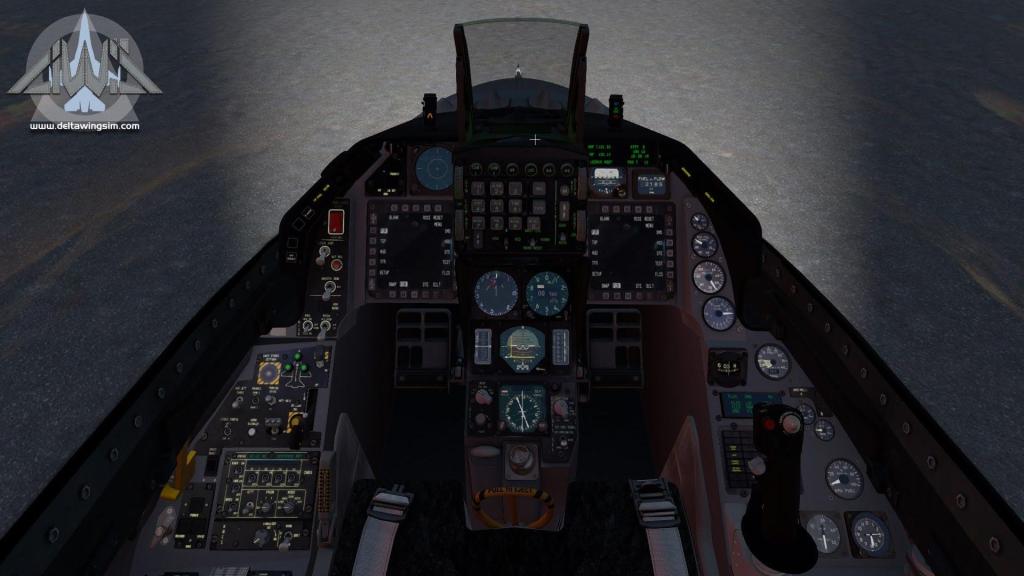














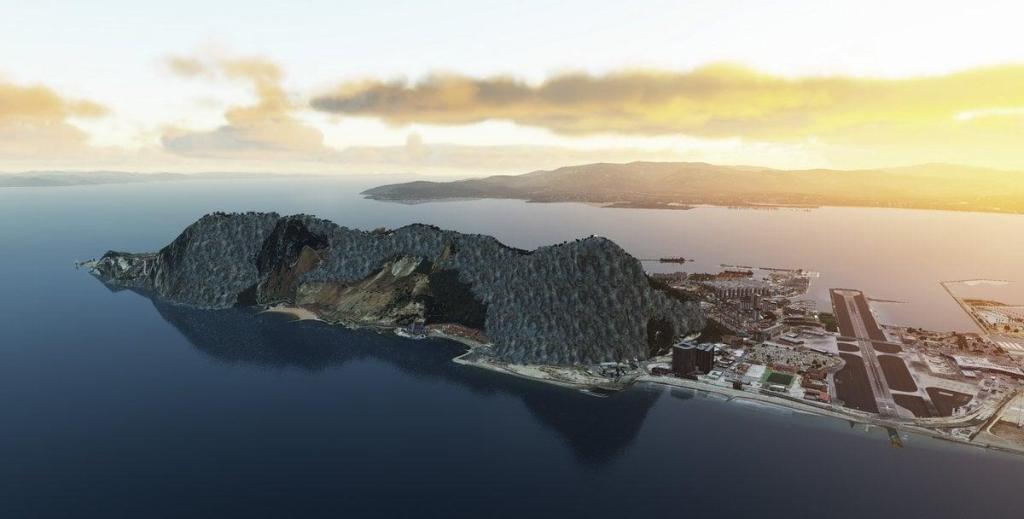


























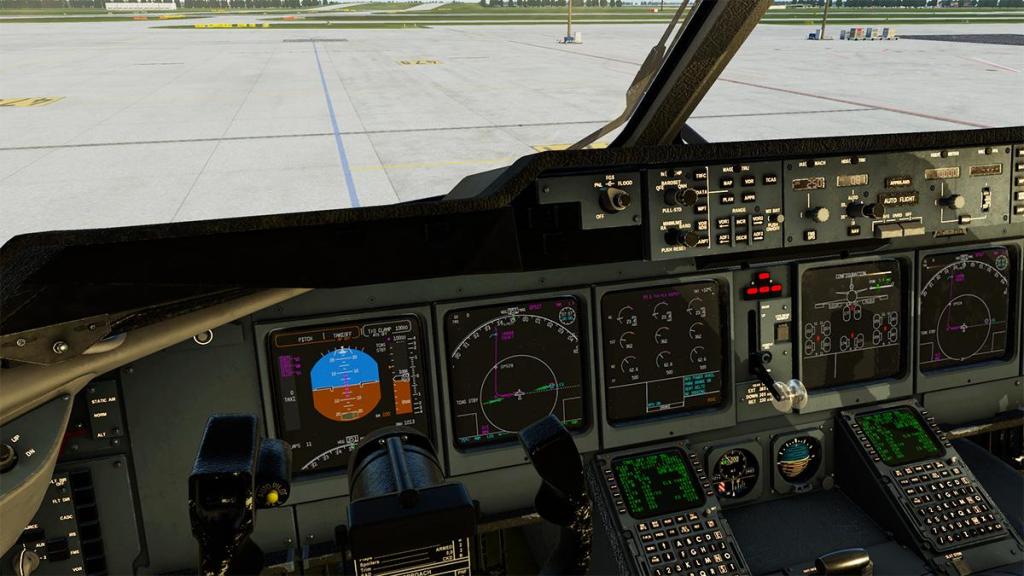


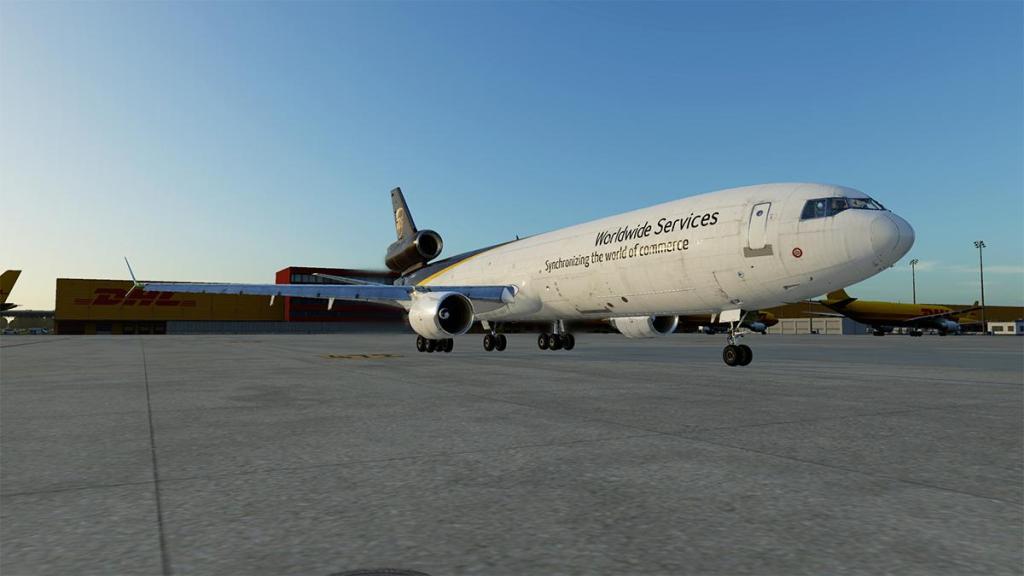
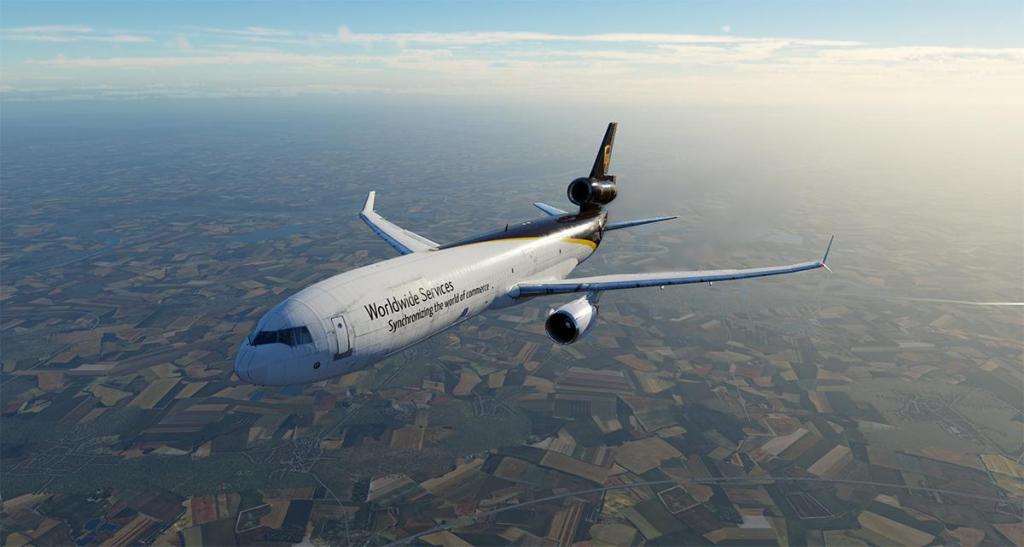








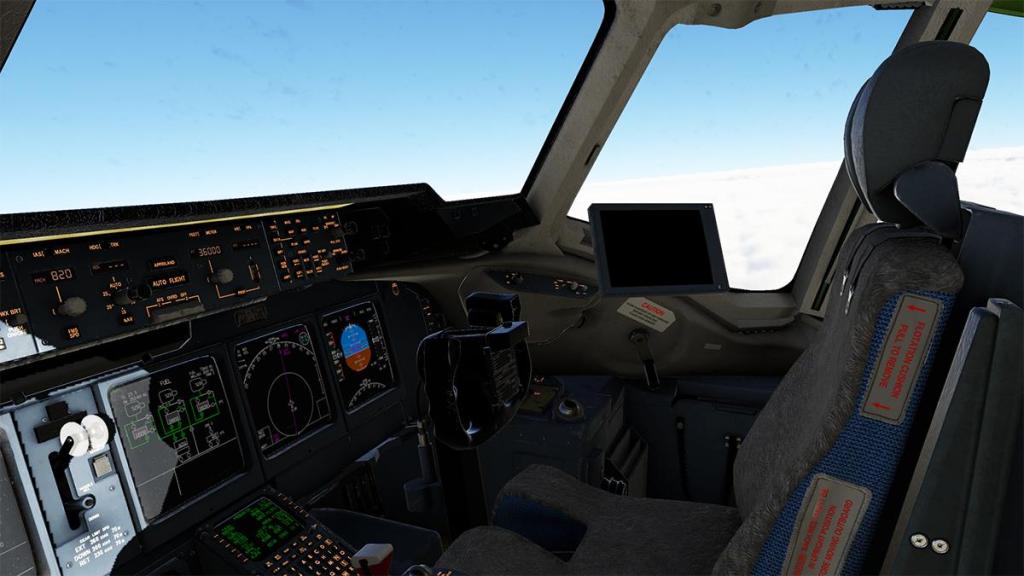



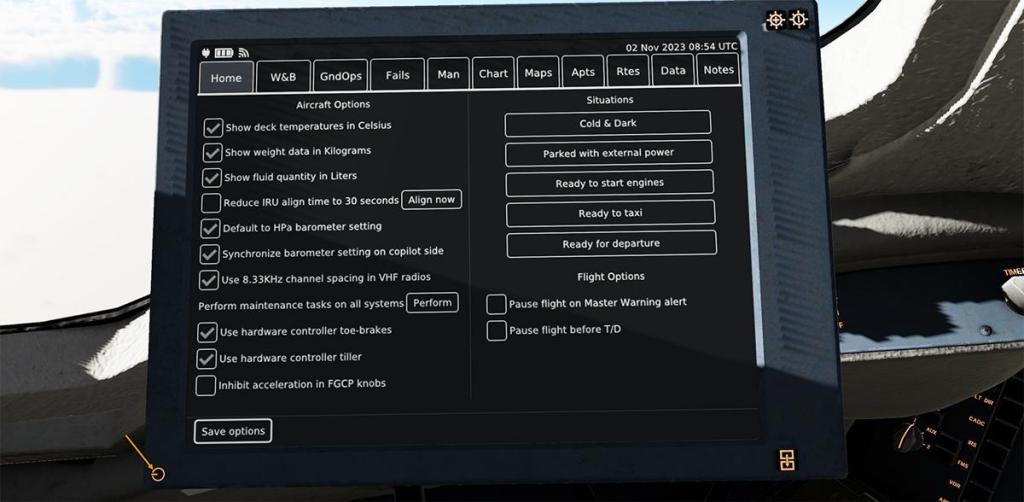







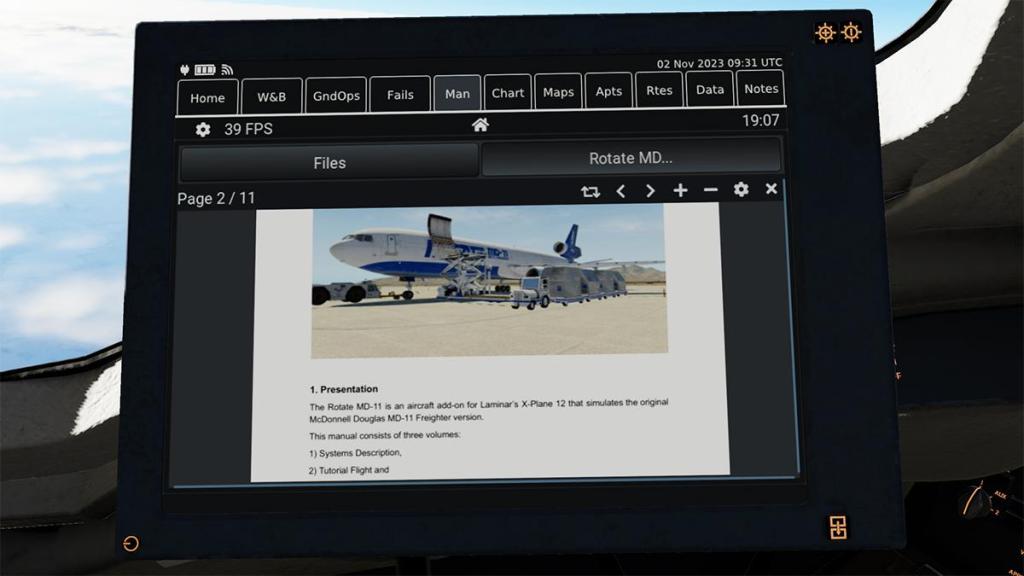









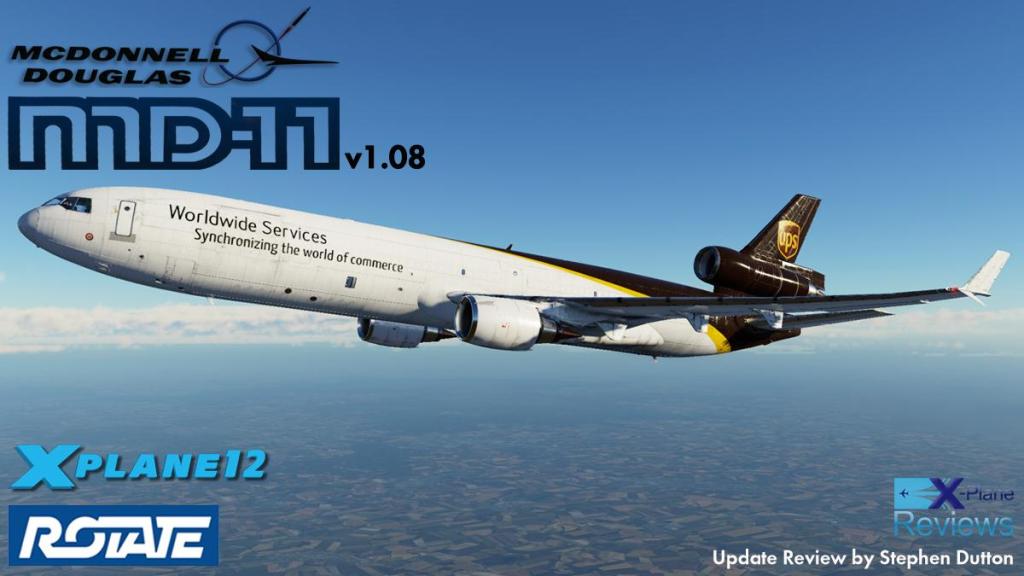







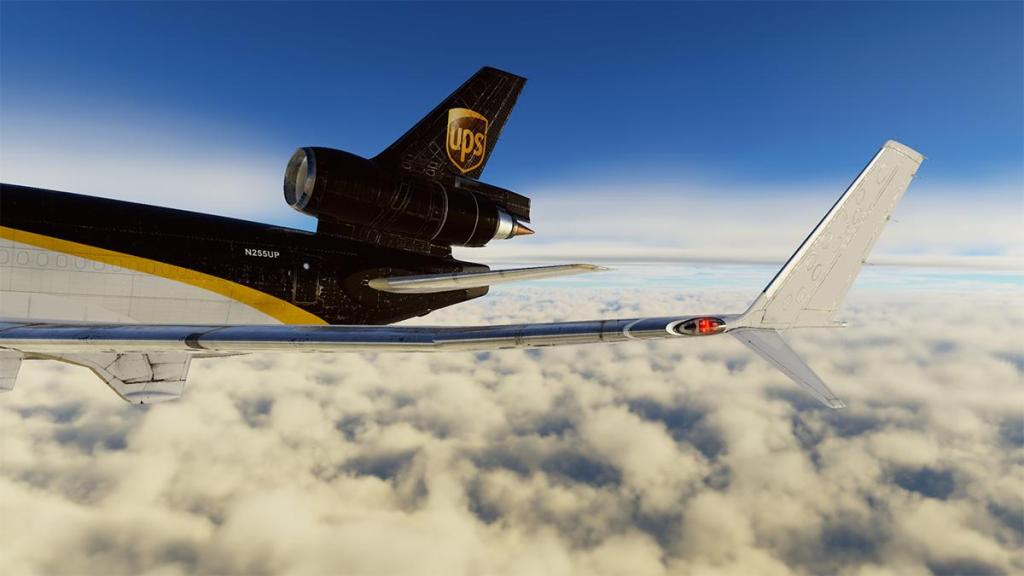
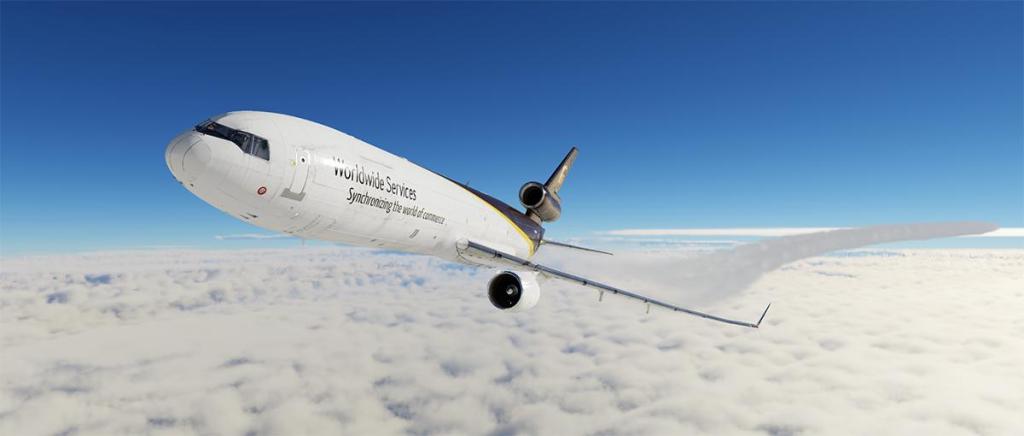





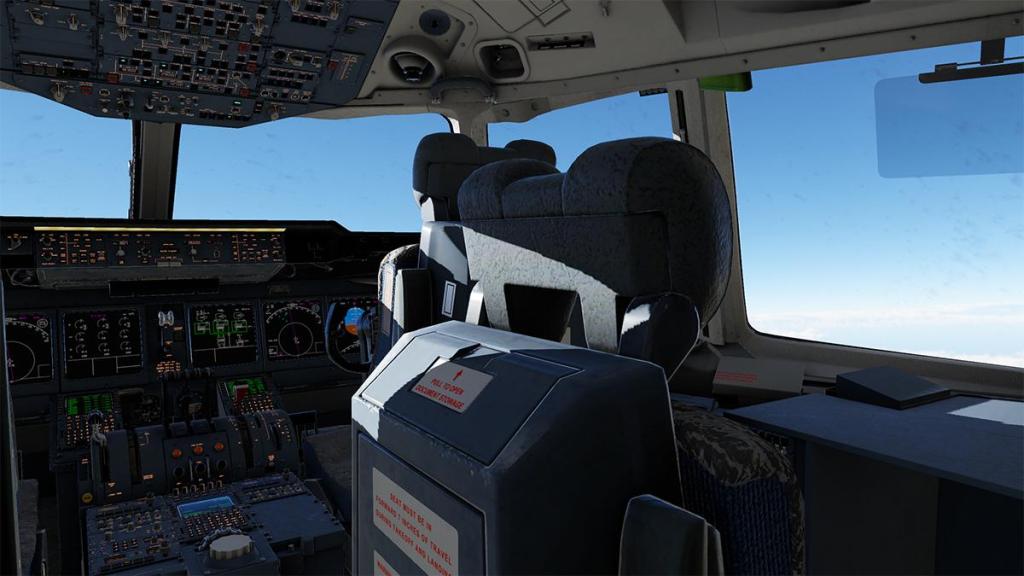


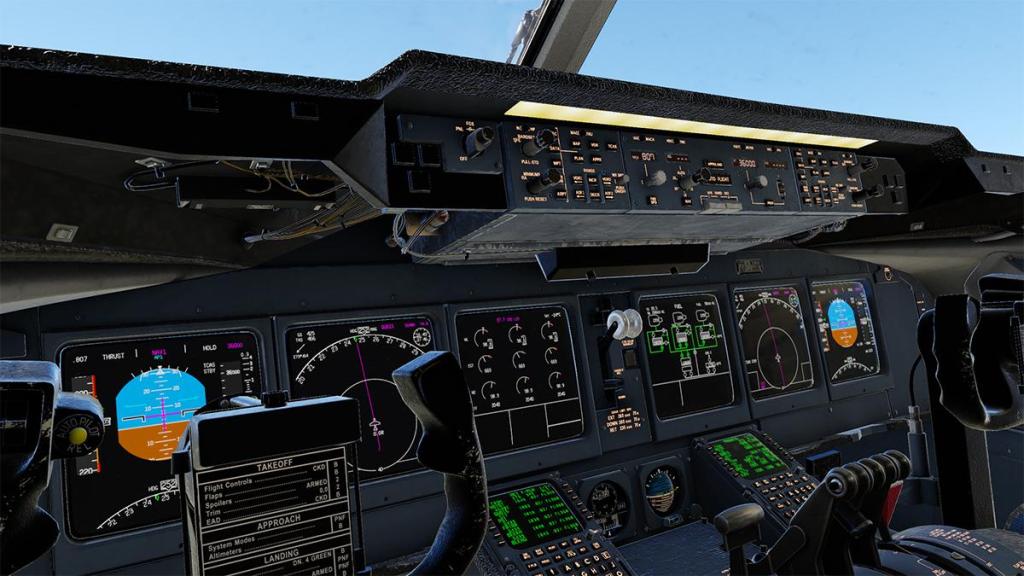

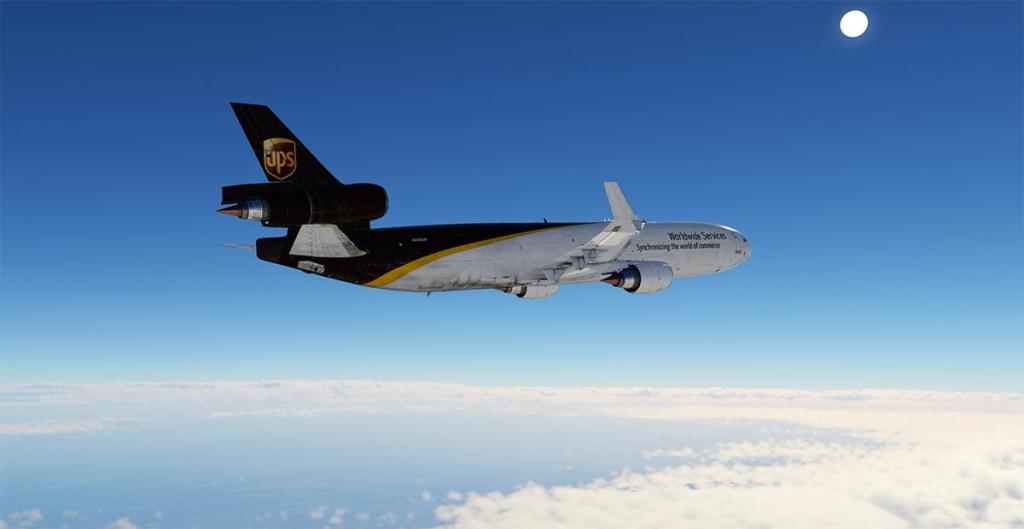










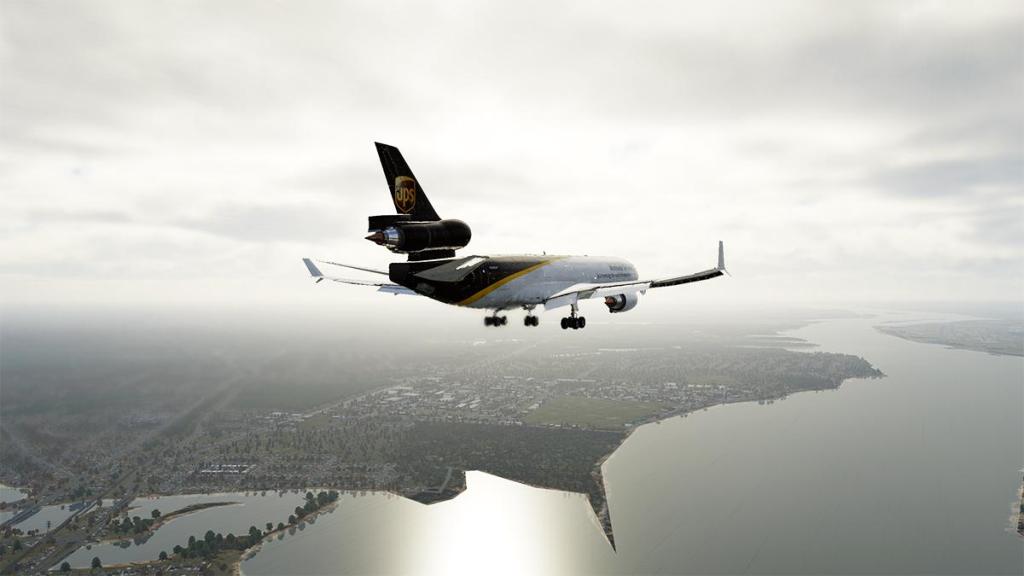



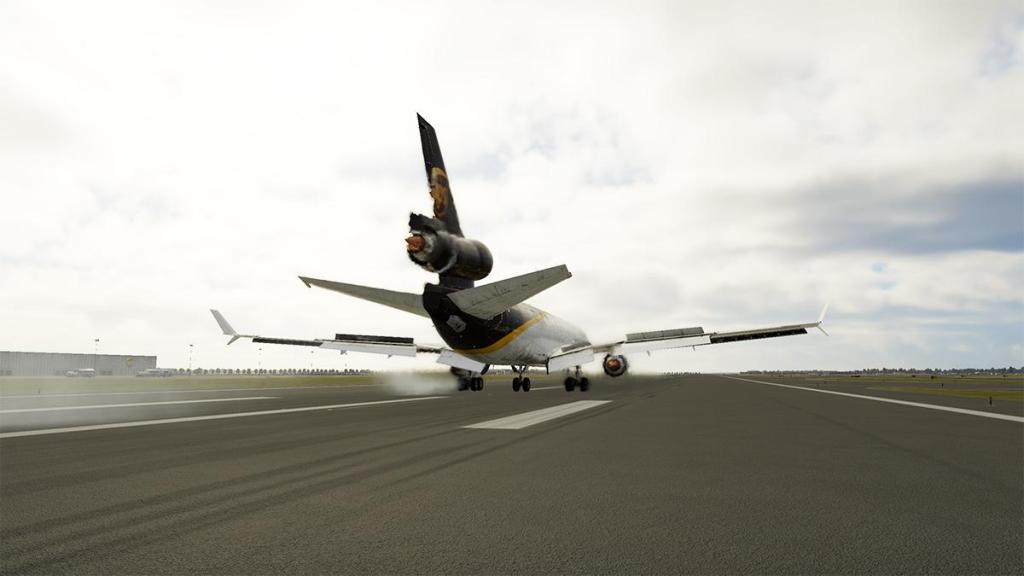



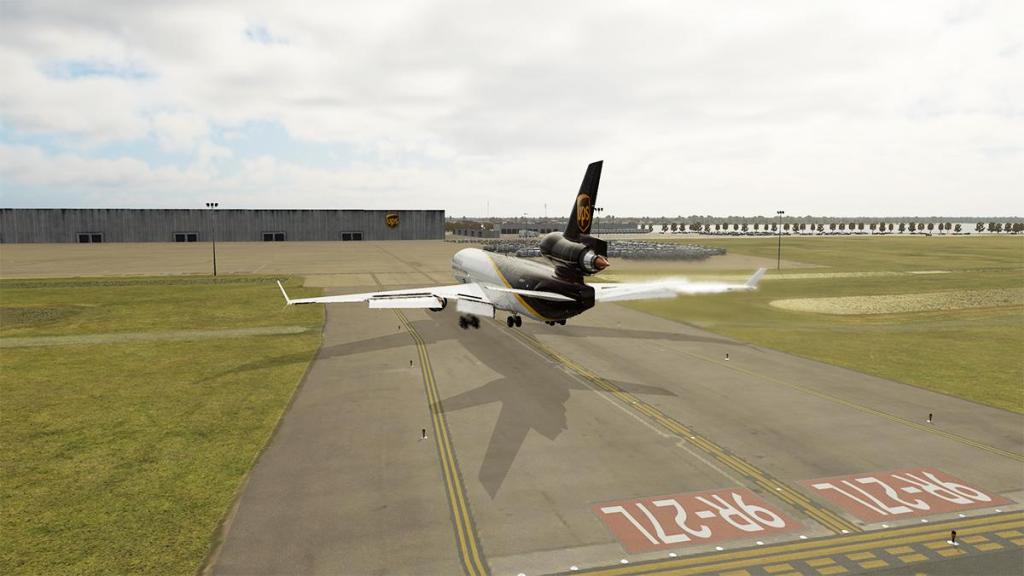



































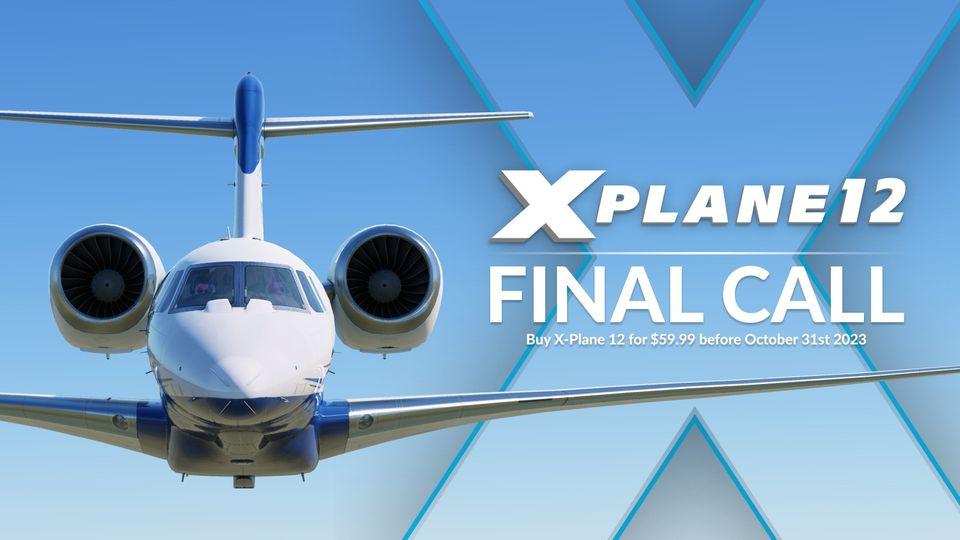
































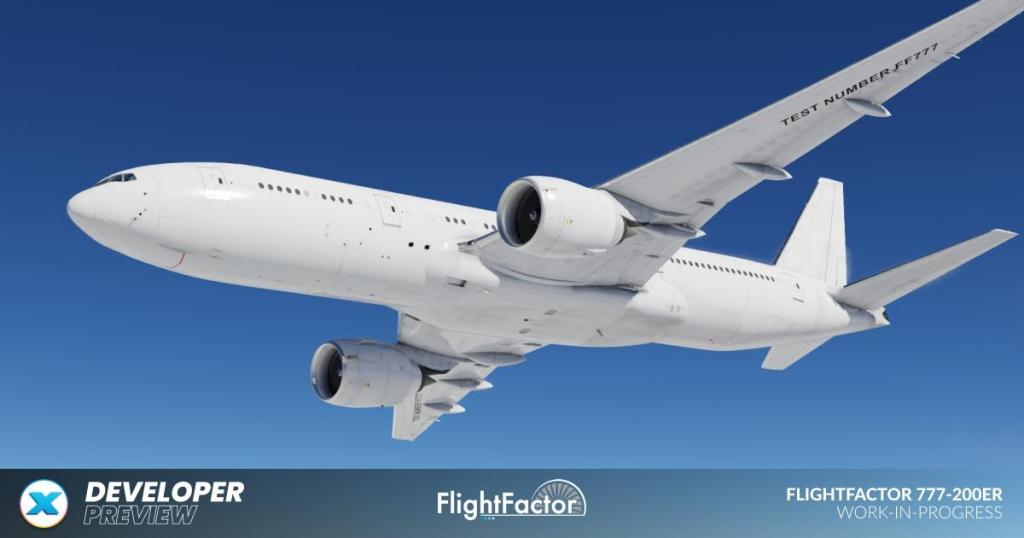



















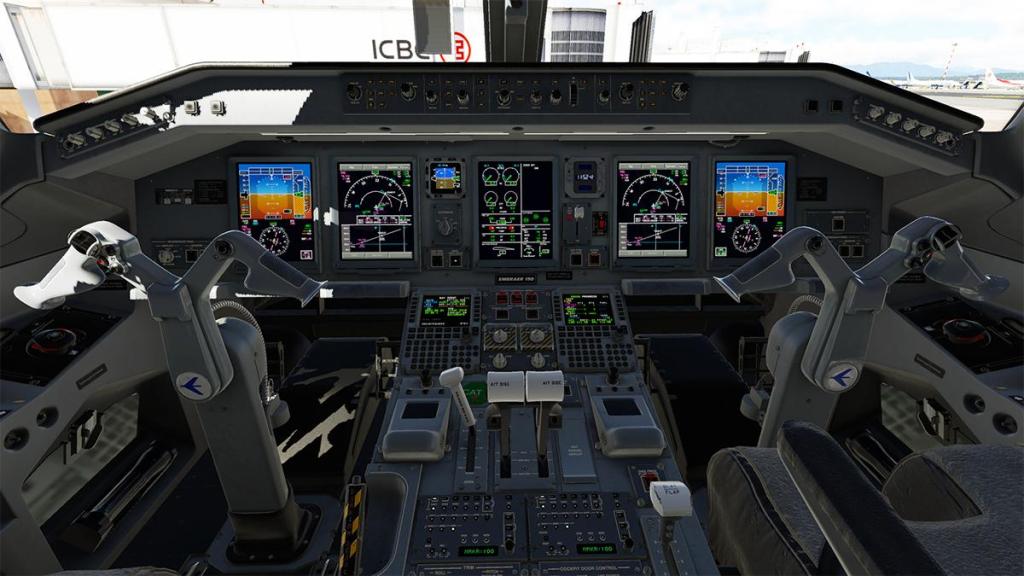








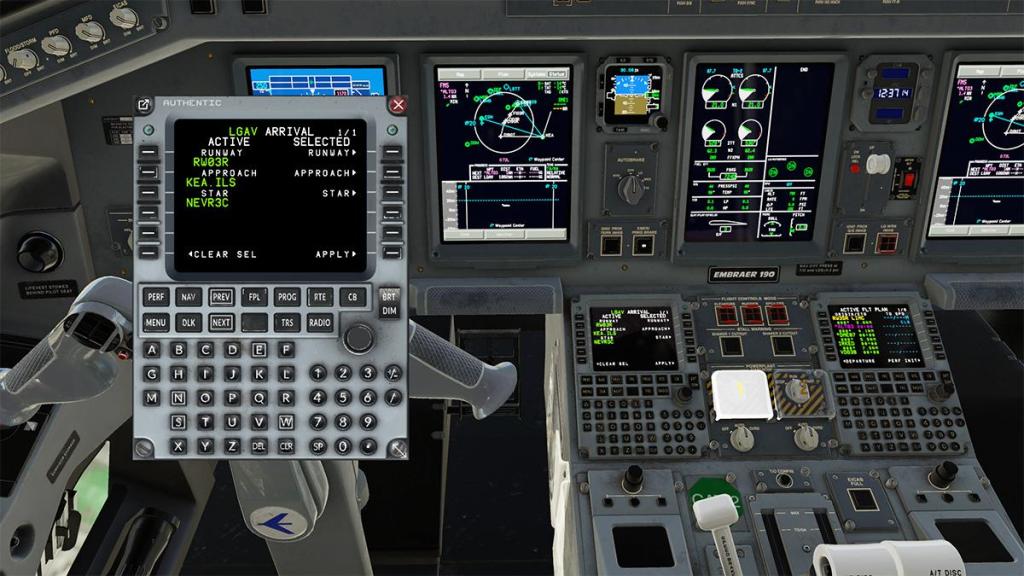







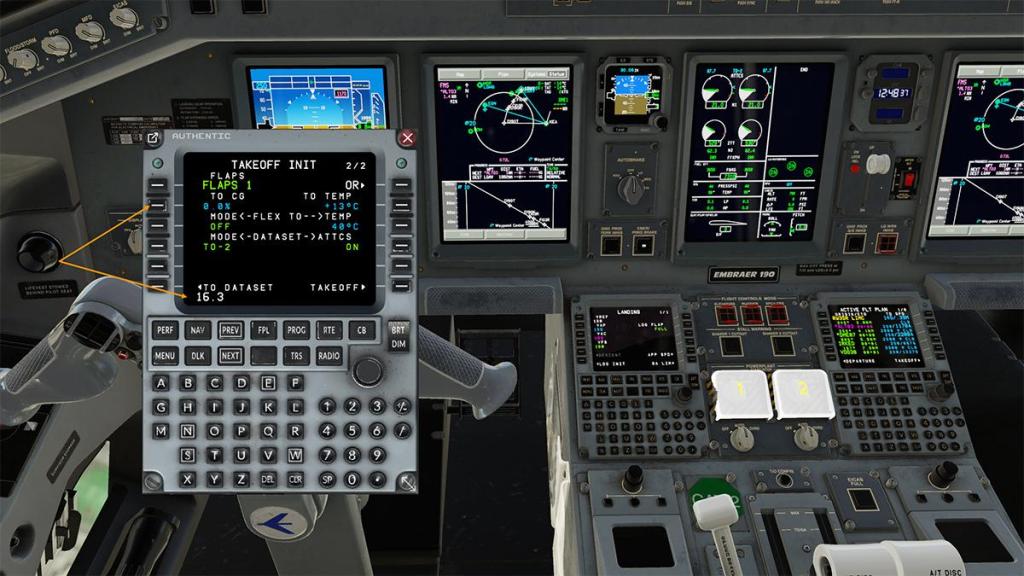

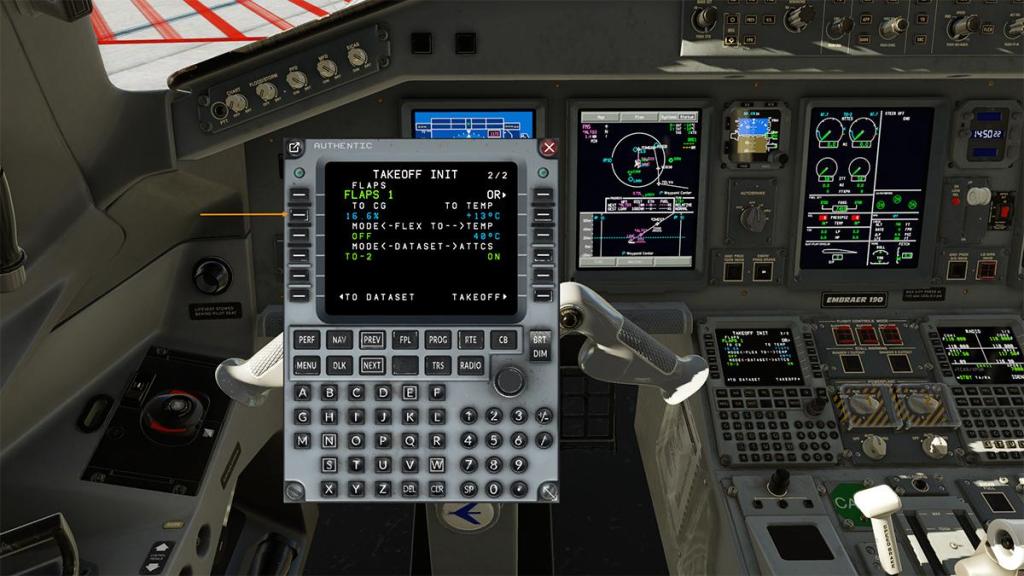


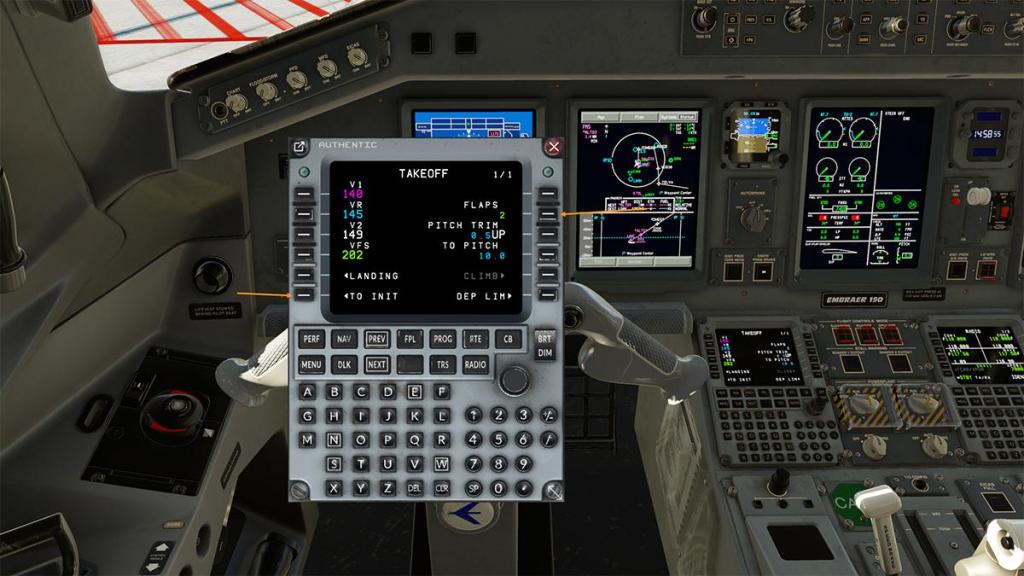




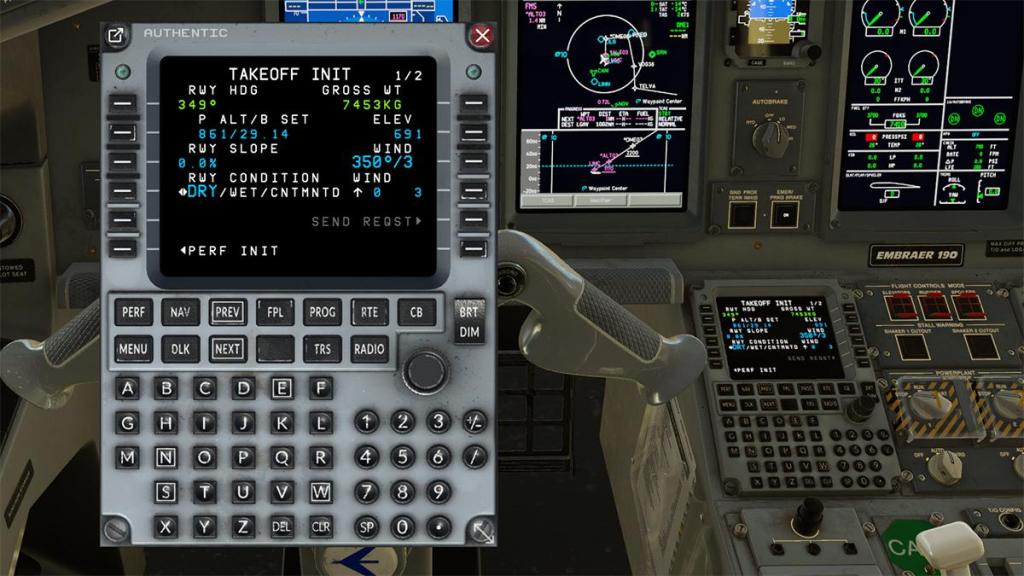






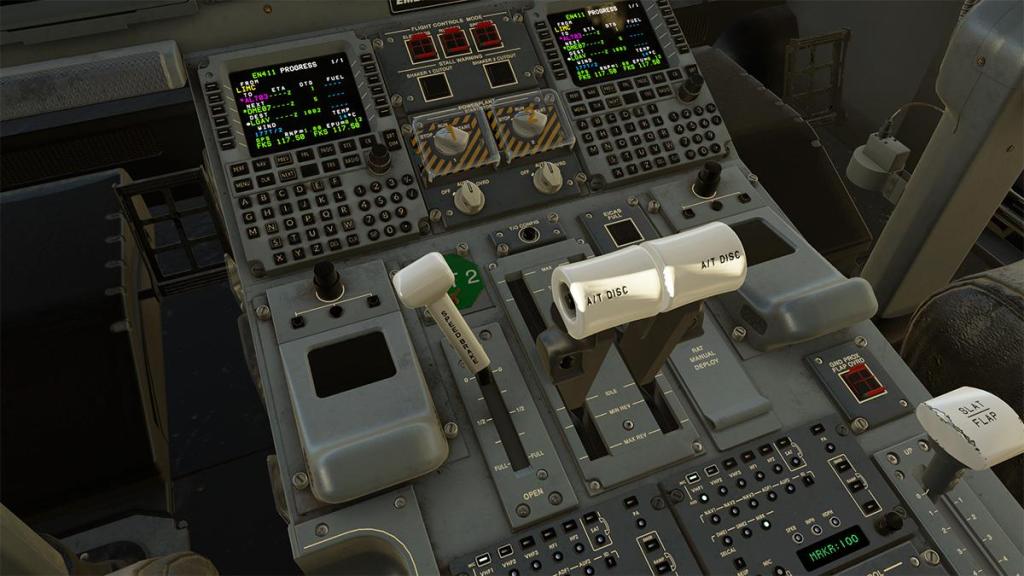
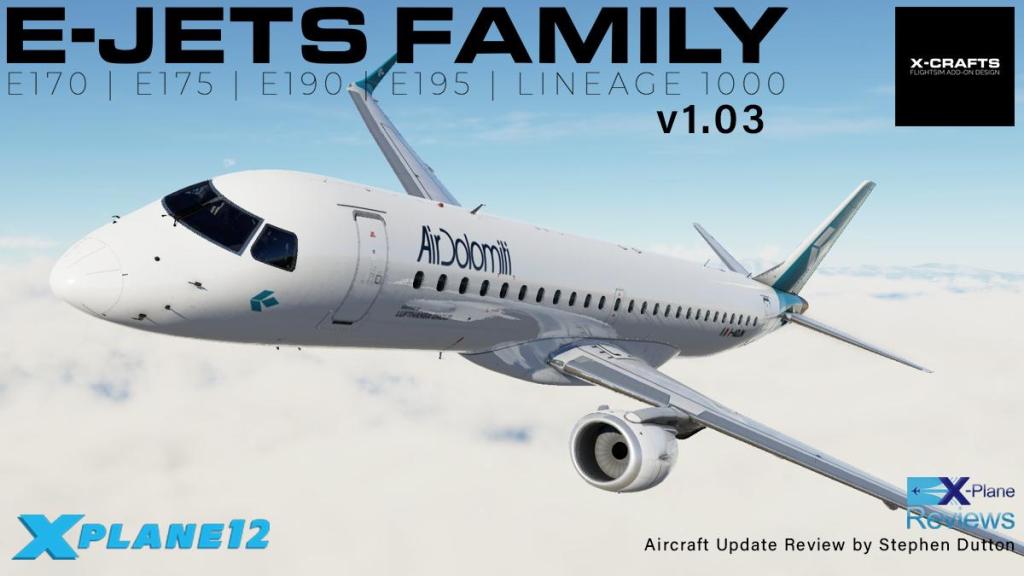





































.thumb.jpg.34027d0fc8ed7de9c2aa2acb16a589cf.jpg)
.thumb.jpg.3116a8a4ee0428379860f637358106e4.jpg)
.thumb.jpg.8c2e895b9d265398d7acc25ce5ea071e.jpg)
.thumb.jpg.f4e3b4d4553b8c774a389fe238b699c4.jpg)
.thumb.jpg.f2a3c513748f63c0d557ed7e223c84c9.jpg)
.thumb.jpg.54ad8aa128629f4d47aad13163cd9632.jpg)
.thumb.jpg.90f3834a264b1997d7d293895df2499d.jpg)
.thumb.jpg.a7abefb3e167504b0b0e22c109c960a8.jpg)
.thumb.jpg.33c91f0f27e4addf16835034c10f6f8d.jpg)
.thumb.jpg.c543d083a4346cf9e7bb330c01e116c8.jpg)
.thumb.jpg.1248e64ff3f995c211116e3cda6936e8.jpg)
.thumb.jpg.59bb6297339444b8a09333392b2e71c0.jpg)
.thumb.jpg.05ceb2ff81892f6f6a86537e165f0a2e.jpg)
.thumb.jpg.7e4f113a57f59d28b929b71b763cf6c4.jpg)
.thumb.jpg.f7c5deca30367497fad1ec3080a91dca.jpg)
.thumb.jpg.8e61861b897e3ffdd5233238e6737ace.jpg)
.thumb.jpg.8c2dee824012d734d1a392fed3e1805c.jpg)
.thumb.jpg.1cde19fbd77b2971e1b1903a7a48cd47.jpg)












.thumb.jpg.2f9fb8c2ecae4fd1c697a4cd069b5522.jpg)


.thumb.jpg.687fc0d198fda16a47ad66f8f0be57a7.jpg)
.thumb.jpg.9e005d69e8b9e3ce76243303642c56b4.jpg)











